Treatment of conditions associated with hyperinsulinaemia
Landau , et al. February 23, 2
U.S. patent number 10,925,881 [Application Number 15/121,964] was granted by the patent office on 2021-02-23 for treatment of conditions associated with hyperinsulinaemia. This patent grant is currently assigned to Tensha Therapeutics, Inc.. The grantee listed for this patent is Tensha Therapeutics, Inc.. Invention is credited to Michael H. Kagey, Steven B. Landau.

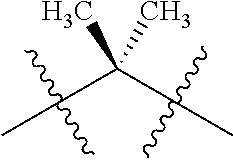
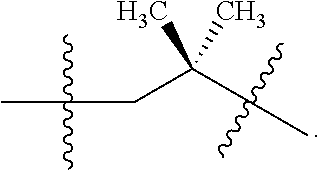
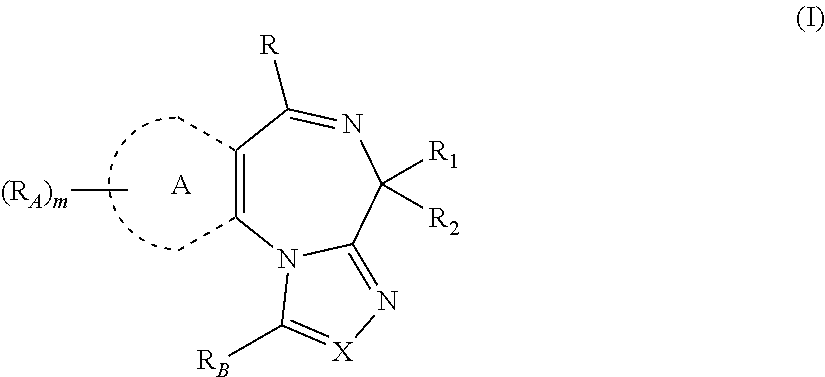

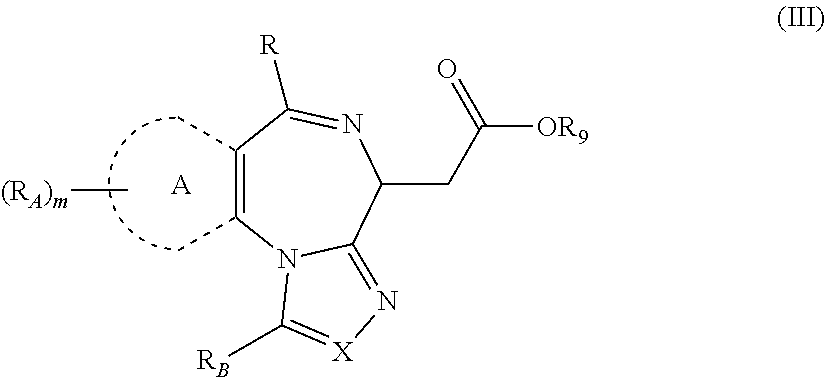
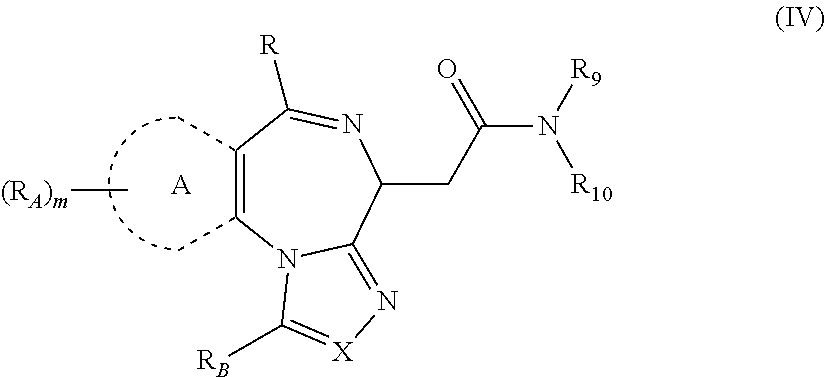
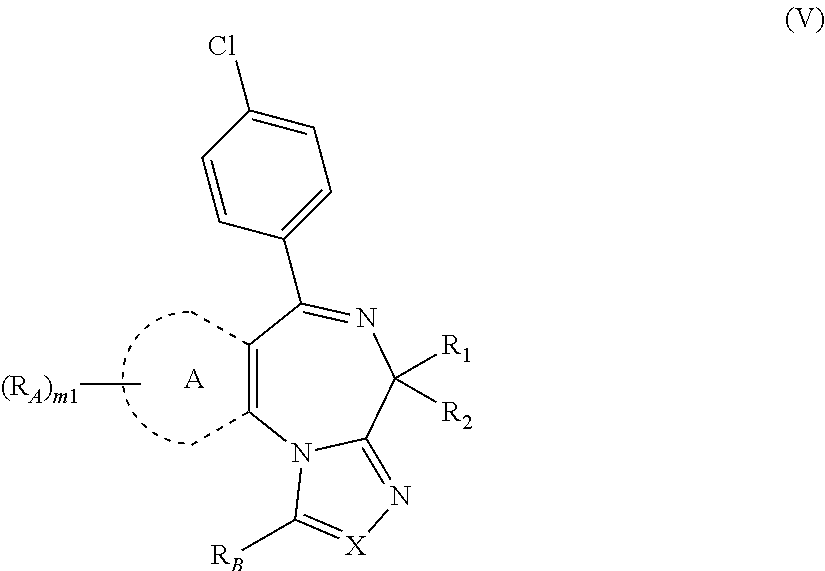
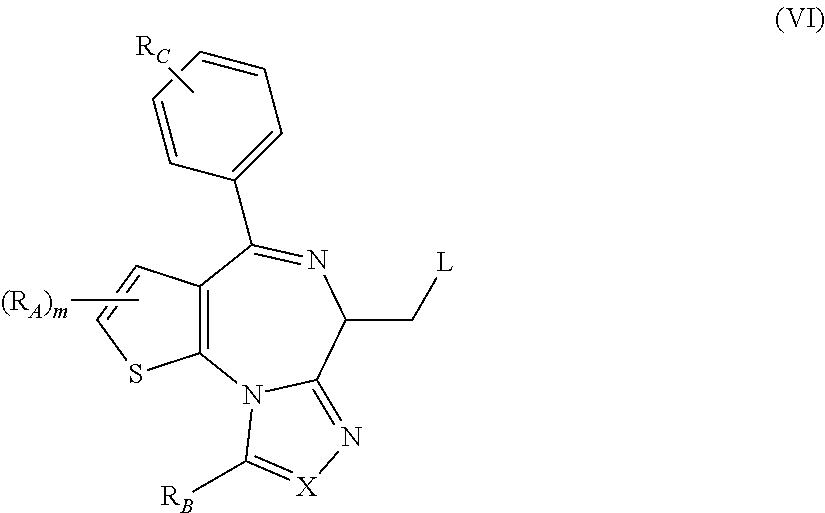

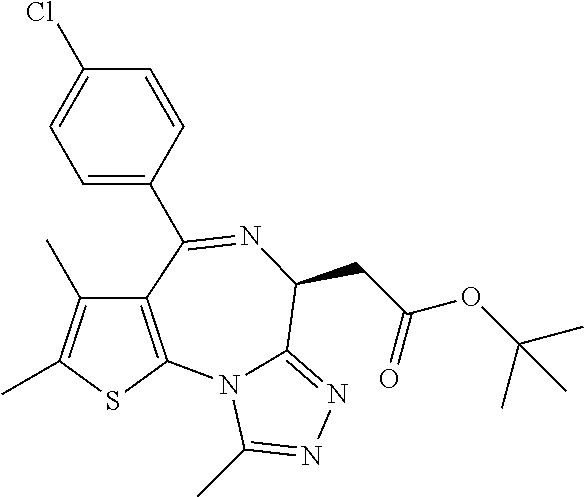

View All Diagrams
| United States Patent | 10,925,881 |
| Landau , et al. | February 23, 2021 |
Treatment of conditions associated with hyperinsulinaemia
Abstract
The present invention relates to treatment of a condition associated with hyperinsulinaemia using the compounds described herein.
| Inventors: | Landau; Steven B. (Wellesley, MA), Kagey; Michael H. (Arlington, MA) | ||||||||||
|---|---|---|---|---|---|---|---|---|---|---|---|
| Applicant: |
|
||||||||||
| Assignee: | Tensha Therapeutics, Inc.
(South San Francisco, CA) |
||||||||||
| Family ID: | 1000005375154 | ||||||||||
| Appl. No.: | 15/121,964 | ||||||||||
| Filed: | February 27, 2015 | ||||||||||
| PCT Filed: | February 27, 2015 | ||||||||||
| PCT No.: | PCT/US2015/018118 | ||||||||||
| 371(c)(1),(2),(4) Date: | August 26, 2016 | ||||||||||
| PCT Pub. No.: | WO2015/131113 | ||||||||||
| PCT Pub. Date: | September 03, 2015 |
Prior Publication Data
| Document Identifier | Publication Date | |
|---|---|---|
| US 20170209461 A1 | Jul 27, 2017 | |
Related U.S. Patent Documents
| Application Number | Filing Date | Patent Number | Issue Date | ||
|---|---|---|---|---|---|
| 61946682 | Feb 28, 2014 | ||||
| 62019777 | Jul 1, 2014 | ||||
| 62054620 | Sep 24, 2014 | ||||
| Current U.S. Class: | 1/1 |
| Current CPC Class: | A61K 31/5517 (20130101) |
| Current International Class: | A61P 29/00 (20060101); A61K 31/5517 (20060101) |
References Cited [Referenced By]
U.S. Patent Documents
| 2951540 | September 1960 | Hawkins |
| 3681343 | August 1972 | Hester, Jr. |
| 3709898 | January 1973 | Hester, Jr. |
| 3812259 | May 1974 | Collins |
| 4621083 | November 1986 | Casals-Stenzel et al. |
| 5104543 | April 1992 | Brandt et al. |
| 5593988 | January 1997 | Tahara et al. |
| 5712274 | January 1998 | Sueoka et al. |
| 5721231 | February 1998 | Moriwaki et al. |
| 5753649 | May 1998 | Tahara et al. |
| 5760032 | June 1998 | Kitajima et al. |
| 5846972 | December 1998 | Buckman et al. |
| 5854238 | December 1998 | Kempen |
| 6312215 | November 2001 | Walker |
| 6444664 | September 2002 | Princen et al. |
| 6861422 | March 2005 | Hoffmann et al. |
| 7015213 | March 2006 | Bigg et al. |
| 7528143 | May 2009 | Noronha et al. |
| 7528153 | May 2009 | Aerts |
| 7589167 | September 2009 | Zhou et al. |
| 7750152 | July 2010 | Hoffman et al. |
| 7786299 | August 2010 | Hoffmann et al. |
| 7816530 | October 2010 | Grauert |
| 7825246 | November 2010 | Noronha et al. |
| 8003786 | August 2011 | Hoffmann et al. |
| 8044042 | October 2011 | Adachi et al. |
| 8133900 | March 2012 | Hood et al. |
| 8138199 | March 2012 | Noronha et al. |
| 8338464 | December 2012 | Melnick et al. |
| 8476260 | July 2013 | Miyoshi et al. |
| 8604042 | December 2013 | Noronha et al. |
| 8981083 | March 2015 | Bradner |
| 9301962 | April 2016 | Bradner et al. |
| 9320711 | April 2016 | Natoli et al. |
| 9320741 | April 2016 | Bradner |
| 9763956 | September 2017 | Bernstein et al. |
| 9789120 | October 2017 | Bradner et al. |
| 9815849 | November 2017 | Bradner et al. |
| 10124009 | November 2018 | Landau |
| 10407441 | September 2019 | Bradner |
| 2002/0032200 | March 2002 | Cai et al. |
| 2002/0169158 | November 2002 | Hunt et al. |
| 2003/0130268 | July 2003 | Sagara et al. |
| 2003/0216758 | November 2003 | Signore |
| 2004/0043378 | March 2004 | Zhou et al. |
| 2004/0176380 | September 2004 | Hoffmann et al. |
| 2006/0074088 | April 2006 | Munzert et al. |
| 2006/0142257 | June 2006 | Nieschlag et al. |
| 2006/0223055 | October 2006 | Howley et al. |
| 2007/0105839 | May 2007 | Imbach et al. |
| 2007/0111933 | May 2007 | Kopchick et al. |
| 2007/0179178 | August 2007 | Buettelmann et al. |
| 2007/0218135 | September 2007 | Mukharya et al. |
| 2007/0289310 | December 2007 | Dooley et al. |
| 2008/0004308 | January 2008 | Dhanak et al. |
| 2008/0081781 | April 2008 | Lippa et al. |
| 2008/0305113 | December 2008 | Kwon et al. |
| 2009/0012064 | January 2009 | Sagara et al. |
| 2009/0238828 | September 2009 | Munzert et al. |
| 2009/0280115 | November 2009 | Maier et al. |
| 2009/0281191 | November 2009 | Rangwala et al. |
| 2010/0041643 | February 2010 | Adachi et al. |
| 2010/0227838 | September 2010 | Shah et al. |
| 2010/0249412 | September 2010 | Linz et al. |
| 2010/0286127 | November 2010 | Miyoshi et al. |
| 2011/0028405 | February 2011 | Harrison et al. |
| 2011/0098288 | April 2011 | Major et al. |
| 2011/0143651 | June 2011 | Marocchi et al. |
| 2011/0172231 | July 2011 | Baenteli et al. |
| 2011/0201606 | August 2011 | Garcia-Echeverria et al. |
| 2011/0212077 | September 2011 | Noronha et al. |
| 2011/0245245 | October 2011 | Mortensen et al. |
| 2012/0014979 | January 2012 | Dent |
| 2012/0040961 | February 2012 | Gray et al. |
| 2012/0202798 | August 2012 | Sagara et al. |
| 2012/0244209 | September 2012 | Roth et al. |
| 2012/0329803 | December 2012 | Linz et al. |
| 2013/0184264 | July 2013 | Bradner et al. |
| 2013/0210813 | August 2013 | Bradner et al. |
| 2013/0245013 | September 2013 | Mohr et al. |
| 2013/0252331 | September 2013 | Bradner |
| 2013/0261109 | October 2013 | Miyoshi et al. |
| 2013/0274239 | October 2013 | Gangloff et al. |
| 2013/0280332 | October 2013 | Moss et al. |
| 2014/0011862 | January 2014 | Bradner et al. |
| 2014/0243322 | August 2014 | Arnold et al. |
| 2015/0054642 | February 2015 | Carruthers |
| 2015/0335656 | November 2015 | Miyoshi et al. |
| 2016/0033519 | February 2016 | Bradner et al. |
| 2016/0168154 | June 2016 | Marineau et al. |
| 2016/0231314 | August 2016 | Ryan et al. |
| 2016/0279141 | September 2016 | Bradner et al. |
| 2016/0332993 | November 2016 | Bradner et al. |
| 2016/0347749 | December 2016 | Bradner et al. |
| 2017/0008895 | January 2017 | Bradner et al. |
| 2017/0029437 | February 2017 | Bradner et al. |
| 2017/0209461 | July 2017 | Landau et al. |
| 2017/0333444 | November 2017 | Landau et al. |
| 2017/0360801 | December 2017 | Sotomayor et al. |
| 2018/0193350 | July 2018 | Landau et al. |
| 2018/0222917 | August 2018 | Bradner et al. |
| 2018/0237454 | August 2018 | Bradner et al. |
| 2020806 | Jan 1991 | CA | |||
| 2710740 | Jul 2009 | CA | |||
| 622019 | Mar 1981 | CH | |||
| 1227555 | Sep 1999 | CN | |||
| 100348600 | Nov 2007 | CN | |||
| 101910182 | Dec 2010 | CN | |||
| 103037865 | Apr 2013 | CN | |||
| 3724164 | Jan 1988 | DE | |||
| 0 087 850 | Sep 1983 | EP | |||
| 0 368 175 | May 1990 | EP | |||
| 0 387 613 | Sep 1990 | EP | |||
| 0 934 940 | Aug 1999 | EP | |||
| 0 989 131 | Mar 2000 | EP | |||
| 1 297 836 | Apr 2003 | EP | |||
| 1 887 008 | Feb 2008 | EP | |||
| 2 239 264 | Oct 2010 | EP | |||
| 2329668 | May 1977 | FR | |||
| 1-299231 | Dec 1989 | JP | |||
| 6-157316 | Jun 1994 | JP | |||
| H10500998 | Jan 1998 | JP | |||
| 11-228576 | Aug 1999 | JP | |||
| 11-512107 | Oct 1999 | JP | |||
| 3001979 | Jan 2000 | JP | |||
| 3096299 | Oct 2000 | JP | |||
| 2006519236 | Aug 2006 | JP | |||
| 2008/156311 | Jul 2008 | JP | |||
| 2013510123 | Mar 2013 | JP | |||
| 2013/532130 | Aug 2013 | JP | |||
| 5913292 | Apr 2016 | JP | |||
| 61-87684 | Aug 2017 | JP | |||
| 10-2000-0016732 | Mar 2000 | KR | |||
| 2294761 | Mar 2007 | RU | |||
| 201217382 | May 2012 | TW | |||
| WO-97/13537 | Apr 1997 | WO | |||
| WO-97/37705 | Oct 1997 | WO | |||
| WO-97/47622 | Dec 1997 | WO | |||
| WO-98/11111 | Mar 1998 | WO | |||
| WO-99/34850 | Jul 1999 | WO | |||
| WO-01/95912 | Dec 2001 | WO | |||
| WO-2006/129623 | Dec 2006 | WO | |||
| WO-2007/056117 | May 2007 | WO | |||
| WO-2007/095188 | Aug 2007 | WO | |||
| WO-2008/083056 | Jul 2008 | WO | |||
| WO-2008/137081 | Nov 2008 | WO | |||
| WO-2009/084693 | Jul 2009 | WO | |||
| WO-2010/015387 | Feb 2010 | WO | |||
| WO-2010/049466 | May 2010 | WO | |||
| WO-2011/054553 | May 2011 | WO | |||
| WO-2011/054841 | May 2011 | WO | |||
| WO-2011/054843 | May 2011 | WO | |||
| WO-2011/054844 | May 2011 | WO | |||
| WO-2011/054845 | May 2011 | WO | |||
| WO-2011/054846 | May 2011 | WO | |||
| WO-2011/054848 | May 2011 | WO | |||
| WO-2011/143657 | Nov 2011 | WO | |||
| WO-2011/143660 | Nov 2011 | WO | |||
| WO-2011/143669 | Nov 2011 | WO | |||
| WO 2011143651 | Nov 2011 | WO | |||
| WO-2011/161031 | Dec 2011 | WO | |||
| WO-2011/162845 | Dec 2011 | WO | |||
| WO-2012/050907 | Apr 2012 | WO | |||
| WO-2012/075383 | Jun 2012 | WO | |||
| WO-2012/075456 | Jun 2012 | WO | |||
| WO-2012095505 | Jul 2012 | WO | |||
| WO-2012/116170 | Aug 2012 | WO | |||
| WO-2012/118812 | Sep 2012 | WO | |||
| WO-2013/019710 | Feb 2013 | WO | |||
| WO-2013/030450 | Mar 2013 | WO | |||
| WO-2013/033268 | Mar 2013 | WO | |||
| WO-2013/033269 | Mar 2013 | WO | |||
| WO-2013/033270 | Mar 2013 | WO | |||
| WO-2013/033420 | Mar 2013 | WO | |||
| WO-2013/030150 | Jul 2013 | WO | |||
| WO-2013/097601 | Jul 2013 | WO | |||
| WO-2013/148197 | Oct 2013 | WO | |||
| WO-2013/192274 | Dec 2013 | WO | |||
| WO-2014/068402 | May 2014 | WO | |||
| WO-2014/071247 | May 2014 | WO | |||
| WO-2014/128070 | Aug 2014 | WO | |||
| WO-2014/128111 | Aug 2014 | WO | |||
| WO-2014/134583 | Sep 2014 | WO | |||
| WO-2014/144721 | Sep 2014 | WO | |||
| WO-2014/159392 | Oct 2014 | WO | |||
| WO-2014/193951 | Dec 2014 | WO | |||
| WO-2015/018521 | Feb 2015 | WO | |||
| WO-2015/018522 | Feb 2015 | WO | |||
| WO-2015/023938 | Feb 2015 | WO | |||
| WO-2015/054642 | Apr 2015 | WO | |||
| WO-2015/070020 | May 2015 | WO | |||
| WO-2015/081284 | Jun 2015 | WO | |||
| WO-2015/131113 | Sep 2015 | WO | |||
| WO-2016/069578 | May 2016 | WO | |||
| WO-2016/210275 | Dec 2016 | WO | |||
| WO-2017/059319 | Apr 2017 | WO | |||
Other References
|
Diamanti-Kandarakis et al., "Therapeutic effects of metformin on insulin resistance and hyperandrogenism in polycystic ovary syndrome," European Journal of Endocrinology 1998; 138: pp. 269-274. cited by examiner . Shanik et al., "Insulin Resistance and Hyperinsulinemia," Diabetes Care, (2008); 31(2): pp. S262-S268. (Year: 2008). cited by examiner . Gonzalez-Barrosa et al., "Mutations in UCP2 in Congenital Hyperinsulism Reveal a Role for Regulation of Insulin Secretion," PLoS One (2008); 3(1): pp. 1-8. (Year: 2008). cited by examiner . Sawicki et al., "Normal Blood Pressure in Patients with Insulinoma Despite Hyperinsulinemia and Insulin Resistance," J. Am. Soc. Neprhol., 1992; 3:S64-S68. (Year: 1992). cited by examiner . Final Rejection for U.S. Appl. No. 13/697,963, "Compositions and Methods for Modulating Metabolism," dated Aug. 21, 2015. cited by applicant . Final Rejection for U.S. Appl. No. 13/697,963, "Compositions and Methods for Modulating Metabolism," dated Jan. 18, 2017. cited by applicant . Final Rejection for U.S. Appl. No. 13/934,843, "Compositions and Methods for Treating Leukemia," dated Oct. 30, 2015. cited by applicant . Non-Final Rejection for U.S. Appl. No. 13/697,963, "Compositions and Methods for Modulating Metabolism," dated May 31, 2016. cited by applicant . Non-Final Rejection for U.S. Appl. No. 13/934,843, "Compositions and Methods for Treating Leukemia," dated Jan. 25, 2017. cited by applicant . Non-Final Rejection for U.S. Appl. No. 14/977,343, "Male Contraeptive Compositions and Methods of Use," dated Aug. 24, 2016. cited by applicant . Non-Final Rejection for U.S. Appl. No. 15/034,922, "Combination Therapy for Cancer Using Bromodomain and Extra-Terminal (Bet) Protein Inhibitors," dated Mar. 8, 2018. cited by applicant . Non-Final Rejection for U.S. Appl. No. 15/061,576, "Compositions and Methods for Treating Neoplasia, Inflammatory Disease and Other Disorders," dated Aug. 2, 2017. cited by applicant . Notice of Allowance for U.S. Appl. No. 14/977,343, "Male Contraeptive Compositions and Methods of Use," dated Jun. 16, 2017. cited by applicant . Notice of Allowance for U.S. Appl. No. 13/698,006, "Male Contraceptive Compositions and Methods of Use," dated Sep. 3, 2015. cited by applicant . Notice of Allowance for U.S. Appl. No. 13/934,843 dated Jul. 13, 2017. cited by applicant . notice of Allowance for U.S. Appl. No. 14/977,343, "Male Contraeptive Compositions and Methods of Use," dated Feb. 13, 2017. cited by applicant . Notice of Allowance, U.S. Appl. No. 13/698,010, dated Aug. 21, 2014. cited by applicant . Notice of Allowance, U.S. Appl. No. 14/502,840, dated Dec. 4, 2015. cited by applicant . Office Action, U.S. Appl. No. 13/697,963, dated Nov. 21, 2014. cited by applicant . Office Action, U.S. Appl. No. 13/698,006, dated Apr. 10, 2014. cited by applicant . Office Action, U.S. Appl. No. 13/698,006, dated Oct. 23, 2014. cited by applicant . Office Action, U.S. Appl. No. 13/698,006, dated Sep. 26, 2013. cited by applicant . Office Action, U.S. Appl. No. 13/934,843, dated Mar. 23, 2015. cited by applicant . Office Action, U.S. Appl. No. 15/522,222, dated Mar. 2, 2018. cited by applicant . Requirement for Restriction/Election for U.S. Appl. No. 13/697,963, "Compositions and Methods for Modulating Metabolism," dated Mar. 20, 2014. cited by applicant . Requirement for Restriction/Election for U.S. Appl. No. 13/934,843, "Compositions and Methods for Treating Leukemia," dated Jul. 1, 2014. cited by applicant . Requirement for Restriction/Election for U.S. Appl. No. 15/034,922, "Combination Therapy for Cancer Using Bromodomain and Extra-Terminal (BET) Protein Inhibitors," dated Apr. 21, 2017. cited by applicant . Requirement for Restriction/Election for U.S. Appl. No. 15/061,576, "Compositions and Methods for Treating Neoplasia, Inflammatory Disease and Other Disorders," dated Feb. 15, 2017. cited by applicant . Abbate, et al., "Structure of the papillomavirus DNA-tethering complex E2:Brd4 and a peptide that ablates HPV chromosomal association," Mol Cell, 24(6): 877-889, (2006). cited by applicant . Acosta et al., "Amifostine Impairs p53-mediated Apoptosis of Human Myeloid Leukemia Cells," Molecular Cancer Therapeutics, 2: 893-900 (2003). cited by applicant . Anders et al., "Genome-wide Localization of Small Molecules," Nat Biotechnol, 32(1): 92-96 (2014). cited by applicant . Arango, et al., "Reversible Azoospermia in a Patient Treated with Triazolam," Eur J Contracept Reprod Health Care, 1(3): 293-294 (1996). cited by applicant . Bartholomeeusen et al., "Bromodomain and Extra-terminal (BET) Bromodomain Inhibition Activate Transcription via Transient Release of Positive Transcription Elongation Factor b (P-TEFb) from 7SK Small Nuclear Ribonucleoprotein," J Biol Chem, 287(43): 36609-36619 (2012). cited by applicant . Baud et al., "Chemical Biology. A Bump-and-hole Approach to Engineer Controlled Selectivity of BET Bromodomain Chemical Probes," Science, 346(6209): 638-641 (2014). cited by applicant . Berge et al., "Pharmaceutical Salts," J Pharm Sci, 66(1): 1-19 (1977). cited by applicant . Berkovits, et al., "The First Bromodomain of the Testis-Specific Double Bromodomain Protein Brdt is Required for Chromocenter Organization That is Modulated by Genetic Background," Dev Biol, 360(2): 358-368 (2011). cited by applicant . Berkovits, et al., "The Role of the Double Bromodomain-Containing BET Genes During Mammalian Spermatogenesis," Curr Top Dev Biol, 102: 293-326 (2013). cited by applicant . Buchdunger, et al., "Inhibition of the AbI Protein-Tyrosine Kinase In Vitro and In Vivo by a 2-Phenylaminopyrimidine Derivative," Cancer Res, 56(1): 100-104 (1996). cited by applicant . Buchdunger, et al., "Selective inhibition of the platelet-derived growth factor signal transduction pathway by a protein-tyrosine kinase inhibitor of the 2-phenylaminopyrimidine class," Proc Natl Acad Sci, 92(7): 2558-2562 (1995). cited by applicant . Bullock, et al., "Structural basis of Inhibitor Specificity of the Human Protooncogene Proviral Insertion site in Moloney Murine lLeukemia virus (PIM-1) kinase," J Med Chem, 48(24): 7604-7614 (2005). cited by applicant . Cellai, et al., "Mechanistic Insight Into WEB-2170-induced Apoptosis in Human Acute Myelogenous Leukemia Cells: the Crucial Role of PTEN," Exp Hematol, 37(10): 1176-1185 (2009). cited by applicant . Cellai, et al., "Specific PAF Antagonist WEB-2086 Induces Terminal Differentiation of Murine and Human Leukemia Cells," FASEB, 16(7): 733-735 (2002). cited by applicant . Chaidos et al., "Protent Antimyeloma Activity of the Novel Bromodomain Inhibitors I-BET151 and I-BET762," Blood, 123(5): 697-705 (2014). cited by applicant . Cheng et al., "Adjudin Disrupts Spermatogenesis via the Action of Some Unlikely Partners: Eps8, Arp2/3 complex, drebrin E, PAR6 and 14-3-3," Spermatogenesis, 1(4): 291-297 (2011). cited by applicant . Chesi et al., "Drug Response in a Genetically Engineered Mouse Model of Multiple Myeloma is Predictive of Clinical Efficacy," Blood, 120(2): 376-385 (2012). cited by applicant . Choi et al., "Brain Penetrant LRRK2 Inhibitor," ACS Med Chem Lett, 3(8): 658-662 (2012). cited by applicant . Cole, "Chemical probes for histone-modifying enzymes," Nat Chem Biol, 4: 590-597 (2008). cited by applicant . Crawford, et al., "Bromodomain 4 activation predicts breast cancer survival," Proc Natl Acad Sci, 105(17): 6380-6385 (2008). cited by applicant . Dawson et al., "Inhibition of BET Recruitment to Chromatin as an Effective Treatment for MLL-fusion Leukaemia," Nature, 478(7370): 529-533 (2011). cited by applicant . Delbroek et al., "Development of an Enzyme-linked Immunosorbent Assay for Detection of Cellular and in Vivo LRRK2 S935 Phosphorylation," J Pharm Biomed Anal, 76: 49-58 (2013). cited by applicant . Delmore et al., "BET Bromodomain Inhibition as a Terapeutic Strategy to Target c-Myc," cell, 146(6): 904-917 (2011). cited by applicant . Deng et al., "Structural Determinants for ERK5 (MAPK7) and Leucine Rich Repeat Kinase 2 Activities of Benzo[e]pyrimido-[5,4-b]diazepine-6(11H)-ones," Eur J Med Chem, 70: 758-767 (2013). cited by applicant . Denis, et al., "An Emerging Role for Bromodomain-Containing Proteins in Chromatin Regulation and Transcriptional Control of Adipogenesis," FEBS Lett, 584(15): 3260-3268 (2010). cited by applicant . Dey, et al., "Brd4 Marks Select Genes of Mitotic Chromatin and Directs Postmitotic Transcription," Mol Biol Cell, 20(23): 4899-4909 (2009). cited by applicant . Druker, et al., "Effects of a selective inhibitor of the AbI Tyrosine kinase on the Growth of BuAbI positive cells," Nat Med, 2(5): 561-566 (1996). cited by applicant . Druker, et al., "Efficacy and safety of a specific inhibitor of the BCR-ABL tyrosine kinase in chronic myeloid leukemia," N Engl J Med, 344: 1031-1037 (2001). cited by applicant . Elkins et al., "X-ray Crystal Structure of ERK5 (MAPK7) in Complex with a Specific Inhibitor," J Med Chem, 56(11): 4413-4421 (2013). cited by applicant . Examination Report, AU Application No. 2011252808, dated Aug. 5, 2013. cited by applicant . Extended European Search Report for European Patent Application No. 14860080.2 dated May 3, 2017. cited by applicant . Fedorov, et al., "A Systematic Interaction Map of Validated Kinase Inhibitors with Ser/Thr kinases," Proc Natl Acad Sci, 104(51): 20523-20528 (2007). cited by applicant . Filippakopoulos et al., "Targeting Bromodomains: Epigenetic Readers of Lysine Acetylation," Nat Rev Drug Discov, 13(5): 337-356 (2014). cited by applicant . Filippakopoulos, et al., "Selective Inhibition of BET Bromodomains," Nature, 468(7327): 1067-1073 (2010). cited by applicant . French, "Demystified Molecular pathology of NUT Midline Carcinomas," J Clin Pathol, 63: 492-496 (2010). cited by applicant . French, et al. "BRD4-NUT Fusion Oncogene: a Novel Mechanism in Aggressive Carcinoma," Cancer Res, 63(2): 304-307 (2003). cited by applicant . French, et al., "BRD-NUT Oncoproteins: a Family of Closely Related Nuclear Proteins that Block Epithelial Differentiation and Maintain the Growth of Carcinoma Cells," Oncogene, 27: 2237-2242 (2008). cited by applicant . French, et al., "BRD4 Bromodomain Gene Rearrangement in Aggressive Carcinoma with Translocation t(15;19)," Am J Pathol, 159(6): 1987-1992 (2001). cited by applicant . Genbank Submission; NH/NCBI, Accession No. H86170. Hillier et al., Nov. 21, 1995. 2 pages. cited by applicant . Genbank Submission; NH/NCBI, Accession No. NP_004597. Herzfeld et al., Aug. 26, 2016. 5 pages. cited by applicant . Genbank Submission; NH/NCBI, Accession No. NP_005095. Xiao et al., Oct. 6, 2016. 4 pages. cited by applicant . Genbank Submission; NH/NCBI, Accession No. NP_009168. DiBernardo et al., Sep. 28, 2008. 2 pages. cited by applicant . Genbank Submission; NH/NCBI, Accession No. NP_031397. Shao et al., Jan. 4, 2017. 4 pages. cited by applicant . Genbank Submission; NH/NCBI, Accession No. NP_060404. Bezrookove et al., Oct. 7, 2016. 5 pges. cited by applicant . Genbank Submission; NH/NCBI, Accession No. NP_612411. Saare et al., Aug. 25, 2016. 2 pages. cited by applicant . Genbank Submission; NH/NCBI, Accession No. NP_872579. Lee et al., Oct. 6, 2016. 4 pages. cited by applicant . Greenwald, et al., "E.mu.-BRD2 Transgenic Mice Develop B-Cell Lymphoma and Leukemia," Blood, 103(4): 1475-1484 (2004). cited by applicant . Haack, et al., "Diagnosis of NUT Midline Carcinoma Using a NUT-specific Monoclonal Antibody," Am J Surg Pathol, 33(7): 984-991 (2009). cited by applicant . He et al., "The Histone Methyltransferase Ezh2 is a Crucial Epigenetic Regulator of Allogeneic T-cell Responses Mediating Graft-versus-host Disease," Blood, 122(25): 119-128 (2013). cited by applicant . Hedrington et al., "Effects of Antecedent GABAA Activation with Alprazolam on Counterregulatory Responses to Hypoglycemia in Healthy Humans," Diabetes, 59(4): 1074-1081 (2010). cited by applicant . Houzelstein et al., "Growth and Early Postimplantation Defects in Mice Deficient for the Bromodomain-containing Protein Brd4," Mol Cell Biol, 22(11): 3794-3802 (2002). cited by applicant . Hsu et al., "Metabolic Syndrome, Hyperinsulinemia and Cancer," The American Journal of Clinical Nutrition, 86(3): 867S-871S (2007). cited by applicant . Hu, et al., "Adjudin Targeting Rabbit Germ Cell Adhesion as a Male Contraceptive: A Pharmacokinetics Study," J Androl, 30(1): 87-93 (2009). cited by applicant . Huang, et al., "Brd4 Coactivates Transcriptional Activation of NF-.kappa.B via Specific Binding to Acetylated RelA," Mol Cell Biol, 29(5): 1375-1387 (2009). cited by applicant . International Preliminary Report for International Application No. PCT/US14/64549 dated May 10, 2016. cited by applicant . International Preliminary Report on Patentability for International Application No. PCT/US2015/018118 dated Sep. 6, 2016. cited by applicant . International Preliminary Report on Patentability for International Application No. PCT/US2015/057538 dated May 2, 2017. cited by applicant . International Preliminary Report on Patentability for International Application No. PCT/US2016/039270 dated Dec. 26, 2017. cited by applicant . International Preliminary Report on Patentability for PCT/US2014/023386, dated Sep. 24, 2015. cited by applicant . International Preliminary Report on Patentability for PCT/US2014/48230, dated Feb. 4, 2016. cited by applicant . International Preliminary Report on Patentability for PCT/US2015/044180, dated Feb. 23, 2017. cited by applicant . International Preliminary Report on Patentability for PCT/US2015/044303, dated Feb. 23, 2017. cited by applicant . International Preliminary Report on Patentability for PCT/US2015/14039, dated Aug. 11, 2016. cited by applicant . International Preliminary Report on Patentability for PCT/US2015/14044, dated Aug. 11, 2016. cited by applicant . International Preliminary Report on Patentability for PCT/US2015/14109, dated Aug. 11, 2016. cited by applicant . International Preliminary Report on Patentability for PCT/US2015/14120, dated Aug. 11, 2016. cited by applicant . International Search Report and Written Opinion for International Application No. PCT/US14/64549 dated Mar. 11, 2015. cited by applicant . International Search Report and Written Opinion for International Application No. PCT/US2015/018118 dated May 19, 2015. cited by applicant . International Search Report and Written Opinion for International Application No. PCT/US2015/057538 dated Jan. 21, 2016. cited by applicant . International Search Report and Written Opinion for International Application No. PCT/US2016/039270 dated Oct. 18, 2016. cited by applicant . International Search Report and Written Opinion for PCT/US2014/023386, dated Jul. 9, 2014. cited by applicant . International Search Report and Written Opinion for PCT/US2014/14120, dated Apr. 23, 2015. cited by applicant . International Search Report and Written Opinion for PCT/US2014/48230, dated Jan. 30, 2015. cited by applicant . International Search Report and Written Opinion for PCT/US2015/044180, dated Nov. 5, 2015. cited by applicant . International Search Report and Written Opinion for PCT/US2015/044303, dated Dec. 31, 2015. cited by applicant . International Search Report and Written Opinion for PCT/US2015/059551, dated Jan. 13, 2016. cited by applicant . International Search Report and Written Opinion for PCT/US2015/059622, dated Mar. 30, 2016. cited by applicant . International Search Report and Written Opinion for PCT/US2015/14039, dated Apr. 23, 2015. cited by applicant . International Search Report and Written Opinion for PCT/US2015/14044, dated Apr. 23, 2015. cited by applicant . International Search Report and Written Opinion for PCT/US2015/14109, dated Jul. 6, 2015. cited by applicant . International Search Report and Written Opinion for PCT/US2016/051017, dated Jan. 10, 2017. cited by applicant . International Search Report and Written Opinion for PCT/US2016/051107, dated Nov. 22,2016. cited by applicant . Kadota, et al. "Identification of Novel Gene Amplifications in Breast Cancer and Coexistence of Gene Amplification With an Activating Mutation of PIK3CA," Cancer Res, 69(18): 7357-7365 (2009). cited by applicant . Kavanagh et al., "The Development of CNS-active LRRK2 Inhibitors Using Property-directed Optimisation," Bioorg Med Chem Lett, 23(13): 3690-3696 (2013). cited by applicant . Kim, et al., "Berberine Improves Lipid Dysregulation in Obesity by Controlling Central and Peripheral AMPK Activity," Am J Physiol Endocrinol Metab, 296(4): E812-E819 (2009). cited by applicant . Konze et al., "An Orally Bioavailable Chemical Probe of the Lysine Methyltransferases EZH2 and EZH1," ACS Chem Biol, 8(6): 1324-1334 (2013). cited by applicant . Krueger et al., "The Mechanism of Release of P-TEFb and HEXIM1 from the 7SK snRNP by Viral and Cellular Activators Includes a Conformational change in 7SK," PLoS One, 5(8): e12335 (2010). cited by applicant . Lawless, et al., "Histone Deacetylase Inhibitors Target Diabetes via Chromatin Remodeling or as Chemical Chaperones?" Curr Diabetes Rev, 5(3): 201-209 (2009). cited by applicant . Le Coutre, et al., "In vivo eradication of human BCR/ABL-positive leukemia cells with an ABL kinase inhibitor," J Natl Cancer Inst, 91(2): 163-168 (1999). cited by applicant . Lee et al., "Synergistic Effect of JG1 and Rapamycin for Treatment of Human Osteosarcoma," Int J Cancer, 136(9): 2055-2064 (2014). cited by applicant . Lee, et al., "Berberine, a Natural Plant Product, Activates AMP-Activated Protein Kinase with Beneficial Metabolic Effects in Diabetic and Insulin-Resistant States," Diabetes, 55(8): 2256-2264 (2006). cited by applicant . Lotti et al., "Ultrasound of the Male Genital Tract in Relation to Male Reproductive Health," Hum Reprod Update, 21(1): 56-83 (2015). cited by applicant . Marushige, "Activation of Chromatin by Acetylation of Histone Side Chains," Proc Natl Acad Sci, 73(11): 3937-3941 (1976). cited by applicant . Matzuk, et al., "Small-Molecule Inhibition of BRDT for Male Contraception," Cell, 150(4): 673-684 (2012). cited by applicant . McKeown et al., "Biased Multicomponent Reactions to Develop Novel Bromodomain Inhibitors," J Med Chem, 57(21): 9019-9027 (2014). cited by applicant . Meguro, et al., "Heterocycles. VI.1) Synthesis of 4H-s-Triazolo[4,3-.alpha.][1,4]benzodiazepines, Novel Tricyclic Psychosedatives," Chem Pharm Bull, 21(11): 2382-2390 (1973). cited by applicant . Meng-er, et al., "Use of All-Trans Retinoic Acid in the Treatment of Acute Promyelocytic Leukemia," Blood, 72(2): 567-572 (1988). cited by applicant . Mertz et al., "Targeting MYC Dependence in Cancer by Inhibiting Bet Bromodomains," PNAS, 108(40): 16669-16674 (2011). cited by applicant . Mochizuki, et al., "The Bromodomain Protein Brd4 Stimulates G1 Gene Transcription and Promotes Progression to S Phase," J Biol Chem, 283(14): 9040-9048 (2008). cited by applicant . Moros et al., "Synergistic Anti-tumor Activity of Lenalidomide with the BET Bromodomain Inhibitor CPI203 in Bortezomib-resistant Mantle Cell Lymphoma," Leukemia 28(10): 2049-2059 (2014). cited by applicant . Niesen, et al., "The use of Differential Scanning Fluorimetry to Detect Ligand Interactions that Promote Protein Stability," Nat Protoc, 2(9): 2212-2221 (2007). cited by applicant . Nishimura et al., "Fertility and Reproduction Studies of Apafant (WEB 2086 BS) in Rats Dosed Orally," Oyo Yakuri/Pharmacometrics, 52(3/4): 185-200 (1996). cited by applicant . Notification Concerning Transmittal of International Preliminary Report on Patentability, International Application No. PCT/US2011/036647, Titled: "Compositions and Methods of Modulating Metabolism", dated Nov. 29, 2012. cited by applicant . Notification Concerning Transmittal of International Preliminary Report on Patentability, International Application No. PCT/US2011/036667, Titled: "Male Contraceptive Compositions and Methods of Use", dated Nov. 29, 2012. cited by applicant . Notification Concerning Transmittal of International Preliminary Report on Patentability, International Application No. PCT/US2011/036672, Titled: "Compositions and Methods for Treating Leukemia", dated Nov. 29, 2012. cited by applicant . Notification Concerning Transmittal of International Preliminary Report on Patentability, International Application No. PCT/US2011/036701, Titled: "Compositions and Methods for Treating Neoplasia, Inflammatory Disease and Other Disorders", dated Nov. 29, 2012. cited by applicant . Notification of Transmittal of the International Search Report and the Written Opinion of the International Searching Authority, International Application No. PCT/US11/36647, Titled: "Compositions and Methods of Modulating Metabolism", dated Aug. 17, 2011. cited by applicant . Notification of Transmittal of the International Search Report and the Written Opinion of the International Searching Authority, International Application No. PCT/US11/36667, Titled: "Male Contraceptive Compositions and Methods of Use", dated Aug. 15, 2011. cited by applicant . Notification of Transmittal of the International Search Report and the Written Opinion of the International Searching Authority, International Application No. PCT/US11/36672, Titled: "Compositions and Methods for Treating Leukemia", dated Jan. 27, 2012. cited by applicant . Notification of Transmittal of the International Search Report and the Written Opinion of the International Searching Authority, International Application No. PCT/US11/36701, Titled: "Compositions and Methods for Treating Neoplasia, Inflammatory Disease and Other Disorders", dated Feb. 1, 2012. cited by applicant . Owen, et al., "The Structural Basis for the Recognition of Acetylated Histone R4 by the Bromodomain of Histone Acetyltransferase Gcn5p," The EMBO Journal, 19(22): 6141-6149 (2000). cited by applicant . Patani, et al., "Bioisosterism: A Rational Approach in Drug Design," Chem Rev, 96(8): 3147-3176 (1996). cited by applicant . Phelps, et al., "Clinical Response and Pharmacokinetics from a Phase 1 Study of an Active Dosing Schedule of Flavopiridol in Relapsed Chronic Lymphocytic Leukemia," Blood, 113(12): 2637-2645 (2009). cited by applicant . Preisler, et al., "Assessment of c-myc Expression in Individual Leukemic Cells," Leuk Res, 12(6): 507-516 (1988). cited by applicant . Ptashne, "Binding Reactions: Epigenetic Switches, Signal Transduction and Cancer," Curr Biol, 19(6): R234-R241 (2009). cited by applicant . PubChem CID 5325760. Published Jan. 25, 2006. cited by applicant . PubChem CID-55504609. Created Jan. 25, 2012. cited by applicant . PubChem CID-56267130. Created Jan. 25, 2012. cited by applicant . PubChem SID 225027960. Available date/deposit date: Feb. 2, 2015. cited by applicant . PubChem SID 235048169. Feb. 13, 2015. cited by applicant . PubChem SID 235671906. Feb. 13, 2015. cited by applicant . Quinn, et al., "A homogeneous method for investigation of methylation-dependent protein-protein interactions in epigenetics," Nucleic Acids Res, 38(2): e11(1-10) (2010). cited by applicant . Rahl, et al., "c-Myc Regulates Transcriptional Pause Release," Cell, 141(3): 432-445 (2010). cited by applicant . Rhein et al., "CD11 b is a Therapy Resistance and Minimal Residual Disease-Specific Marker in Precursor B-cell Acute Lymphoblastic Leukemia," Blood, 115(18): 3763-3771 (2010). cited by applicant . Roberts et al., "A Bead-Based Proximity Assay for BRD4 Ligand Discovery," Curr Protoc Chem Biol, 7(4): 263-278 (2015). cited by applicant . Santillan, et al., "Bromodomain and Histone Acetyltransferase Domain Specificities Control Mixed Lineage Leukemia Phenotype," Cancer Res, 66(20): 10032-10039 (2006). cited by applicant . Schindler, et al. "Structural mechanism for STI-571 Inhibition of Abelson Tyrosine kinase. Science," 289(5486): 1938-1942 (2000). cited by applicant . Schreiber, et al., "Signaling Network Model of Chromatin," Cell, 111(6): 771-778 (2002). cited by applicant . Schroder et al., "Two-pronged Binding with Bromodomain-containing Protein 4 Liberates Positive Transcription Elongation Factor B from Inactive Ribonucleoprotein Complexes," J Biol Chem, 287(2): 1090-1099 (2012). cited by applicant . Seyrig, et al., "Effects of a Chronic Administration of Two Benzodiazepines on Food Intake in Rats Given a Highly Palatable Diet," Pharmacology Biochemistry & Behavior, 25(4): 913-918 (1986). cited by applicant . Shang, et al., "The First Bromodomain of Brdt, a Testis-Specific Member of the BET Sub-Family of Double-Bromodomain-Containing Proteins, is Essential for Male Germ Cell Differentiation," Development, 134: 3507-3515 (2007). cited by applicant . Smith et al., "The Bromodomain: A New Target in Emerging Epigenetic Medicine," ACS Chem Biol, 11(3): 598-608 (2016). cited by applicant . Souers et al., "ABT-199, a Potent and Selective BCL-2 Inhibitor, Achieves Antitumor Activity While Sparing Platelets," Nature Medicine, 19(2): 202-210 (2013). cited by applicant . Tanaka et al., "Inhibitors of Emerging Epigenetic Targets for Cancer Therapy: A Patient Review (2010-2014)," Pharm Pat Anal, 4(4): 261-284 (2015). cited by applicant . Taskinen, et al., "A High Tumor-Associated Macrophage Content Predicts Favorable Outcome in Follicular Lymphoma Patients Treated with Rituximab and Cyclophosphamide-Doxorubicin-Vincristine-Prednisone," Clin Cancer Res, 13(19): 5784-5785 (2007). cited by applicant . Tse et al., "ABT-263: A Potent and Orally Bioavaliable Bcl-2 Family Inhibitor," Cancer Res, 68(9): 3421-3428 (2008). cited by applicant . Verma et al., "Identification of Potent, Selective, Cell-Active Inhibitors of the Histone Lysine Methyltransferase EZH2," ACS Med Chem Lett, 3(12): 1091-1096 (2012). cited by applicant . Vollmuth, et al., "Structures of the dual bromodomains of the P-TEFb-activating protein Brd4 at atomic resolution," J Biol Chem, 284(52): 36547-36556 (2009). cited by applicant . VonVoigtlander, et al., "Alprazolam: Review of Pharmacological, Pharmacokinetic and Clinical Data," Drug Dev Res, 6(1): 1-12 (1985). cited by applicant . Wang et al., "Activation of SOX2 Expression BRD4-NUT Oncogenic Fusion Drives Neoplastic Transformation in NUT Midline Carcinoma," Cancer Research, 74(12): 3332-3343 (2014). cited by applicant . Wang, et al., "A Seamless Trespass: Germ Cell Migration Across the Seminiferous Epithelium During Spermatogenesis," J Cell Biol, 178(4): 549-556 (2007). cited by applicant . Wang, et al., "Brd2 Disruption in Mice Causes Severe Obesity Without Type 2 Diabetes," Biochem J, 425(1): 71-83 (2010). cited by applicant . Wass et al., "Crizotinib in ALK-Positive Diffuse Large B-Cell Lymphoma: A Case Report," Blood, 120(21): 4862 (2012). cited by applicant . Wehner et al., "Effects of Natlizumab, an Alpha4 Integrin Inhibitor, on Fertility in Male and Female Guinea Pigs," Birth Defects Res B Dev Reprod Toxicol, 86(2): 108-116 (2009). cited by applicant . Yang, "Multisite Protein Modification and Intramolecular Signaling," Oncogene, 24: 1653-1662 (2005). cited by applicant . Yang, et al., "AZD1152, a novel and selective aurora B kinase inhibitor, induces growth arrest, apoptosis, and sensitization for tubulin depolymerizing agent or topoisomerase II inhibitor in human acute leukemia cells in vitro and in vivo," Blood, 110(6): 2034-2040 (2007). cited by applicant . Yang, et al., "Brd4 recruits P-TEFb to chromosomes at late mitosis to promote G1 gene expression and cell cycle progression," Mol Cell Biol, 28(3): 967-976 (2008). cited by applicant . Yang, et al., "Recruitment of P-TEFb for Stimulation of Transcriptional Elongation by the Bromodomain Protein Brd4," Mol Cell, 16(4): 535-545 (2005). cited by applicant . You, et al., "Kaposi's sarcoma-associated herpesvirus latency-associated nuclear antigen interacts with bromodomain protein Brd4 on host mitotic chromosomes," J Virol, 80(18): 8909-8919 (2006). cited by applicant . You, et al., "Regulation of Aurora B Expression by the Bromodomain Protein Brd4," Mol Cell Biol, 29: 5094-5103 (2009). cited by applicant . Zeng, et al., "Bromodomain: an Acetyl-lysine Binding Domain," FEBS Lett, 513(1): 124-128 (2002). cited by applicant . Zhang, et al., "Down-Regulation of NF-.kappa.B Transcriptional Activity in HIV-Associated Kidney Disease by BRD4 Inhibition," J Biol Chem, 287(34): 28840-28851 (2012). cited by applicant . Zhang, et al., "Down-Regulation of NF-.kappa.B Transcriptional Activity in HIV-Associated Kidney Disease by BRD4 Inhibition," J Biol Chem, 287(46): 38956 (2012). cited by applicant . Zhao, et al., "Research Development on Fusion Protein Transcription Factor siRNA Specifically Targeting Leukemia," Sciencepaper Online: 1-6 and J Med Res, 39(2): 6-9 (2010) (English-language translation entitled "Progress of Research on siRNA that Targets Leukemia Specific Transcription Regulation Factor Fusion Proteins," 1-10). cited by applicant . Zuber, et al., "RNAi Screen Identifies Brd4 as a Therapeutic Target in Acute Myeloid Leukaemia," Nature, 478(7370): 524-528 (2011), with "Supplementary Information" from www.nature.com/nature/journal/v478/n7370/extref/nature10334-s1.pdf, pp. 1-33. cited by applicant . Zuercher et al., "Identification and Structure-activity Relationship of Phenolic Acyl Hydrazones as Selective Agonists for the Estrogen-related Orphan Nuclear Receptors ERRbeta and ERRgamma," J Med Chem, 48(9): 107-109 (2005). cited by applicant . Dittmann et al., "The Commonly Used PI3-Kinase Probe LY294002 Is an Inhibitor of BET Bromodomains," ACS Chem Biol, 9(2):495-502 (2014). cited by applicant . International Preliminary Report on Patentability for International Application No. PCT/US2016/054924 dated Apr. 3, 2018. cited by applicant . International Search Report and Written Opinion for International Application No. PCT/US2016/054924 dated Sep. 5, 2017. cited by applicant . Lee et al., "Synergistic effect of JQ1 and rapamycin for treatment of human osteosarcoma," Int J Cancer, 136(9):2055-2064 (2014). cited by applicant . Loven et al., "Selective Inhibition of Tumor Oncogenes by Disruption of Super-Enhancers," Cell 153: 320-334 (2013). cited by applicant . Moros et al., "Synergistic antitumor activity of lenalidomide with the BET bromodomain inhibitor CPI203 in bortezomib-resistant mantle cell lymphoma," Leukemia, 28: 2049-2059 (2014). cited by applicant . Notice of Allowance for U.S. Appl. No. 15/886,559, "Compositions and Methods for Treating Neoplasia, Inflammatory Disease and Other Disorders," dated Apr. 23, 2019. cited by applicant . Belkina et al., "BET Protein Function Is Required for Inflammation: Brd2 Genetic Disruption and BET Inhibitor JQ1 Impair Mouse Macrophage Inflammatory Responses," J Immunol 190:3670-3678 (2013). cited by applicant . Bendas et al., "Cancer Cell Adhesion and Metastasis: Selectins, Integrins, and the Inhibitory Potential of Heparins," International Journal of Cell Biology, 2012:1-10 (2012). cited by applicant . Braun et al., "Preclinical Study of the Bromodomain Inhibitor OTX015 in Acute Myeloid (AML) and Lymphoid (ALL) Leukemias," Blood 122:4218 (2013). cited by applicant . Laubli et al., "L-Selectin Facilitation of Metastasis Involves Temporal Induction of Fut7-Dependent Ligands at Sites of Tumor Cell Arrest," Cancer Res 66(3):1536-1542 (2006). cited by applicant . Novus Biologicals, "CD11 b Expression, Leukocyte Adhesion and the Innate Immune System," Nobusbio.com, (2011). cited by applicant . Oltersdorf et al., "An inhibitor of Bcl-2 family proteins induces regression of solid tumours," Nature, 435(7042):677-681 (2005). cited by applicant . Trudel et al., "Preclinical studies of the pan-Bcl inhibitor obatoclax (GX015-070) in multiple myeloma," Blood, 109(12):5430-5438 (2007). cited by applicant . Vandenberg et al., "ABT-199, a new Bcl-2-specific BH3 mimetic, has in vivo efficacy against aggressive Myc-driven mouse lymphomas without provoking thrombocytopenia," Blood, 121(12):2285-2288 (2013). cited by applicant. |
Primary Examiner: Soroush; Layla
Attorney, Agent or Firm: . Foley Hoag LLP
Parent Case Text
RELATED APPLICATION(S)
This application is the U.S. National Stage of International Application No. PCT/US2015/018118, filed on Feb. 27, 2015, which designates the U.S., published in English, and claims the benefit of U.S. Provisional Application No. 61/946,682, filed on Feb. 28, 2014, 62/019,777, filed on Jul. 1, 2014 and 62/054,620, filed on Sep. 24, 2014. The entire teachings of the above applications are incorporated herein by reference.
Claims
What is claimed is:
1. A method for treating hyperinsulinaemia in a subject suffering from insulinoma in need thereof, comprising administering to the subject an effective amount of a compound represented by Structural Formula VI: ##STR00108## or a pharmaceutically acceptable salt thereof, wherein: X is N; R.sub.B is methyl, ethyl, hydroxy methyl, methoxymethyl, or trifluoromethyl; each R.sub.A is methyl; L is --CO--N(R.sub.9R.sub.10), R.sub.9 is --(C.sub.0-C.sub.6)alkylene-heterocycloalkyl, --(C.sub.0-C.sub.6) alkylene-aryl, or --(C.sub.0-C.sub.6)alkylene-heteroaryl and each -heterocycloalkyl, -aryl, and -heteroaryl is optionally and independently substituted with 1 to 4 (C.sub.1-C.sub.4)alkyl, and R.sub.10 is H or --(C.sub.1-C.sub.6)alkyl; or L is --COO--R'.sub.9, and R'.sub.9 is independently selected from the group consisting of --(C.sub.1-C.sub.6)alkyl, --(C.sub.0-C.sub.6)alkylene-heterocycloalkyl, --(C.sub.0-C.sub.6)alkylene-aryl, and --(C.sub.0-C.sub.6)alkylene-heteroaryl and each --(C.sub.1-C.sub.6)alkyl, -heterocycloalkyl, -aryl, and -heteroaryl is optionally substituted with 1 to 4 substituents independently selected from the group consisting of --F, --Cl, --Br, and --(C.sub.1-C.sub.6)alkyl; R.sub.C is selected from the group consisting of: --F, --Cl, --Br, --OH, and --O--(C.sub.1-C.sub.4)alkyl; and m is 2.
2. The method of claim 1, wherein L is --COO--R'.sub.9, and R'.sub.9 is selected from the group consisting of: methyl, ethyl, propyl, i-propyl, butyl, sec-butyl, t-butyl, and trifluoromethyl.
3. The method of claim 1, wherein the compound is represented by the following structural formula: ##STR00109## or a pharmaceutically acceptable salt thereof.
4. The method of claim 3, wherein the compound is represented by the following structural formula: ##STR00110## or a pharmaceutically acceptable salt thereof.
5. A method for treating hyperinsulinaemia in a subject suffering from insulinoma in need thereof, comprising administering to the subject an effective amount of a compound represented by the following structural formulas: ##STR00111## ##STR00112## or a pharmaceutically acceptable salt thereof.
6. A method for treating hyperinsulinaemia in a subject suffering from insulinoma in need thereof, comprising administering to the subject an effective amount of a compound represented by the following structural formulas: ##STR00113## ##STR00114## or a pharmaceutically acceptable salt thereof.
7. The method of claim 1, wherein the compound is represented by the following structural formulas: ##STR00115## ##STR00116## or a pharmaceutically acceptable salt thereof.
8. The method of claim 7, wherein the compound represented by the following structural formulas: ##STR00117## ##STR00118## or a pharmaceutically acceptable salt thereof.
9. The method of claim 1, wherein the subject is a mammal.
10. The method of claim 9, wherein the subject is a human.
11. The method of claim 5, wherein the subject is a mammal.
12. The method of claim 11, wherein the subject is a human.
13. The method of claim 6, wherein the subject is a mammal.
14. The method of claim 13, wherein the subject is a human.
15. The method of claim 1, wherein the compound is represented by the following structural formula: ##STR00119##
16. The method of claim 5, wherein the compound is represented by the following structural formula: ##STR00120##
Description
BACKGROUND OF THE INVENTION
Hyperinsulinaemia is characterized by levels of insulin circulating in the blood that are in excess of those expected relative to the level of glucose. Hyperinsulinaemia is a result of unregulated insulin secretion by beta cells of the pancreas despite low blood glucose levels. Hyperinsulinaemia is associated with a variety of conditions such as insulinoma, congential hyperinsulism, polycystic ovary syndrome (PCOS), Beckwith-Wiedemann syndrome and can occur in patients following gastric bypass surgery. As a result of hyperinsulinaemia, patients suffer from uncontrollable hypoglycemia which causes serious symptoms including headache, dizziness, lethargy, diplopia, blurred vision, unconsciousness, and in cases of severe hypoglycemia seizures, coma and permanent neurological damage.
For example, insulinomas are rare pancreatic tumors derived from the insulin producing beta cells of the pancreas. Unlike beta cells that secrete insulin in response to increases in blood glucose, the secretion of insulin by insulinomas is not properly regulated by glucose and the insulinomas continue to secrete insulin causing glucose levels to fall below normal levels. As a result, patients suffer from uncontrollable hypoglycemia causing the above listed symptoms.
Presently, the most effective treatment option for insulinomas involves surgery or medications, such as diazoxide and somatostatin, which can be utilized to lower insulin levels in patients. Available treatments for other conditions associated with hyperinsulinaemia are similarly limited. As such, effective therapies are limited.
SUMMARY OF THE INVENTION
As described below, the present invention features methods for treating a condition associated with hyperinsulinaemia.
A first embodiment of the present invention is directed to a method for treating a condition associated with hyperinsulinaemia (e.g., insulinoma, congential hyperinsulism, polycystic ovary syndrome (PCOS), Beckwith-Wiedemann syndrome and in patients following gastric bypass surgery) in a subject in need thereof, comprising administering to the subject an effective amount of a compound represented by Structural Formula I:
##STR00001##
or a pharmaceutically acceptable salt thereof, wherein: X is N or CR.sub.3; R.sub.3 is selected from the group consisting of: H, --(C.sub.1-C.sub.4)alkyl, --(C.sub.3-C.sub.8)cycloalkyl, --(C.sub.5-C.sub.7)heterocycloalkyl, --(C.sub.6-C.sub.10)aryl, and --(C.sub.5-C.sub.10)heteroaryl, wherein each --(C.sub.1-C.sub.4)alkyl, --(C.sub.3-C.sub.8)cycloalkyl, --(C.sub.5-C.sub.7)heterocycloalkyl, --(C.sub.6-C.sub.10)aryl, and --(C.sub.5-C.sub.10)heteroaryl is optionally and independently substituted with 1 to 4 substituents; R.sub.B is H, --(C.sub.1-C.sub.4)alkyl, --(C.sub.1-C.sub.4)alkylene-O--(C.sub.1-C.sub.4)alkyl, or --COO--R.sub.4, wherein each --(C.sub.1-C.sub.4)alkyl and --(C.sub.1-C.sub.4)alkylene-O--(C.sub.1-C.sub.4)alkyl is optionally substituted with 1 to 4 substituents independently selected from the group consisting of --F, --Cl, --Br, --OH, and --NR.sub.5R.sub.6; ring A is --(C.sub.6-C.sub.10)aryl or --(C.sub.5-C.sub.10)heteroaryl; each R.sub.A is independently H, --(C.sub.1-C.sub.4)alkyl, --(C.sub.3-C.sub.8)cycloalkyl, --(C.sub.5-C.sub.7) heterocycloalkyl, --(C.sub.6-C.sub.10)aryl, or --(C.sub.5-C.sub.10)heteroaryl, wherein each --(C.sub.1-C.sub.4)alkyl, --(C.sub.3-C.sub.8)cycloalkyl, --(C.sub.5-C.sub.7) heterocycloalkyl, --(C.sub.6-C.sub.10)aryl, and --(C.sub.5-C.sub.10)heteroaryl is optionally and independently substituted with 1 to 4 substituents; or any two R.sub.A together with the atoms to which each is bound form a fused aryl or heteroaryl group; R is --(C.sub.1-C.sub.4)alkyl, --(C.sub.3-C.sub.8)cycloalkyl, --(C.sub.5-C.sub.7)heterocycloalkyl, --(C.sub.6-C.sub.10)aryl, or --(C.sub.5-C.sub.10)heteroaryl, wherein each is optionally and independently substituted with 1 to 4 substituents; R.sub.1 is --(CH.sub.2).sub.n-L, in which n is 0-3 and L is H, --C(O)O--R.sub.9, --CO--N(R.sub.9R.sub.10), --NR.sub.9R.sub.10, --N(R.sub.10)C(O)OR.sub.9, or --N(R.sub.10)C(O)R.sub.9; R.sub.2 is H, D, halogen, or --(C.sub.1-C.sub.4)alkyl; R.sub.4, R.sub.5, and R.sub.6 are each independently selected from the group consisting of: H, --(C.sub.1-C.sub.4)alkyl, --(C.sub.3-C.sub.8)cycloalkyl, --(C.sub.5-C.sub.7)heterocycloalkyl, --(C.sub.6-C.sub.10)aryl, and --(C.sub.5-C.sub.7)heteroaryl, wherein each --(C.sub.1-C.sub.4)alkyl, --(C.sub.3-C.sub.8)cycloalkyl, --(C.sub.5-C.sub.7)heterocycloalkyl, --(C.sub.6-C.sub.10)aryl, and --(C.sub.5-C.sub.7)heteroaryl is optionally and independently substituted with 1 to 4 substituents; R.sub.9 is selected from the group consisting of: H, --(C.sub.1-C.sub.6)alkyl, --(C.sub.0-C.sub.6)alkylene-cycloalkyl, --(C.sub.0-C.sub.6)alkylene-heterocycloalkyl, --(C.sub.0-C.sub.6)alkylene-aryl, --(C.sub.0-C.sub.6)alkylene-heteroaryl, and --N.dbd.CR.sub.11R.sub.12, wherein each --(C.sub.1-C.sub.6)alkyl and --(C.sub.0-C.sub.6)alkylene- is optionally and independently substituted with 1 to 4 substituents and each -cycloalkyl, -heterocycloalkyl, -aryl, and -heteroaryl is optionally and independently substituted with 1 to 4 substituents; R.sub.10 is selected from the group consisting of: H, --(C.sub.1-C.sub.6)alkyl, --(C.sub.0-C.sub.6)alkylene-cycloalkyl, --(C.sub.0-C.sub.6)alkylene-heterocycloalkyl, --(C.sub.0-C.sub.6)alkylene-aryl; and --(C.sub.0-C.sub.6)alkylene-heteroaryl, wherein each --(C.sub.1-C.sub.6)alkyl and --(C.sub.0-C.sub.6)alkylene- is optionally and independently substituted with 1 to 4 substituents and each -cycloalkyl, -heterocycloalkyl, -aryl, and -heteroaryl is optionally and independently substituted with 1 to 4 substituents; R.sub.9 and R.sub.10 are taken together with the nitrogen atom to which they are bound form a 4-10-membered ring; R.sub.11 is H, --(C.sub.1-C.sub.4)alkyl, or --(C.sub.1-C.sub.4)alkylene-O--(C.sub.1-C.sub.4)alkyl, wherein each --(C.sub.1-C.sub.4)alkyl, and --(C.sub.1-C.sub.4)alkylene-O--(C.sub.1-C.sub.4)alkyl is optionally and independently substituted with 1 to 3 substituents selected from the group consisting of: --F, --Cl, --Br, and --OH; R.sub.12 is H, --(C.sub.1-C.sub.4)alkyl, --(C.sub.3-C.sub.8)cycloalkyl, --(C.sub.5-C.sub.7)heterocycloalkyl, --(C.sub.6-C.sub.10)aryl, or --(C.sub.5-C.sub.7)heteroaryl, wherein each --(C.sub.1-C.sub.4)alkyl, --(C.sub.3-C.sub.8)cycloalkyl, --(C.sub.5-C.sub.7)heterocycloalkyl, --(C.sub.6-C.sub.10)aryl, and --(C.sub.5-C.sub.7)heieroaryl is optionally and independently substituted with 1 to 4 substituents; and m is 0, 1, 2, or 3.
In a particular embodiment, the condition associated with hyperinsulinaemia is an insulinoma.
In another embodiment, the condition associated with hyperinsulinaemia is congential hyperinsulism.
BRIEF DESCRIPTION OF THE DRAWINGS
The foregoing will be apparent from the following more particular description of example embodiments of the invention, as illustrated in the accompanying drawings in which like reference characters refer to the same parts throughout the different views. The drawings are not necessarily to scale, emphasis instead being placed upon illustrating embodiments of the present invention.
FIG. 1 is a graph showing cell viability of the rat insulinoma cell line, RIN-14B, when treated with varying concentrations of (S)-JQ1 or Paclitaxel.
FIG. 2 is a graph showing cell viability of the rat insulinoma cell line, RIN-m5F, when treated with varying concentrations of (S)-JQ1 or Paclitaxel.
FIG. 3 is a graph showing cell viability of the rat insulinoma cell line, RIN-m, when treated with varying concentrations of (S)-JQ1 or Paclitaxel.
FIG. 4 is a graph showing cell viability of the rat insulinoma cell line, RIN-5F, when treated with varying concentrations of (S)-JQ1 or Paclitaxel.
FIG. 5 is a graph showing cell viability of the rat insulinoma cell line, RIN-5F, when treated with varying concentrations of (S)-JQ1 or Paclitaxel.
FIG. 6 is a graph showing insulin secretion over time of the rat insulinoma cells, RIN-m5F, when treated with varying concentrations of (S)-JQ1 or (S)-JQ35.
FIG. 7 is a graph showing the effect of BET Bromodomain inhibitors, (S)-JQ1 or (S)-JQ35, on gene expression in RIN-m5F cells when Actb is used as an internal control.
FIG. 8 is a graph showing the effect of BET Bromodomain inhibitors, (S)-JQ1 or (S)-JQ35, on gene expression in RIN-m5F cells when Gapdh is used as an internal control.
FIG. 9 is a graph showing the effect of BET Bromodomain inhibitors, (S)-JQ1 or (S)-JQ35, on gene expression in RIN-m5F cells when 18sRNA is used as an internal control.
FIG. 10 is a graph showing the effect of BET Bromodomain inhibitors, (S)-JQ1 or (S)-JQ35, on gene expression in RIN-m cells when Actb is used as an internal control.
FIG. 11 is a graph showing the effect of BET Bromodomain inhibitors, (S)-JQ1 or (S)-JQ35, on gene expression in RIN-m cells when Gapdh is used as an internal control.
FIG. 12 is a graph showing the effect of BET Bromodomain inhibitors, (S)-JQ1 or (S)-JQ35, on gene expression in RIN-m cells when 18sRNA is used as an internal control.
FIG. 13 is a graph showing Brd4 occupancy at the promoter region of the Insulin (Ins2), and c-Myc (Myc) genes and a negative control, untranscribed region Untr17, as determined by qPCR.
FIGS. 14A and 14B show the genome-wide occupancy of the Brd4 and H3K27ac in RIN-m5F cells determined by chromatin immunoprecipitation followed by massively paralleled sequencing (ChIP-Seq). Brd4 occupies the promoters and enhancers of oncogenes (FIG. 14A) and insulin pathway genes (FIG. 14B) in insulinoma cells.
FIG. 15 is a graph showing the Brd4 signals determined by ChIP-Seq at each occupied region ranked by the total number of reads.
FIG. 16 shows expression changes in exemplary genes following JQ1 treatment of RIN-m5F cells, as determined by sequencing (the RNA-Seq data) and analysis of the library. Arrows denote the transcriptional start site for each gene; thicker lines in the gene models represent exons.
DETAILED DESCRIPTION OF THE INVENTION
Definitions
"Alkyl" means an optionally substituted saturated aliphatic branched or straight-chain monovalent hydrocarbon radical having the specified number of carbon atoms. Thus, "(C.sub.1-C.sub.6) alkyl" means a radical having from 1-6 carbon atoms in a linear or branched arrangement. "(C.sub.1-C.sub.6)alkyl" includes methyl, ethyl, propyl, iso-propyl (or i-propyl), butyl, sec-butyl, tert-butyl, pentyl, hexyl and the like.
"Alkylene" means an optionally substituted saturated aliphatic branched or straight-chain divalent hydrocarbon radical having the specified number of carbon atoms. Thus, "(C.sub.1-C.sub.6)alkylene" means a divalent saturated aliphatic radical having from 1-6 carbon atoms in a linear arrangement, e.g., --[(CH.sub.2).sub.n]--, where n is an integer from 1 to 6, "(C.sub.1-C.sub.6)alkylene" includes methylene, ethylene, propylene, butylene, pentylene and hexylene. Alternatively, "(C.sub.1-C.sub.6)alkylene" means a divalent saturated radical having from 1-6 carbon atoms in a branched arrangement, for example: --[(CH.sub.2CH.sub.2CH.sub.2CH.sub.2CH(CH.sub.3)]--, --[(CH.sub.2CH.sub.2CH.sub.2CH.sub.2C(CH.sub.3).sub.2]--, --[(CH.sub.2C(CH.sub.3).sub.2CH(CH.sub.3))]--, and the like. A specific branched C.sub.3-alkylene is
##STR00002## and a specific C.sub.4-alkylene is
##STR00003##
Each alkyl or alkylene in Structural Formulas (I-IX) can be optionally and independently substituted with one or more substituents.
"Aryl" or "aromatic" means an aromatic monocyclic or polycyclic (e.g. bicyclic or tricyclic) carbon-containing ring system. In one embodiment, "aryl" is a 6-12 membered monocyclic or bicyclic system. Aryl systems include, but are not limited to, phenyl, naphthalenyl, fluorenyl, indenyl, azulenyl, and anthracenyl.
"Cycloalkyl" means a saturated aliphatic cyclic hydrocarbon ring. "Cycloalkyl" includes 3- to 12-membered saturated aliphatic cyclic hydrocarbon rings. Thus, "(C.sub.3-C.sub.7)cycloalkyl" means a hydrocarbon radical of a 3- to 7-membered saturated aliphatic cyclic hydrocarbon ring. A (C.sub.3-C.sub.7)cycloalkyl includes, but is not limited to cyclopropyl, cyclobutyl, cyclopentyl, cyclohexyl and cycloheptyl.
A cycloalkyl moiety can be monocyclic, fused bicyclic, bridged bicyclic, spiro bicyclic, or polycyclic. For example, monocyclic (C.sub.3-C.sub.8)cycloalkyl means a radical having from 3 to 8 carbon atoms arranged in a monocyclic ring. Monocyclic (C.sub.3-C.sub.8)cycloalkyl includes, but is not limited to, cyclopropyl, cyclobutyl, cyclopentyl, cyclohexyl, cycloheptyl and cyclooctane.
Monocyclic ring systems have a single ring structure. They include saturated or unsaturated aliphatic cyclic hydrocarbon rings (e.g., cycloalkyl, cycloalkenyl, or cycloalkynyl) or aromatic hydrocarbon rings (e.g., aryl) having the specified number of carbon atoms. The monocyclic ring system can optionally contain 1 to 5 heteroatoms in the ring structure wherein each heteroatom is independently selected from the group consisting O, N and S (e.g., heterocycloalkyl, heterocycloalkenyl, heterocycloalkynyl or heteroaryl). When the heteroatom is N, it can be optionally substituted with alkyl, cycloalkyl, alkylene-cycloalkyl, heterocycloalkyl, alkylene-heterocycloalkyl, aryl, alkylene-aryl, heteroaryl, alkylene-heteroaryl, each of which can be optionally substituted with one or more halogen, .dbd.O, hydroxy, alkoxy, haloalkyl, alkyl, etc. When the heteroatom is S, it can be optionally mono- or di-oxygenated (i.e., --S(O)-- or --S(O).sub.2--). Examples of monocyclic ring systems include, but are not limited to, cyclopropyl, cyclobutyl, cyclopentyl, cyclohexyl, cycloheptyl, cyclooctane, azetidine, pyrrolidine, piperidine, piperazine, azepane hexahydropyrimidine, tetrahydrofuran, tetrahydropyran, oxepane, tetrahydrothiophene, tetrahydrothiopyran, isoxazolidine, 1,3-dioxolane, 1,3-dithiolane, 1,3-dioxane, 1,4-dioxane, 1,3-dithiane, 1,4-dithiane, morpholine, thiomorpholine, thiomorpholine 1,1-dioxide, tetrahydro-2H-1,2-thiazine, tetrahydro-2H-1,2-thiazine 1,1-dioxide, and isothiazolidine 1,1-dioxide, tetrahydrothiophene 1-oxide, tetrahydrothiophene 1,1-dioxide, thiomorpholine 1-oxide, thiomorpholine 1,1-dioxide, tetrahydro-2H-1,2-thiazine 1,1-dioxide, and isothiazolidine 1,1-dioxide, pyrrolidin-2-one, piperidin-2-one, piperazin-2-one, and morpholin-2-one.
Bicyclic ring systems have two rings that have at least one ring atom in common. Bicyclic ring systems include fused, bridged and spiro ring systems. The two rings can both be aliphatic (e.g., cycloalkyl, cycloalkene, cycloalkyne, or heterocycloalkyl), both be aromatic (e.g., aryl or heteroaryl), or a combination thereof. The bicyclic ring systems can optionally contain 1 to 5 heteroatoms in the ring structure wherein each heteroatom is independently selected from the group consisting O, N and S. When the heteroatom is N, it can be substituted with H, alkyl, cycloalkyl, alkylene-cycloalkyl, heterocycloalkyl, alkylene-heterocycloalkyl, aryl, alkylene-aryl, heteroaryl, alkylene-heteroaryl, each of which can be optionally substituted with one or more halogen, .dbd.O, hydroxy, alkoxy, haloalkyl, alkyl, etc. When the heteroatom is S, it can be optionally mono- or di-oxygenated (i.e. --S(O)-- or --S(O).sub.2--).
A fused bicyclic ring system has two rings which have two adjacent ring atoms in common. The two rings can both be aliphatic (e.g., cycloalkyl, cycloalkene, cycloalkyne, or heterocycloalkyl), both be aromatic (e.g., aryl or heteroaryl), or a combination thereof. For example, the first ring can be cycloalkyl or heterocycloalkyl, and the second ring can be a cycloalkyl, cycloalkene, cycloalkyne, aryl, heteroaryl or a heterocycloalkyl. For example, the second ring can be a (C.sub.3-C.sub.6)cycloalkyl, such as cyclopropyl, cyclobutyl, cyclopentyl and cyclohexyl. Alternatively, the second ring can be an aryl ring (e.g., phenyl). Examples of fused bicyclic ring systems include, but are not limited to, 6,7,8,9-tetrahydro-5H-benzo[7]annulene, 2,3-dihydro-1H-indene, octahydro-1H-indene, tetrahydronaphthalene, decahydronaphthalene, indoline, isoindoline, 2,3-dihydro-1H-benzo[d]imidazole, 2,3-dihydrobenzo[d]oxazole, 2,3-dihydrobenzo[d]thiazole, octahydrobenzo[d]oxazole, octahydro-1H-benzo[d]imidazole, octahydrobenzo[d]thiazole, octahydrocyclopenta[c]pyrrole, 3-azabicyclo[3.1.0]hexane, 3-azabicyclo[3.2.0]heptane, 5,6,7,8-tetrahydroquinoline and 5,6,7,8-tetrahydroisoquinoline, and 2,3,4,5-tetrahydrobenzo[b]oxepine.
A spiro bicyclic ring system has two rings which have only one ring atom in common. The two rings can both be aliphatic (e.g., cycloalkyl, cycloalkene, cycloalkyne, or heterocycloalkyl), both be aromatic (e.g., aryl or heteroaryl), or a combination thereof. For example, the first ring can be a cycloalkyl or a heterocycloalkyl and the second ring can be a cycloalkyl, a cycloalkene, a cycloalkyne, an aryl, a heteroaryl, or a heterocycloalkyl. Examples of spiral bicyclic ring systems include, but are not limited to, spiro[2.2]pentane, spiro[2.3]hexane, spiro[3.3]heptane, spiro[2.4]heptane, spiro[3.4]octane, spiro[2.5]octane, azaspiro[4.4]nonane, 7-azaspiro[4.4]nonane, azaspiro[4.5]decane, 8-azaspiro[4.5]decane, azaspiro[5.5]undecane, 3-azaspiro[5.5]undecane, and 3,9-diazaspiro[5.5]undecane.
A bridged bicyclic ring system has two rings which have three or more adjacent ring atoms in common. The two rings can both be aliphatic (e.g., cycloalkyl, cycloalkene, cycloalkyne, or heterocycloalkyl), both be aromatic (e.g., aryl or heteroaryl), or a combination thereof. For example, the first ring can be a cycloalkyl or a heterocycloalkyl and the other ring is a cycloalkyl, a cycloalkene, a cycloalkyne, an aryl, a heteroaryl or a heterocycloalkyl. Examples of bridged bicyclic ring systems include, but are not limited to, bicyclo[1.1.0]butane, bicyclo[1.2.0]pentane, bicyclo[2.2.0]hexane, bicyclo[3.2.0]heptane, bicyclo[3.3.0]octane, bicyclo[4.2.0]octane, bicyclo[2.2.1]heptane, bicyclo[2.2.2]octane, bicyclo[3.2.1]octane, bicyclo[3.2.2]nonane, bicyclo[3.3.1]nonane, bicyclo[3.3.2]decane bicyclo[3.3.3]undecane, azabicyclo[3.3.1]nonane, 3-azabicyclo[3.3.1]nonane, azabicyclo[3.2.1]octane, 3-azabicyclo[3.2.1]octane, 6-azabicyclo[3.2.1]octane and azabicyclo[2.2.2]octane, 2-azabicyclo[2.2.2]octane, and 2-oxabicyclo[2.2.2]octane.
Polycyclic ring systems have more than two rings (e.g., three rings resulting in a tricyclic ring system) and adjacent rings have at least one ring atom in common. Polycyclic ring systems include fused, bridged and Spiro ring systems. A fused polycyclic ring system has at least two rings that have two adjacent ring atoms in common. A spiro polycyclic ring system has at least two rings that have only one ring atom in common. A bridged polycyclic ring system has at least two rings that have three or more adjacent ring atoms in common. Examples of polycyclic ring systems include, but are not limited to, tricyclo[3.3.1.0.sup.3,7]nonane (noradamantane), tricyclo[3.3.1.1.sup.3,7]decane (adamantane) and 2,3-dihydro-1H-phenalene.
"Cycloalkene" means an aliphatic cyclic hydrocarbon ring having one or more double bonds in the ring. "Cycloalkene" includes 3- to 12-membered unsaturated aliphatic cyclic hydrocarbon rings. Thus, "(C.sub.3-C.sub.7)cycloalkene" means a hydrocarbon radical of a 3- to 7-membered unsaturated aliphatic cyclic hydrocarbon ring. A (C.sub.3-C.sub.7) cycloalkene includes, but is not limited to cyclopropenyl, cyclobutenyl, cyclopentenyl, cyclohexenyl and cycloheptenyl.
A cycloalkene moiety can be monocyclic, fused bicyclic, bridged bicyclic, spiro bicyclic, or polycyclic. For example, monocyclic (C.sub.3-C.sub.8)cycloalkene means a radical having from 3 to 8 carbon atoms arranged in a monocyclic ring. Monocyclic (C.sub.3-C.sub.8)cycloalkene includes, but is not limited to, cyclopropenyl, cyclobutenyl, cyclopentenyl, cyclohexenyl and cycloheptenyl.
"Cycloalkyne" means an aliphatic cyclic hydrocarbon ring having one or more triple bonds in the ring. "Cycloalkyne" includes 3- to 12-membered unsaturated aliphatic cyclic hydrocarbon rings. Thus, "(C.sub.3-C.sub.7)cycloalkyne" means a hydrocarbon radical of a 3- to 7-membered unsaturated aliphatic cyclic hydrocarbon ring. A (C.sub.3-C.sub.7) cycloalkyne includes, but is not limited to cyclopropynyl, cyclobutynyl, cyclopentynyl, cyclohexynyl and cycloheptynyl.
A cycloalkyne moiety can be monocyclic, fused bicyclic, bridged bicyclic, spiro bicyclic, or polycyclic. For example, monocyclic (C.sub.3-C.sub.8)cycloalkyne means a radical having from 3 to 8 carbon atoms arranged in a monocyclic ring. Monocyclic (C.sub.3-C.sub.8)cycloalkyne includes, but is not limited to, cyclopropynyl, cyclobutynyl, cyclopentynyl, cyclohexynyl, and cycloheptynyl.
"Hetero" refers to the replacement of at least one carbon atom member in a ring system with at least one heteroatom selected from N, S, and O. "Hetero" also refers to the replacement of at least one carbon atom member in an acyclic system. A hetero ring system or a hetero acyclic system may have 1, 2, 3, 4 or 5 carbon atoms members replaced by a heteroatom.
"Heterocycloalkyl" means a cyclic 4- to 12-membered saturated aliphatic ring containing 1, 2, 3, 4 or 5 heteroatoms independently selected from N, O or S. When one heteroatom is S, it can be optionally mono- or di-oxygenated (i.e. --S(O)-- or --S(O).sub.2--). When one heteroatom is N, it can be optionally substituted with alkyl, cycloalkyl, alkylene-cycloalkyl, heterocycloalkyl, alkylene-heterocycloalkyl, aryl, alkylene-aryl, heteroaryl, alkylene-heteroaryl, each of which can be optionally substituted with one or more halogen, .dbd.O, hydroxy, alkoxy, haloalkyl, alkyl, etc.
A heterocycloalkyl moiety can be monocyclic, fused bicyclic, bridged bicyclic, spiro bicyclic, or polycyclic. For example, monocyclic (C.sub.3-C.sub.8) heterocycloalkyl means a 3- to 8 membered saturated aliphatic ring containing 1, 2, 3, 4, or 5 heteroatoms independently selected from N, O or S arranged in a monocyclic ring. Examples of monocyclic heterocycloalkyls include, but are not limited to, azetidine, pyrrolidine, piperidine, piperazine, azepane, hexahydropyrimidine, tetrahydrofuran, tetrahydropyran, morpholine, thiomorpholine, thiomorpholine 1,1-dioxide, tetrahydro-2H-1,2-thiazine, tetrahydro-2H-1,2-thiazine 1,1-dioxide, isothiazolidine, isothiazolidine 1,1-dioxide.
"Heteroaryl" or "heteroaromatic ring" means a 5- to 12-membered monovalent heteroaromatic monocyclic or bicyclic ring radical. A heteroaryl contains 1, 2, 3, 4, or 5 heteroatoms independently selected from N, O, and S. Heteroaryls include, but are not limited to furan, oxazole, thiophene, 1,2,3-triazole, 1,2,4-triazine, 1,2,4-triazole, 1,2,5-thiadiazole 1,1-dioxide, 1,2,5-thiadiazole 1-oxide, 1,2,5-thiadiazole, 1,3,4-oxadiazole, 1,3,4-thiadiazole, 1,3,5-triazine, imidazole, isothiazole, isoxazole, pyrazole, pyridazine, pyridine, pyridine-N-oxide, pyrazine, pyrimidine, pyrrole, tetrazole, and thiazole. Bicyclic heteroaryl rings include, but are not limited to, bicyclo[4.4.0] and bicyclo[4.3.0] fused ring systems such as indolizine, indole, isoindole, indazole, benzimidazole, benzothiazole, purine, quinoline, isoquinoline, cinnoline, phthalazine, quinazoline, quinoxaline, benzofuran, 1,8-naphthyridine, and pteridine.
In a particular embodiment, each cycloalkyl, cycloalkene, cycloalkyne, cycloheterocycloalkyl, aryl and heteroaryl is optionally and independently substituted with 1 to 4. Exemplary substituents include, but are not limited to, halo, --(C.sub.1-C.sub.4)alkyl, --OH, .dbd.O, --O--(C.sub.1-C.sub.4)alkyl, --(C.sub.1-C.sub.4)alkylene-O--(C.sub.1-C.sub.4)alkyl, halo-substituted- (C.sub.1-C.sub.4)alkyl, halo-substituted-O--(C.sub.1-C.sub.4)alkyl, and --C(O)--(C.sub.1-C.sub.4)alkyl.
"Halogen," as used herein, refers to fluorine, chlorine, bromine, or iodine.
"Alkoxy" means an alkyl radical attached through an oxygen linking atom. "(C.sub.1-C.sub.6)alkoxy" includes methoxy, ethoxy, propoxy, butoxy, pentoxy and hexoxy.
Haloalkyl and halocycloalkyl include mono, poly, and perhalo-substituted alkyl or cycloalkyl groups where each halogen is independently selected from fluorine, chlorine, and bromine.
"Halogen" and "halo" are interchangeably used herein and each refers to fluorine, chlorine, bromine, or iodine.
"Fluoro" means --F.
As used herein, fluoro-substituted (C.sub.1-C.sub.4)alkyl means a (C.sub.1-C.sub.4)alkyl substituted with one or more --F groups. Examples of fluoro-substituted-(C.sub.1-C.sub.4)alkyl include, but are not limited to, --CF.sub.3, --CH.sub.2CF.sub.3, --CH.sub.2CF.sub.2H, --CH.sub.2CH.sub.2F and --CH.sub.2CH.sub.2CF.sub.3.
"Naturally occurring amino acid side chain moiety" refers to any amino acid side chain moiety present in a natural amino acid.
Values and Alternative Values for Variables
The present invention is directed to method of treating a condition associated with hyperinsulinaemia (e.g., insulinoma, congential hyperinsulism, polycystic ovary syndrome (PCOS), Beckwith-Wiedemann syndrome and in patients following gastric bypass surgery) in a subject in need thereof, comprising administering to the subject an effective amount of a compound represented by Formulas (I-IX) or a pharmaceutically acceptable salt thereof. In a particular embodiment, the condition associated with hyperinsulinaemia is an insulinoma. In a specific embodiment, the condition associated with hyperinsulinaemia is congenital hyperinsulinism.
Values and alternative values for the variables in Formulas (I-IX) or an enantiomer, a diastereomer, a tautomer, or a pharmaceutically acceptable salt thereof and for each of the embodiments described herein are provided in the following paragraphs. It is understood that the invention encompasses all combinations of the substituent variables (i.e., R.sub.1, R.sub.2, R.sub.3, etc.) defined herein.
X is N or CR.sub.3;
R.sub.3 is selected from the group consisting of: H, --(C.sub.1-C.sub.4)alkyl, --(C.sub.3-C.sub.8)cycloalkyl, --(C.sub.5-C.sub.7)heterocycloalkyl, --(C.sub.6-C.sub.10)aryl, and --(C.sub.5-C.sub.10)heteroaryl, wherein each --(C.sub.1-C.sub.4)alkyl, --(C.sub.3-C.sub.8)cycloalkyl, --(C.sub.5-C.sub.7)heterocycloalkyl, --(C.sub.6-C.sub.10)aryl, and --(C.sub.5-C.sub.10)heteroaryl is optionally substituted with 1 to 4 substituents independently selected from --F, --Cl, --Br, --OH, .dbd.O, --S(O)--, --S(O).sub.2--, --(C.sub.1-C.sub.4)alkyl, --O--(C.sub.1-C.sub.4)alkyl, --(C.sub.1-C.sub.4)alkylene-O--(C.sub.1-C.sub.4)alkyl, halo-substituted-(C.sub.1-C.sub.4)alkyl, halo-substituted-O--(C.sub.1-C.sub.4)alkyl, --C(O)--(C.sub.1-C.sub.4)alkyl, and --C(O)-(fluoro-substituted-(C.sub.1-C.sub.4)alkyl).
Alternatively, R.sub.3 is selected from the group consisting of: H and --(C.sub.1-C.sub.4)alkyl. Further, R.sub.3 is selected from the group consisting of: H, methyl, ethyl, propyl, butyl, sec-butyl and tert-butyl. Specifically, R.sub.3 is H or methyl.
R.sub.B is H, --(C.sub.1-C.sub.4)alkyl, --(C.sub.1-C.sub.4)alkylene-O--(C.sub.1-C.sub.4)alkyl, or --COO--R.sub.4, wherein each --(C.sub.1-C.sub.4)alkyl and --(C.sub.1-C.sub.4)alkylene-O--(C.sub.1-C.sub.4)alkyl is optionally substituted with 1 to 4 substituents independently selected from the group consisting of --F, --Cl, --Br, --OH, and --NR.sub.5R.sub.6;
Alternatively, R.sub.B is H, --(C.sub.1-C.sub.4)alkyl, or --(C.sub.1-C.sub.4)alkylene-O--(C.sub.1-C.sub.4)alkyl, wherein each is optionally substituted with 1 to 4 substituents independently selected from the group consisting of --F, --Cl, --Br, --OH, and --NR.sub.5R.sub.6.
Further, R.sub.B is H, methyl, ethyl, propyl, butyl, sec-butyl, tert-butyl, --COOH, --COOMe, --COOEt, --COOCH.sub.2OC(O)CH.sub.3, trifluoromethyl, --CF.sub.2--CF.sub.3, methoxymethyl, methoxyethyl, methoxypropyl, ethoxymethyl, ethoxyethyl, methoxytrifluoromethyl, --CH.sub.2--O--CF.sub.2--CF.sub.3, hydroxymethyl, hydroxyethyl, --CH.sub.2--NH.sub.2, --(CH.sub.2).sub.2--NH.sub.2, --CH.sub.2--NHCH.sub.3, or --(CH.sub.2).sub.2--NHCH.sub.3. In another alternative, R.sub.B is H, methyl, ethyl, trifluoromethyl, methoxymethyl, ethoxymethyl, hydroxymethyl, hydroxyethyl, --CH.sub.2--NH.sub.2, or --(CH.sub.2).sub.2--NH.sub.2.
Specifically, R.sub.B is H, methyl, ethyl, trifluoromethyl, methoxymethyl, ethoxymethyl, hydroxymethyl, or --CH.sub.2--NH.sub.2. Alternatively, R.sub.B is H.
Ring A is --(C.sub.6-C.sub.10)aryl or --(C.sub.5-C.sub.10)heteroaryl. Alternatively, ring A is thiofuranyl, phenyl, naphthyl, biphenyl, tetrahydronaphthyl, indanyl, pyridyl, furanyl, indolyl, pyrimidinyl, pyridizinyl, pyrazinyl, imidazolyl, oxazolyl, thienyl, thiazolyl, triazolyl, isoxazolyl, quinolinyl, pyrrolyl, pyrazolyl, or 5,6,7,8-tetrahydroisoquinolinyl.
Alternatively, ring A is 5- or 6-membered aryl or heteroaryl. Ring A is thiofuranyl, phenyl, pyridyl, furanyl, indolyl, pyrimidinyl, pyridizinyl, pyrazinyl, imidazolyl, oxazolyl, thienyl, thiazolyl, triazolyl, isoxazolyl, pyrrolyl, or pyrazolyl. Further, ring A is phenyl or thienyl. Specifically, ring A is thienyl.
Each R.sub.A is independently H, --(C.sub.1-C.sub.4)alkyl, --(C.sub.3-C.sub.8)cycloalkyl, --(C.sub.5-C.sub.7) heterocycloalkyl, --(C.sub.6-C.sub.10)aryl, or --(C.sub.5-C.sub.10)heteroaryl, wherein each --(C.sub.1-C.sub.4)alkyl, --(C.sub.3-C.sub.8)cycloalkyl, --(C.sub.5-C.sub.7) heterocycloalkyl, --(C.sub.6-C.sub.10)aryl, and --(C.sub.5-C.sub.10)heteroaryl is optionally substituted with 1 to 4 substituents independently selected from --F, --Cl, --Br, --OH, .dbd.O, --S(O)--, --S(O).sub.2--, --(C.sub.1-C.sub.4)alkyl, --O--(C.sub.1-C.sub.4)alkyl, --(C.sub.1-C.sub.4)alkylene-O--(C.sub.1-C.sub.4)alkyl, halo-substituted-(C.sub.1-C.sub.4)alkyl, halo-substituted-O--(C.sub.1-C.sub.4)alkyl, --C(O)--(C.sub.1-C.sub.4)alkyl, and --C(O)-(fluoro-substituted-(C.sub.1-C.sub.4)alkyl); or any two R.sub.A together with the atoms to which each is bound form a fused aryl or heteroaryl group.
Alternatively, each R.sub.A is independently H or --(C.sub.1-C.sub.4)alkyl. Each R.sub.A is independently H, methyl, ethyl, propyl, butyl, sec-butyl, or tert-butyl. Specifically, each R.sub.A is independently H or methyl.
Alternatively, any two R.sub.A together with the atoms to which each is bound form a fused aryl or heteroaryl group. Further, any two R.sub.A together with the atoms to which each is bound form a fused aryl.
R is --(C.sub.1-C.sub.4)alkyl, --(C.sub.3-C.sub.8)cycloalkyl, --(C.sub.5-C.sub.7)heterocycloalkyl, --(C.sub.6-C.sub.10)aryl, or --(C.sub.5-C.sub.10)heteroaryl, wherein each is optionally substituted with 1 to 4 substituents independently selected from the group consisting of: --F, --Cl, --Br, --OH, --(C.sub.1-C.sub.4)alkyl, --O--(C.sub.1-C.sub.4)alkyl, --(C.sub.1-C.sub.4)alkylene-O--(C.sub.1-C.sub.4)alkyl, halo-substituted-(C.sub.1-C.sub.4)alkyl, halo-substituted-O--(C.sub.2-C.sub.4)alkyl, --C(O)--(C.sub.1-C.sub.4)alkyl, --C(O)-(fluoro-substituted-(C.sub.1-C.sub.4)alkyl), --S(O).sub.o--(C.sub.1-C.sub.4)alkyl, --NR.sub.7R.sub.8 and CN.
Alternatively, R is --(C.sub.6-C.sub.10)aryl, or --(C.sub.5-C.sub.10)heteroaryl, wherein each is optionally substituted with 1 to 4 substituents independently selected from the group consisting of: --F, --Cl, --Br, --OH, --(C.sub.1-C.sub.4)alkyl, --O--(C.sub.1-C.sub.4)alkyl, --(C.sub.1-C.sub.4)alkylene-O--(C.sub.1-C.sub.4)alkyl, halo-substituted-(C.sub.1-C.sub.4)alkyl, halo-substituted-O--(C.sub.1-C.sub.4)alkyl, --C(O)--(C.sub.1-C.sub.4)alkyl, --C(O)-(fluoro-substituted-(C.sub.1-C.sub.4)alkyl), --S(O).sub.o--(C.sub.1-C.sub.4)alkyl, --NR.sub.7R.sub.8 and CN.
R is phenyl or pyridinyl, wherein each is optionally substituted with 1 to 4 substituents independently selected from the group consisting of: --F, --Cl, --Br, --OH, --(C.sub.1-C.sub.4)alkyl, --O--(C.sub.1-C.sub.4)alkyl, --(C.sub.1-C.sub.4)alkylene-O--(C.sub.1-C.sub.4)alkyl, halo-substituted-(C.sub.1-C.sub.4)alkyl, halo-substituted-O--(C.sub.1-C.sub.4)alkyl, --C(O)--(C.sub.1-C.sub.4)alkyl, --C(O)-(fluoro-substituted-(C.sub.1-C.sub.4)alkyl), --S(O).sub.o--(C.sub.1-C.sub.4)alkyl, --NR.sub.7R.sub.8 and CN.
Further, R is phenyl or pyridinyl wherein each is optionally substituted with 1 to 4 substituents independently selected from the group consisting of: --F, --Cl, --Br, --OH, -methyl, ethyl, propyl, butyl, sec-butyl, tert-butyl, --COOH, --COOMe, --COOEt, --COOCH.sub.2OC(O)CH.sub.3, trifluoromethyl, --CF.sub.2--CF.sub.3, methoxymethyl, methoxyethyl, methoxypropyl, ethoxymethyl, ethoxyethyl, methoxytrifluoromethyl, --CH.sub.2--O--CF.sub.2--CF.sub.3, hydroxymethyl, hydroxyethyl, --CH.sub.2--NH.sub.2, --(CH.sub.2).sub.2--NH.sub.2, --CH.sub.2--NHCH.sub.3, --(CH.sub.2).sub.2--NHCH.sub.3 and CN. Alternatively, R is phenyl or pyridinyl wherein each is optionally substituted with 1 to 4 substituents independently selected from the group consisting of: --F, --Cl, --Br, -and OH.
R is phenyl optionally substituted with 1 to 4 substituents independently selected from the group consisting of: --F, --Cl, --Br, -and OH. Alternatively, R is phenyl optionally substituted with 1 to 3 substituents independently selected from the group consisting of: --F, --Cl, --Br, -and OH. Further, R is phenyl optionally substituted with a substituent independently selected from the group consisting of: --F, --Cl, --Br, -and OH. Specifically, R is p-Cl-phenyl, o-Cl-phenyl, m-Cl-phenyl, p-F-phenyl, o-F-phenyl, m-F-phenyl or pyridinyl.
R.sub.1 is --(CH.sub.2).sub.n-L, in which n is 0-3 and L is H, --C(O)O--R.sub.9, --CO--N(R.sub.9R.sub.10), --NR.sub.9R.sub.10, --N(R.sub.10)C(O)OR.sub.9, or --N(R.sub.10)C(O)R.sub.9.
Alternatively, R.sub.1 is --(CH.sub.2).sub.n-L, in which n is 0-3, and L is --C(O)O--R.sub.9. R.sub.1 is --(CH.sub.2).sub.n-L, in which n is 1-3, and L is --C(O)O--R.sub.9. Further, R.sub.1 is --(CH.sub.2).sub.n-L, in which n is 1-2, and L is --C(O)O--R.sub.9. Alternatively, R.sub.1 is --(CH.sub.2).sub.n-L, in which n is 1, and L is --C(O)O--R.sub.9.
Further, R.sub.1 is --(CH.sub.2).sub.n-L, in which n is 0-3, and L is --CO--N(R.sub.9R.sub.10). R.sub.1 is --(CH.sub.2).sub.n-L, in which n is 1-3, and L is --CO--N(R.sub.9R.sub.10). R.sub.1 is --(CH.sub.2).sub.n-L, in which n is 1-2, and L is --CO--N(R.sub.9R.sub.10). Alternatively, R.sub.1 is --(CH.sub.2).sub.n-L, in which n is 1, and L is --CO--N(R.sub.9R.sub.10).
In another alternative, R.sub.1 is --(CH.sub.2).sub.n-L, in which n is 0-3, and L is --NR.sub.9R.sub.10. R.sub.1 is --(CH.sub.2).sub.n-L, in which n is 1-3, and L is --NR.sub.9R.sub.10. Further, R.sub.1 is --(CH.sub.2).sub.n-L, in which n is 1-2, and L is --NR.sub.9R.sub.10. Alternatively, R.sub.1 is --(CH.sub.2).sub.n-L, in which n is 1, and L is --NR.sub.9R.sub.10.
R.sub.1 is --(CH.sub.2).sub.n-L, in which n is 0-3, and L is --N(R.sub.10)C(O)OR.sub.9. Alternatively, R.sub.1 is --(CH.sub.2).sub.n-L, in which n is 1-3, and L is --N(R.sub.10)C(O)OR.sub.9. Further, R.sub.1 is --(CH.sub.2).sub.n-L, in which n is 1-2, and L is --N(R.sub.10)C(O)OR.sub.9. Alternatively, R.sub.1 is --(CH.sub.2).sub.n-L, in which n is 1, and L is --N(R.sub.10)C(O)OR.sub.9.
Further, R.sub.1 is --(CH.sub.2).sub.n-L, in which n is 0-3, and L is --N(R.sub.10)C(O)R.sub.9. Alternatively, R.sub.1 is --(CH.sub.2).sub.n-L, in which n is 1-3, and L is --N(R.sub.10)C(O)R.sub.9. Further, R.sub.1 is --(CH.sub.2).sub.n-L, in which n is 1-2, and L is --N(R.sub.10)C(O)R.sub.9. Alternatively, R.sub.1 is --(CH.sub.2).sub.n-L, in which n is 1, and L is --N(R.sub.10)C(O)R.sub.9.
Alternatively, R.sub.1 is --(CH.sub.2).sub.n-L, in which n is 0-3 and L is H. R.sub.1 is methyl, ethyl, propyl, iso-propyl. Specifically, R.sub.1 is methyl.
R.sub.2 is H, D, halogen, or --(C.sub.1-C.sub.4)alkyl. Alternatively, R.sub.2 is H or --(C.sub.1-C.sub.4)alkyl. Further, R.sub.2 is H, methyl, ethyl, propyl, iso-propyl, butyl, sec-butyl or tert-butyl. Specifically, R.sub.2 is H or methyl.
R.sub.4 is selected from the group consisting of: H, --(C.sub.1-C.sub.4)alkyl, --(C.sub.3-C.sub.8)cycloalkyl, --(C.sub.5-C.sub.7)heterocycloalkyl, --(C.sub.6-C.sub.10)aryl, and --(C.sub.5-C.sub.7)heteroaryl, wherein each --(C.sub.1-C.sub.4)alkyl, --(C.sub.3-C.sub.8)cycloalkyl, --(C.sub.5-C.sub.7)heterocycloalkyl, --(C.sub.6-C.sub.10)aryl, and --(C.sub.5-C.sub.7)heteroaryl is optionally substituted with 1 to 4 substituents independently selected from the group consisting of: --F, --Cl, --Br, --OH, --(C.sub.1-C.sub.4)alkyl, --O--(C.sub.1-C.sub.4)alkyl, --(C.sub.1-C.sub.4)alkylene-O--(C.sub.1-C.sub.4)alkyl, halo-substituted-(C.sub.1-C.sub.4)alkyl, halo-substituted-O--(C.sub.1-C.sub.4)alkyl, --C(O)--(C.sub.1-C.sub.4)alkyl, and --C(O)-(fluoro-substituted-(C.sub.1-C.sub.4)alkyl).
Alternatively, R.sub.4 is selected from the group consisting of: H and --(C.sub.1-C.sub.4)alkyl, wherein each --(C.sub.1-C.sub.4)alkyl is optionally substituted with 1 to 4 substituents independently selected from the group consisting of: --F, --Cl, --Br, --OH, --(C.sub.1-C.sub.4)alkyl, --O--(C.sub.1-C.sub.4)alkyl, --(C.sub.1-C.sub.4)alkylene-O--(C.sub.1-C.sub.4)alkyl, halo-substituted-(C.sub.1-C.sub.4)alkyl, halo-substituted-O--(C.sub.1-C.sub.4)alkyl, --C(O)--(C.sub.1-C.sub.4)alkyl, and --C(O)-(fluoro-substituted-(C.sub.1-C.sub.4)alkyl).
R.sub.4 is selected from the group consisting of: H and --(C.sub.1-C.sub.4)alkyl, wherein each --(C.sub.1-C.sub.4)alkyl is optionally substituted with 1 to 4 substituents independently selected from the group consisting of: --F, --Cl, --Br, and --OH. In another alternative, R.sub.4 is selected from the group consisting of: H, methyl, ethyl, propyl, iso-propyl, butyl, sec-butyl, tert-butyl, trifluoromethyl, --CF.sub.2--CF.sub.3, hydroxymethyl, and hydroxyethyl. Alternatively, R.sub.4 is selected from the group consisting of: H, methyl, ethyl, tert-butyl, and trifluoromethyl.
R.sub.5 is selected from the group consisting of: H, --(C.sub.1-C.sub.4)alkyl, --(C.sub.3-C.sub.8)cycloalkyl, --(C.sub.5-C.sub.7)heterocycloalkyl, --(C.sub.6-C.sub.10)aryl, and --(C.sub.5-C.sub.7)heteroaryl, wherein each --(C.sub.1-C.sub.4)alkyl, --(C.sub.3-C.sub.8)cycloalkyl, --(C.sub.5-C.sub.7)heterocycloalkyl, --(C.sub.6-C.sub.10)aryl, and --(C.sub.5-C.sub.7)heteroaryl is optionally substituted with 1 to 4 substituents independently selected from the group consisting of: --F, --Cl, --Br, --OH, --(C.sub.1-C.sub.4)alkyl, --O--(C.sub.1-C.sub.4)alkyl, --(C.sub.1-C.sub.4)alkylene-O--(C.sub.1-C.sub.4)alkyl, halo-substituted-(C.sub.1-C.sub.4)alkyl, halo-substituted-O--(C.sub.1-C.sub.4)alkyl, --C(O)--(C.sub.1-C.sub.4)alkyl, and --C(O)-(fluoro-substituted-(C.sub.1-C.sub.4)alkyl).
Alternatively, R.sub.5 is selected from the group consisting of: H, --(C.sub.1-C.sub.4)alkyl, and --(C.sub.3-C.sub.8)cycloalkyl, wherein each --(C.sub.1-C.sub.4)alkyl and --(C.sub.3-C.sub.8)cycloalkyl is optionally substituted with 1 to 4 substituents independently selected from the group consisting of: --F, --Cl, --Br, --OH, --O--(C.sub.1-C.sub.4)alkyl, --(C.sub.1-C.sub.4)alkylene-O--(C.sub.1-C.sub.4)alkyl, halo-substituted-(C.sub.1-C.sub.4)alkyl, halo-substituted-O--(C.sub.1-C.sub.4)alkyl, --C(O)--(C.sub.1-C.sub.4)alkyl, and --C(O)-(fluoro-substituted-(C.sub.1-C.sub.4)alkyl).
Further, R.sub.5 is selected from the group consisting of: H, --(C.sub.1-C.sub.4)alkyl, and --(C.sub.3-C.sub.8)cycloalkyl, wherein each --(C.sub.1-C.sub.4)alkyl and --(C.sub.3-C.sub.8)cycloalkyl is optionally substituted with 1 to 4 substituents independently selected from the group consisting of: --F, --Cl, --OH, --O--(C.sub.1-C.sub.4)alkyl, and halo-substituted-(C.sub.1-C.sub.4)alkyl. In another alternative, R.sub.5 is selected from the group consisting of: H, methyl, ethyl, propyl, iso-propyl, butyl, tert-butyl, methoxy, hydroxyl, cyclobutyl, cyclopentyl, and cyclohexyl.
R.sub.6 is selected from the group consisting of: H, --(C.sub.1-C.sub.4)alkyl, --(C.sub.3-C.sub.8)cycloalkyl, --(C.sub.5-C.sub.7)heterocycloalkyl, --(C.sub.6-C.sub.10)aryl, and --(C.sub.5-C.sub.7)heteroaryl, wherein each --(C.sub.1-C.sub.4)alkyl, --(C.sub.3-C.sub.8)cycloalkyl, --(C.sub.5-C.sub.7)heterocycloalkyl, --(C.sub.6-C.sub.10)aryl, and --(C.sub.5-C.sub.7)heteroaryl is optionally substituted with 1 to 4 substituents independently selected from the group consisting of: --F, --Cl, --Br, --OH, --(C.sub.1-C.sub.4)alkyl, --O--(C.sub.1-C.sub.4)alkyl, --(C.sub.1-C.sub.4)alkylene-O--(C.sub.1-C.sub.4)alkyl, halo-substituted-(C.sub.1-C.sub.4)alkyl, halo-substituted-O--(C.sub.1-C.sub.4)alkyl, --C(O)--(C.sub.1-C.sub.4)alkyl, and --C(O)-(fluoro-substituted-(C.sub.1-C.sub.4)alkyl).
Alternatively, R.sub.6 is selected from the group consisting of: H, --(C.sub.1-C.sub.4)alkyl, and --(C.sub.3-C.sub.8)cycloalkyl, wherein each --(C.sub.1-C.sub.4)alkyl and --(C.sub.3-C.sub.8)cycloalkyl is optionally substituted with 1 to 4 substituents independently selected from the group consisting of: --F, --Cl, --Br, --OH, --(C.sub.1-C.sub.4)alkyl, --O--(C.sub.1-C.sub.4)alkyl, --(C.sub.1-C.sub.4)alkylene-O--(C.sub.1-C.sub.4)alkyl, halo-substituted-(C.sub.1-C.sub.4)alkyl, halo-substituted-O--(C.sub.1-C.sub.4)alkyl, --C(O)--(C.sub.1-C.sub.4)alkyl, and --C(O)-(fluoro-substituted-(C.sub.1-C.sub.4)alkyl).
Further, R.sub.6 is selected from the group consisting of: H, --(C.sub.1-C.sub.4)alkyl, and --(C.sub.3-C.sub.8)cycloalkyl, wherein each --(C.sub.1-C.sub.4)alkyl and --(C.sub.3-C.sub.8)cycloalkyl is optionally substituted with 1 to 4 substituents independently selected from the group consisting of: --F, --Cl, --OH, --O--(C.sub.1-C.sub.4)alkyl, and halo-substituted-(C.sub.1-C.sub.4)alkyl. In another alternative, R.sub.6 is selected from the group consisting of: H, methyl, ethyl, propyl, iso-propyl, butyl, tert-butyl, methoxy, hydroxyl, cyclobutyl, cyclopentyl, and cyclohexyl.
R.sub.7 is selected from the group consisting of: H, --(C.sub.1-C.sub.4)alkyl, --(C.sub.3-C.sub.8)cycloalkyl, --(C.sub.5-C.sub.7)heterocycloalkyl, --(C.sub.6-C.sub.10)aryl, and --(C.sub.5-C.sub.7)heteroaryl, wherein each --(C.sub.1-C.sub.4)alkyl, --(C.sub.3-C.sub.8)cycloalkyl, --(C.sub.5-C.sub.7)heterocycloalkyl, --(C.sub.6-C.sub.10)aryl, and --(C.sub.5-C.sub.7)heteroaryl is optionally substituted with 1 to 4 substituents independently selected from the group consisting of: --F, --Cl, --Br, --OH, --(C.sub.1-C.sub.4)alkyl, --O--(C.sub.1-C.sub.4)alkyl, --(C.sub.1-C.sub.4)alkylene-O--(C.sub.1-C.sub.4)alkyl, halo-substituted-(C.sub.1-C.sub.4)alkyl, halo-substituted-O--(C.sub.1-C.sub.4)alkyl, --C(O)--(C.sub.1-C.sub.4)alkyl, and --C(O)-(fluoro-substituted-(C.sub.1-C.sub.4)alkyl).
Alternatively, R.sub.7 is selected from the group consisting of: H, --(C.sub.1-C.sub.4)alkyl, and --(C.sub.3-C.sub.8)cycloalkyl wherein each --(C.sub.1-C.sub.4)alkyl and --(C.sub.3-C.sub.8)cycloalkyl is optionally substituted with 1 to 4 substituents independently selected from the group consisting of: --F, --Cl, --Br, --OH, --(C.sub.1-C.sub.4)alkyl, --O--(C.sub.1-C.sub.4)alkyl, --(C.sub.1-C.sub.4)alkylene-O--(C.sub.1-C.sub.4)alkyl, halo-substituted-(C.sub.1-C.sub.4)alkyl, halo-substituted-O--(C.sub.1-C.sub.4)alkyl, --C(O)--(C.sub.1-C.sub.4)alkyl, and --C(O)-(fluoro-substituted-(C.sub.1-C.sub.4)alkyl).
Further, R.sub.7 is selected from the group consisting of: H, --(C.sub.1-C.sub.4)alkyl, and --(C.sub.3-C.sub.8)cycloalkyl, wherein each --(C.sub.1-C.sub.4)alkyl, and --(C.sub.3-C.sub.8)cycloalkyl is optionally substituted with 1 to 4 substituents independently selected from the group consisting of: --F, --Cl, --OH, --O--(C.sub.1-C.sub.4)alkyl, and halo-substituted-(C.sub.1-C.sub.4)alkyl. In another alternative, R.sub.7 is selected from the group consisting of: H, methyl, ethyl, propyl, iso-propyl, butyl, tert-butyl, methoxy, hydroxyl, cyclobutyl, cyclopentyl, and cyclohexyl.
R.sub.8 is selected from the group consisting of: H, --(C.sub.1-C.sub.4)alkyl, --(C.sub.3-C.sub.8)cycloalkyl, --(C.sub.5-C.sub.7)heterocycloalkyl, --(C.sub.6-C.sub.10)aryl, and --(C.sub.5-C.sub.7)heteroaryl, wherein each --(C.sub.1-C.sub.4)alkyl, --(C.sub.3-C.sub.8)cycloalkyl, --(C.sub.5-C.sub.7)heterocycloalkyl, --(C.sub.6-C.sub.10)aryl, and --(C.sub.5-C.sub.7)heteroaryl is optionally substituted with 1 to 4 substituents independently selected from the group consisting of: --F, --Cl, --Br, --OH, --(C.sub.1-C.sub.4)alkyl, --O--(C.sub.1-C.sub.4)alkyl, --(C.sub.1-C.sub.4)alkylene-O--(C.sub.1-C.sub.4)alkyl, halo-substituted-(C.sub.1-C.sub.4)alkyl, halo-substituted-O--(C.sub.1-C.sub.4)alkyl, --C(O)--(C.sub.1-C.sub.4)alkyl, and --C(O)-(fluoro-substituted-(C.sub.1-C.sub.4)alkyl).
Alternatively, R.sub.8 is selected from the group consisting of: H, --(C.sub.1-C.sub.4)alkyl, and --(C.sub.3-C.sub.8)cycloalkyl wherein each --(C.sub.1-C.sub.4)alkyl and --(C.sub.3-C.sub.8)cycloalkyl is optionally substituted with 1 to 4 substituents independently selected from the group consisting of: --F, --Cl, --Br, --OH, --(C.sub.1-C.sub.4)alkyl, --O--(C.sub.1-C.sub.4)alkyl, --(C.sub.1-C.sub.4)alkylene-O--(C.sub.1-C.sub.4)alkyl, halo-substituted-(C.sub.1-C.sub.4)alkyl, halo-substituted-O--(C.sub.1-C.sub.4)alkyl, --C(O)--(C.sub.1-C.sub.4)alkyl, and --C(O)-(fluoro-substituted-(C.sub.1-C.sub.4)alkyl).
Further, R.sub.8 is selected from the group consisting of: H, --(C.sub.1-C.sub.4)alkyl, and --(C.sub.3-C.sub.8)cycloalkyl, wherein each --(C.sub.1-C.sub.4)alkyl, and --(C.sub.3-C.sub.8)cycloalkyl is optionally substituted with 1 to 4 substituents independently selected from the group consisting of: --F, --Cl, --OH, --O--(C.sub.1-C.sub.4)alkyl, and halo-substituted-(C.sub.1-C.sub.4)alkyl. In another alternative, R.sub.8 is selected from the group consisting of: H, methyl, ethyl, propyl, iso-propyl, butyl, tert-butyl, methoxy, hydroxyl, cyclobutyl, cyclopentyl, and cyclohexyl.
R.sub.9 is selected from the group consisting of: H, --(C.sub.1-C.sub.6)alkyl, --(C.sub.0-C.sub.6)alkylene-cycloalkyl, --(C.sub.0-C.sub.6)alkylene-heterocycloalkyl, --(C.sub.0-C.sub.6)alkylene-aryl, --(C.sub.0-C.sub.6)alkylene-heteroaryl, and --N.dbd.CR.sub.11R.sub.12, wherein each --(C.sub.1-C.sub.6)alkyl, --(C.sub.0-C.sub.6)alkylene-, -cycloalkyl, -heterocycloalkyl, -aryl, and -heteroaryl is optionally substituted with 1 to 4 substituents independently selected from the group consisting of: --F, --Cl, --Br, --OH, .dbd.O, --B(OH).sub.2, --(C.sub.1-C.sub.4)alkyl, --O--(C.sub.1-C.sub.4)alkyl, --(C.sub.1-C.sub.4)alkylene-O--(C.sub.1-C.sub.4)alkyl, halo-substituted-(C.sub.1-C.sub.4)alkyl, halo-substituted-O--(C.sub.1-C.sub.4)alkyl, --C(O)--(C.sub.1-C.sub.4)alkyl, --C(O)-(fluoro-substituted-(C.sub.1-C.sub.4)alkyl), --S(O).sub.p--(C.sub.1-C.sub.4)alkyl, --NR.sub.13R.sub.14, and CN.
Alternatively, R.sub.9 is selected from the group consisting of: H, --(C.sub.1-C.sub.6)alkyl, --(C.sub.0-C.sub.6)alkylene-heterocycloalkyl, --(C.sub.0-C.sub.6)alkylene-aryl, and --(C.sub.0-C.sub.6)alkylene-heteroaryl, wherein each --(C.sub.1-C.sub.6)alkyl, --(C.sub.0-C.sub.6)alkylene-, -heterocycloalkyl, -aryl, and -heteroaryl is optionally substituted with 1 to 4 substituents independently selected from the group consisting of: --F, --Cl, --Br, --OH, .dbd.O, --B(OH).sub.2, --(C.sub.1-C.sub.4)alkyl, halo-substituted-(C.sub.1-C.sub.4)alkyl, --C(O)--(C.sub.1-C.sub.4)alkyl, and --C(O)-(fluoro-substituted-(C.sub.1-C.sub.4)alkyl). Further, R.sub.9 is selected from the group consisting of: H, --(C.sub.1-C.sub.4)alkyl, --(C.sub.1-C.sub.3)alkylene-heterocycloalkyl, --(C.sub.1-C.sub.3)alkylene-aryl, and --(C.sub.1-C.sub.3)alkylene-heteroaryl, wherein each --(C.sub.1-C.sub.4)alkyl, --(C.sub.1-C.sub.3)alkylene-, -heterocycloalkyl, -aryl, and -heteroaryl is optionally substituted with 1 to 3 substituents independently selected from the group consisting of --F, --Cl, --Br, --OH, .dbd.O, --B(OH).sub.2, --(C.sub.1-C.sub.4)alkyl, halo-substituted-(C.sub.1-C.sub.4)alkyl, --C(O)--(C.sub.1-C.sub.4)alkyl, and --C(O)-(fluoro-substituted-(C.sub.1-C.sub.4)alkyl).
Further, R.sub.9 is selected from the group consisting of: H, methyl, ethyl, propyl, i-propyl, butyl, sec-butyl, t-butyl, and trifluoromethyl. Alternatively, R.sub.9 is selected from the group consisting of --(C.sub.1-C.sub.3)alkylene-morpholine, --(C.sub.1-C.sub.3)alkylene-piperazine, --(C.sub.1-C.sub.3)alkylene-phenyl, --(C.sub.1-C.sub.3)alkylene-pyridyl, --(C.sub.1-C.sub.3)alkylene-imidazolyl, --(C.sub.1-C.sub.3)alkylene-azetidine, --(C.sub.1-C.sub.3)alkylene-furanyl, --(C.sub.1-C.sub.3)alkylene-pyrazinyl, --(C.sub.1-C.sub.3)alkylene-oxazolyl, --(C.sub.1-C.sub.3)alkylene-thienyl, --(C.sub.1-C.sub.3)alkylene-thiazolyl, --(C.sub.1-C.sub.3)alkylene-triazolyl, and --(C.sub.1-C.sub.3)alkylene-isoxazolyl, wherein each --(C.sub.1-C.sub.3)alkylene-, -morpholine, -piperazine, -phenyl, -pyridyl, and -imidazolyl is optionally substituted with 1 to 4 substituents independently selected from the group consisting of: --F, --Cl, OH, .dbd.O, --B(OH).sub.2, --(C.sub.1-C.sub.4)alkyl, --C(O)--(C.sub.1-C.sub.4)alkyl, and halo-substituted-(C.sub.1-C.sub.4)alkyl.
In another alternative, R.sub.9 is selected from the group consisting of --(C.sub.1-C.sub.3)alkylene-morpholine, --(C.sub.1-C.sub.3)alkylene-piperazine, --(C.sub.1-C.sub.3)alkylene-phenyl, --(C.sub.1-C.sub.3)alkylene-pyridyl, and --(C.sub.1-C.sub.3)alkylene-imidazolyl, wherein each --(C.sub.1-C.sub.3)alkylene-, -morpholine, -piperazine, -phenyl, -pyridyl, and -imidazolyl is optionally substituted with 1 to 4 substituents independently selected from the group consisting of: --F, --Cl, OH, .dbd.O, --B(OH).sub.2, --(C.sub.1-C.sub.4)alkyl, --C(O)--(C.sub.1-C.sub.4)alkyl, and halo-substituted-(C.sub.1-C.sub.4)alkyl. Further, R.sub.9 is selected from the group consisting of --(C.sub.1-C.sub.3)alkylene-morpholine, --(C.sub.1-C.sub.3)alkylene-piperazine, --(C.sub.1-C.sub.3)alkylene-phenyl, --(C.sub.1-C.sub.3)alkylene-pyridyl, and --(C.sub.1-C.sub.3)alkylene-imidazolyl, wherein each --(C.sub.1-C.sub.3)alkylene-, -morpholine, -piperazine, -phenyl, -pyridyl, and -imidazolyl is optionally substituted with 1 to 4 substituents independently selected from the group consisting of --B(OH).sub.2, and --(C.sub.1-C.sub.4)alkyl.
Alternatively, R.sub.9 is --N.dbd.CR.sub.11R.sub.12.
R.sub.10 is selected from the group consisting of: H, --(C.sub.1-C.sub.6)alkyl, --(C.sub.0-C.sub.6)alkylene-cycloalkyl, --(C.sub.0-C.sub.6)alkylene-heterocycloalkyl, --(C.sub.0-C.sub.6)alkylene-aryl; and --(C.sub.0-C.sub.6)alkylene-heteroaryl, wherein each --(C.sub.1-C.sub.6)alkyl, --(C.sub.0-C.sub.6)alkylene-, -cycloalkyl, -heterocycloalkyl, -aryl, and -heteroaryl is optionally substituted with 1 to 4 substituents independently selected from the group consisting of: --F, --Cl, --Br, --OH, .dbd.O, --B(OH).sub.2, (C.sub.1-C.sub.4)alkyl, --O--(C.sub.1-C.sub.4)alkyl, --(C.sub.1-C.sub.4)alkylene-O--(C.sub.1-C.sub.4)alkyl, halo-substituted-(C.sub.1-C.sub.4)alkyl, halo-substituted-O--(C.sub.1-C.sub.4)alkyl, --C(O)--(C.sub.1-C.sub.4)alkyl, --C(O)-(fluoro-substituted-(C.sub.1-C.sub.4)alkyl), --S(O).sub.q--(C.sub.1-C.sub.4)alkyl, --NR.sub.15R.sub.16 and CN.
Alternatively, R.sub.10 is selected from the group consisting of: H, --(C.sub.1-C.sub.6)alkyl, and --(C.sub.1-C.sub.6)alkylene-heterocycloalkyl, wherein each --(C.sub.1-C.sub.6)alkyl, --(C.sub.1-C.sub.6)alkylene-, and -heterocycloalkyl is optionally substituted with 1 to 4 substituents independently selected from the group consisting of: --F, --Cl, --Br, --OH, .dbd.O, --B(OH).sub.2, --(C.sub.1-C.sub.4)alkyl, --O--(C.sub.1-C.sub.4)alkyl, --(C.sub.1-C.sub.4)alkylene-O--(C.sub.1-C.sub.4)alkyl, halo-substituted-(C.sub.1-C.sub.4)alkyl, halo-substituted-O--(C.sub.1-C.sub.4)alkyl, --C(O)--(C.sub.1-C.sub.4)alkyl, --C(O)-(fluoro-substituted-(C.sub.1-C.sub.4)alkyl), --S(O).sub.q--(C.sub.1-C.sub.4)alkyl, --NR.sub.15R.sub.16 and CN.
Further, R.sub.10 is selected from the group consisting of: H, --(C.sub.1-C.sub.6)alkyl, and --(C.sub.1-C.sub.3)alkylene-heterocycloalkyl, wherein each --(C.sub.1-C.sub.6)alkyl, --(C.sub.1-C.sub.6)alkylene-, and -heterocycloalkyl is optionally substituted with 1 to 3 substituents independently selected from the group consisting of: --F, --Cl, --Br, --OH, .dbd.O, --B(OH).sub.2, --(C.sub.1-C.sub.4)alkyl, halo-substituted-(C.sub.1-C.sub.4)alkyl, --C(O)--(C.sub.1-C.sub.4)alkyl, and --C(O)-(fluoro-substituted-(C.sub.1-C.sub.4)alkyl). Alternatively, Further, R.sub.10 is selected from the group consisting of: H, methyl, ethyl, propyl, iso-propyl, butyl, sec-butyl, tert-butyl, trifluoromethyl, --(C.sub.1-C.sub.3)alkylene-morpholine, --(C.sub.1-C.sub.3)alkylene-piperazine, --(C.sub.1-C.sub.3)alkylene-phenyl, --(C.sub.1-C.sub.3)alkylene-pyridyl, and --(C.sub.1-C.sub.3)alkylene-imidazolyl, wherein each --(C.sub.1-C.sub.3)alkylene-, -morpholine, -piperazine, -phenyl, -pyridyl, and -imidazolyl is optionally substituted with 1 to 4 substituents independently selected from the group consisting of --B(OH).sub.2, and --(C.sub.1-C.sub.4)alkyl.
R.sub.9 and R.sub.10 are taken together with the nitrogen atom to which they are bound form a 4-10-membered ring. Alternatively, R.sub.9 and R.sub.10 are taken together with the nitrogen atom to which they are bound form a 4-6-membered ring. Further, R.sub.9 and R.sub.10 are taken together with the nitrogen atom to which they are bound form a 4-6-membered ring cycloalkyl or heterocycloalkyl.
R.sub.11 is H, --(C.sub.1-C.sub.4)alkyl, or --(C.sub.1-C.sub.4)alkylene-O--(C.sub.1-C.sub.4)alkyl, wherein each --(C.sub.1-C.sub.4)alkyl and --(C.sub.1-C.sub.4)alkylene-O--(C.sub.1-C.sub.4)alkyl is optionally substituted with 1 to 3 substituents independently selected from the group consisting of: --F, --Cl, --Br, and --OH. Alternatively, R.sub.11 is H or --(C.sub.1-C.sub.4)alkyl optionally substituted with 1 to 3 substituents independently selected from the group consisting of: --F, --Cl, --Br, and --OH. Further, R.sub.11 is H, methyl, ethyl, propyl, butyl, or trifluoromethyl. Specifically, R.sub.11 is H or methyl.
R.sub.12 is H, --(C.sub.1-C.sub.4)alkyl, --(C.sub.3-C.sub.8)cycloalkyl, --(C.sub.5-C.sub.7)heterocycloalkyl, --(C.sub.6-C.sub.10)aryl, or --(C.sub.5-C.sub.7)heteroaryl, wherein each --(C.sub.1-C.sub.4)alkyl, --(C.sub.3-C.sub.8)cycloalkyl, --(C.sub.5-C.sub.7)heterocycloalkyl, --(C.sub.6-C.sub.10)aryl, and --(C.sub.5-C.sub.7)heteroaryl is optionally substituted with 1 to 4 substituents independently selected from the group consisting of: --F, --Cl, --Br, --OH, .dbd.O, --B(OH).sub.2, (C.sub.1-C.sub.4)alkyl, --O--(C.sub.1-C.sub.4)alkyl, --(C.sub.1-C.sub.4)alkylene-O--(C.sub.1-C.sub.4)alkyl, halo-substituted-(C.sub.1-C.sub.4)alkyl, halo-substituted-O--(C.sub.1-C.sub.4)alkyl, --C(O)--(C.sub.1-C.sub.4)alkyl, --C(O)-(fluoro-substituted-(C.sub.1-C.sub.4)alkyl), --S(O).sub.r--(C.sub.1-C.sub.4)alkyl, --S(O).sub.2--Na, and CN.
Alternatively, R.sub.12 is H, --(C.sub.3-C.sub.8)cycloalkyl, --(C.sub.5-C.sub.7)heterocycloalkyl, --(C.sub.6-C.sub.10)aryl, or --(C.sub.5-C.sub.7)heteroaryl, wherein each --(C.sub.3-C.sub.8)cycloalkyl, --(C.sub.5-C.sub.7)heterocycloalkyl, --(C.sub.6-C.sub.10)aryl, and --(C.sub.5-C.sub.7)heteroaryl is optionally substituted with 1 to 4 substituents independently selected from the group consisting of: --F, --Cl, --Br, --OH, .dbd.O, --B(OH).sub.2, (C.sub.1-C.sub.4)alkyl, --O--(C.sub.1-C.sub.4)alkyl, --(C.sub.1-C.sub.4)alkylene-O--(C.sub.1-C.sub.4)alkyl, halo-substituted-(C.sub.1-C.sub.4)alkyl, halo-substituted-O--(C.sub.1-C.sub.4)alkyl, --C(O)--(C.sub.1-C.sub.4)alkyl, --C(O)-(fluoro-substituted-(C.sub.1-C.sub.4)alkyl), --S(O).sub.r--(C.sub.1-C.sub.4)alkyl, --S(O).sub.2--Na, and CN. Further, R.sub.12 is H, --(C.sub.6-C.sub.10)aryl, or --(C.sub.5-C.sub.7)heteroaryl, wherein each --(C.sub.6-C.sub.10)aryl and --(C.sub.5-C.sub.7)heteroaryl is optionally substituted with 1 to 4 substituents independently selected from the group consisting of: --F, --Cl, --Br, --OH, .dbd.O, --B(OH).sub.2, (C.sub.1-C.sub.4)alkyl, --O--(C.sub.1-C.sub.4)alkyl, --(C.sub.1-C.sub.4)alkylene-O--(C.sub.1-C.sub.4)alkyl, halo-substituted-(C.sub.1-C.sub.4)alkyl, halo-substituted-O--(C.sub.1-C.sub.4)alkyl, --C(O)--(C.sub.1-C.sub.4)alkyl, --C(O)-(fluoro-substituted-(C.sub.1-C.sub.4)alkyl), --S(O).sub.r--(C.sub.1-C.sub.4)alkyl, --S(O).sub.2--Na, and CN.
In another alternative, R.sub.12 is H, thiofuranyl, phenyl, naphthyl, biphenyl, tetrahydronaphthyl, indanyl, pyridyl, imidazolyl, furanyl, indolyl, pyrimidinyl, pyridizinyl, pyrazinyl, imidazolyl, oxazolyl, thienyl, thiazolyl, triazolyl, isoxazolyl, quinolinyl, pyrrolyl, pyrazolyl, or 5,6,7,8-tetrahydroisoquinolinyl, wherein each is optionally substituted with 1 to 4 substituents independently selected from the group consisting of: --F, --Cl, --Br, --OH, .dbd.O, --B(OH).sub.2, (C.sub.1-C.sub.4)alkyl, --O--(C.sub.1-C.sub.4)alkyl, --S(O).sub.r--(C.sub.1-C.sub.4)alkyl, --S(O).sub.2--Na, and CN. Alternatively, R.sub.12 is H, phenyl, imidazolyl, furanyl, or indolyl, wherein each phenyl, imidazolyl, furanyl, or indolyl is optionally substituted with 1 to 4 substituents independently selected from the group consisting of: --F, --OH, methyl, --S(O).sub.2--Na, or --B(OH).sub.2,
R.sub.13 is selected from the group consisting of: H, --(C.sub.1-C.sub.4)alkyl, --(C.sub.3-C.sub.8)cycloalkyl, --(C.sub.5-C.sub.7)heterocycloalkyl, --(C.sub.6-C.sub.10)aryl, and --(C.sub.5-C.sub.7)heteroaryl, wherein each --(C.sub.1-C.sub.4)alkyl, --(C.sub.3-C.sub.8)cycloalkyl, --(C.sub.5-C.sub.7)heterocycloalkyl, --(C.sub.6-C.sub.10)aryl, and --(C.sub.5-C.sub.7)heteroaryl is optionally substituted with 1 to 4 substituents independently selected from the group consisting of: --F, --Cl, --Br, --OH, --(C.sub.1-C.sub.4)alkyl, --O--(C.sub.1-C.sub.4)alkyl, --(C.sub.1-C.sub.4)alkylene-O--(C.sub.1-C.sub.4)alkyl, halo-substituted-(C.sub.1-C.sub.4)alkyl, halo-substituted-O--(C.sub.1-C.sub.4)alkyl, --C(O)--(C.sub.1-C.sub.4)alkyl, and --C(O)-(fluoro-substituted-(C.sub.1-C.sub.4)alkyl).
Alternatively, R.sub.13 is selected from the group consisting of: H, --(C.sub.1-C.sub.4)alkyl, and --(C.sub.3-C.sub.8)cycloalkyl, wherein each --(C.sub.1-C.sub.4)alkyl and --(C.sub.3-C.sub.8)cycloalkyl is optionally substituted with 1 to 4 substituents independently selected from the group consisting of: --F, --Cl, --Br, --OH, --(C.sub.1-C.sub.4)alkyl, --O--(C.sub.1-C.sub.4)alkyl, --(C.sub.1-C.sub.4)alkylene-O--(C.sub.1-C.sub.4)alkyl, halo-substituted-(C.sub.1-C.sub.4)alkyl, halo-substituted-O--(C.sub.1-C.sub.4)alkyl, --C(O)--(C.sub.1-C.sub.4)alkyl, and --C(O)-(fluoro-substituted-(C.sub.1-C.sub.4)alkyl).
Further, R.sub.13 is selected from the group consisting of: H, --(C.sub.1-C.sub.4)alkyl, and --(C.sub.3-C.sub.8)cycloalkyl, wherein each --(C.sub.1-C.sub.4)alkyl and --(C.sub.3-C.sub.8)cycloalkyl is optionally substituted with 1 to 4 substituents independently selected from the group consisting of: --F, --Cl, --OH, --O--(C.sub.1-C.sub.4)alkyl, and halo-substituted-(C.sub.1-C.sub.4)alkyl. In another alternative, R.sub.13 is selected from the group consisting of: H, methyl, ethyl, propyl, iso-propyl, butyl, tert-butyl, methoxy, hydroxyl, cyclobutyl, cyclopentyl, and cyclohexyl.
R.sub.14 is selected from the group consisting of: H, --(C.sub.1-C.sub.4)alkyl, --(C.sub.3-C.sub.8)cycloalkyl, --(C.sub.5-C.sub.7)heterocycloalkyl, --(C.sub.6-C.sub.10)aryl, and --(C.sub.5-C.sub.7)heteroaryl, wherein each --(C.sub.1-C.sub.4)alkyl, --(C.sub.3-C.sub.8)cycloalkyl, --(C.sub.5-C.sub.7)heterocycloalkyl, --(C.sub.6-C.sub.10)aryl, and --(C.sub.5-C.sub.7)heteroaryl is optionally substituted with 1 to 4 substituents independently selected from the group consisting of: --F, --Cl, --Br, --OH, --(C.sub.1-C.sub.4)alkyl, --O--(C.sub.1-C.sub.4)alkyl, --(C.sub.1-C.sub.4)alkylene-O--(C.sub.1-C.sub.4)alkyl, halo-substituted-(C.sub.1-C.sub.4)alkyl, halo-substituted-O--(C.sub.1-C.sub.4)alkyl, --C(O)--(C.sub.1-C.sub.4)alkyl, and --C(O)-(fluoro-substituted-(C.sub.1-C.sub.4)alkyl).
Alternatively, R.sub.14 is selected from the group consisting of: H, --(C.sub.1-C.sub.4)alkyl, and --(C.sub.3-C.sub.8)cycloalkyl, wherein each --(C.sub.1-C.sub.4)alkyl and --(C.sub.3-C.sub.8)cycloalkyl is optionally substituted with 1 to 4 substituents independently selected from the group consisting of: --F, --Cl, --Br, --OH, --(C.sub.1-C.sub.4)alkyl, --O--(C.sub.1-C.sub.4)alkyl, --(C.sub.1-C.sub.4)alkylene-O--(C.sub.1-C.sub.4)alkyl, halo-substituted-(C.sub.1-C.sub.4)alkyl, halo-substituted-O--(C.sub.1-C.sub.4)alkyl, --C(O)--(C.sub.1-C.sub.4)alkyl, and --C(O)-(fluoro-substituted-(C.sub.1-C.sub.4)alkyl).
Further, R.sub.14 is selected from the group consisting of: H, --(C.sub.1-C.sub.4)alkyl, and --(C.sub.3-C.sub.8)cycloalkyl, wherein each --(C.sub.1-C.sub.4)alkyl and --(C.sub.3-C.sub.8)cycloalkyl is optionally substituted with 1 to 4 substituents independently selected from the group consisting of: --F, --Cl, --OH, --O--(C.sub.1-C.sub.4)alkyl, and halo-substituted-(C.sub.1-C.sub.4)alkyl. In another alternative, R.sub.14 is selected from the group consisting of: H, methyl, ethyl, propyl, iso-propyl, butyl, tert-butyl, methoxy, hydroxyl, cyclobutyl, cyclopentyl, and cyclohexyl.
R.sub.15 is selected from the group consisting of: H, --(C.sub.1-C.sub.4)alkyl, --(C.sub.3-C.sub.8)cycloalkyl, --(C.sub.5-C.sub.7)heterocycloalkyl, --(C.sub.6-C.sub.10)aryl, and --(C.sub.5-C.sub.7)heteroaryl, wherein each --(C.sub.1-C.sub.4)alkyl, --(C.sub.3-C.sub.8)cycloalkyl, --(C.sub.5-C.sub.7)heterocycloalkyl, --(C.sub.6-C.sub.10)aryl, and --(C.sub.5-C.sub.7)heteroaryl is optionally substituted with 1 to 4 substituents independently selected from the group consisting of: --F, --Cl, --Br, --OH, --(C.sub.1-C.sub.4)alkyl, --O--(C.sub.1-C.sub.4)alkyl, --(C.sub.1-C.sub.4)alkylene-O--(C.sub.1-C.sub.4)alkyl, halo-substituted-(C.sub.1-C.sub.4)alkyl, halo-substituted-O--(C.sub.1-C.sub.4)alkyl, --C(O)--(C.sub.1-C.sub.4)alkyl, and --C(O)-(fluoro-substituted-(C.sub.1-C.sub.4)alkyl).
Alternatively, R.sub.15 is selected from the group consisting of: H, --(C.sub.1-C.sub.4)alkyl, and --(C.sub.3-C.sub.8)cycloalkyl, wherein each --(C.sub.1-C.sub.4)alkyl and --(C.sub.3-C.sub.8)cycloalkyl is optionally substituted with 1 to 4 substituents independently selected from the group consisting of: --F, --Cl, --Br, --OH, --(C.sub.1-C.sub.4)alkyl, --O--(C.sub.1-C.sub.4)alkyl, --(C.sub.1-C.sub.4)alkylene-O--(C.sub.1-C.sub.4)alkyl, halo-substituted-(C.sub.1-C.sub.4)alkyl, halo-substituted-O--(C.sub.1-C.sub.4)alkyl, --C(O)--(C.sub.1-C.sub.4)alkyl, and --C(O)-(fluoro-substituted-(C.sub.1-C.sub.4)alkyl).
Further, R.sub.15 is selected from the group consisting of: H, --(C.sub.1-C.sub.4)alkyl, and --(C.sub.3-C.sub.8)cycloalkyl, wherein each --(C.sub.1-C.sub.4)alkyl and --(C.sub.3-C.sub.8)cycloalkyl is optionally substituted with 1 to 4 substituents independently selected from the group consisting of: --F, --Cl, --OH, --O--(C.sub.1-C.sub.4)alkyl, and halo-substituted-(C.sub.1-C.sub.4)alkyl. In another alternative, R.sub.15 is selected from the group consisting of: H, methyl, ethyl, propyl, iso-propyl, butyl, tert-butyl, methoxy, hydroxyl, cyclobutyl, cyclopentyl, and cyclohexyl.
R.sub.16 is selected from the group consisting of: H, --(C.sub.1-C.sub.4)alkyl, --(C.sub.3-C.sub.8)cycloalkyl, --(C.sub.5-C.sub.7)heterocycloalkyl, --(C.sub.6-C.sub.10)aryl, and --(C.sub.5-C.sub.7)heteroaryl, wherein each --(C.sub.1-C.sub.4)alkyl, --(C.sub.3-C.sub.8)cycloalkyl, --(C.sub.5-C.sub.7)heterocycloalkyl, --(C.sub.6-C.sub.10)aryl, and --(C.sub.5-C.sub.7)heteroaryl is optionally substituted with 1 to 4 substituents independently selected from the group consisting of: --F, --Cl, --Br, --OH, --(C.sub.1-C.sub.4)alkyl, --O--(C.sub.1-C.sub.4)alkyl, --(C.sub.1-C.sub.4)alkylene-O--(C.sub.1-C.sub.4)alkyl, halo-substituted-(C.sub.1-C.sub.4)alkyl, halo-substituted-O--(C.sub.1-C.sub.4)alkyl, --C(O)--(C.sub.1-C.sub.4)alkyl, and --C(O)-(fluoro-substituted-(C.sub.1-C.sub.4)alkyl).
Alternatively, R.sub.16 is selected from the group consisting of: H, --(C.sub.1-C.sub.4)alkyl, and --(C.sub.3-C.sub.8)cycloalkyl, wherein each --(C.sub.1-C.sub.4)alkyl and --(C.sub.3-C.sub.8)cycloalkyl is optionally substituted with 1 to 4 substituents independently selected from the group consisting of: --F, --Cl, --Br, --OH, --(C.sub.1-C.sub.4)alkyl, --O--(C.sub.1-C.sub.4)alkyl, --(C.sub.1-C.sub.4)alkylene-O--(C.sub.1-C.sub.4)alkyl, halo-substituted-(C.sub.1-C.sub.4)alkyl, halo-substituted-O--(C.sub.1-C.sub.4)alkyl, --C(O)--(C.sub.1-C.sub.4)alkyl, and --C(O)-(fluoro-substituted-(C.sub.1-C.sub.4)alkyl).
Further, R.sub.16 is selected from the group consisting of: H, --(C.sub.1-C.sub.4)alkyl, and --(C.sub.3-C.sub.8)cycloalkyl, wherein each --(C.sub.1-C.sub.4)alkyl and --(C.sub.3-C.sub.8)cycloalkyl is optionally substituted with 1 to 4 substituents independently selected from the group consisting of: --F, --Cl, --OH, --O--(C.sub.1-C.sub.4)alkyl, and halo-substituted-(C.sub.1-C.sub.4)alkyl. In another alternative, R.sub.16 is selected from the group consisting of: H, methyl, ethyl, propyl, iso-propyl, butyl, tert-butyl, methoxy, hydroxyl, cyclobutyl, cyclopentyl, and cyclohexyl.
R.sub.C is selected from the group consisting of: --F, --Cl, --Br, --OH, --(C.sub.1-C.sub.4)alkyl, --O--(C.sub.1-C.sub.4)alkyl, --(C.sub.1-C.sub.4)alkylene-O--(C.sub.1-C.sub.4)alkyl, halo-substituted-(C.sub.1-C.sub.4)alkyl, halo-substituted-O--(C.sub.1-C.sub.4)alkyl, --C(O)--(C.sub.1-C.sub.4)alkyl, --C(O)-(fluoro-substituted-(C.sub.1-C.sub.4)alkyl), --S(O).sub.o--(C.sub.1-C.sub.4)alkyl, --NR.sub.7R.sub.8 and CN.
Alternatively R.sub.C is selected from the group consisting of: --F, --Cl, --Br, --OH, and --O--(C.sub.1-C.sub.4)alkyl. In another alternative, R.sub.C is selected from the group consisting of F, --Cl, --Br, --OH, methoxy, and ethoxy.
m is 0, 1, 2, or 3. Alternatively, m is 1 or 2.
o is 1 or 2.
p is 1 or 2.
q is 1 or 2.
r is 1 or 2.
A first embodiment of the present invention is directed to a method for treating a condition associated with hyperinsulinaemia (e.g., insulinoma, congential hyperinsulism, polycystic ovary syndrome (PCOS), Beckwith-Wiedemann syndrome and in patients following gastric bypass surgery) in a subject in need thereof, comprising administering to the subject an effective amount of a compound represented by Structural Formula I:
##STR00004## or a pharmaceutically acceptable salt thereof, wherein:
X is N or CR.sub.3;
R.sub.3 is selected from the group consisting of: H, --(C.sub.1-C.sub.4)alkyl, --(C.sub.3-C.sub.8)cycloalkyl, --(C.sub.5-C.sub.7)heterocycloalkyl, --(C.sub.6-C.sub.10)aryl, and --(C.sub.5-C.sub.10)heteroaryl, wherein each --(C.sub.1-C.sub.4)alkyl, --(C.sub.3-C.sub.8)cycloalkyl, --(C.sub.5-C.sub.7)heterocycloalkyl, --(C.sub.6-C.sub.10)aryl, and --(C.sub.5-C.sub.10)heteroaryl is optionally and independently substituted with 1 to 4 substituents;
R.sub.B is H, --(C.sub.1-C.sub.4)alkyl, --(C.sub.1-C.sub.4)alkylene-O--(C.sub.1-C.sub.4)alkyl, or --COO--R.sub.4, wherein each --(C.sub.1-C.sub.4)alkyl and --(C.sub.1-C.sub.4)alkylene-O--(C.sub.1-C.sub.4)alkyl is optionally substituted with 1 to 4 substituents independently selected from the group consisting of --F, --Cl, --Br, --OH, and --NR.sub.5R.sub.6;
ring A is --(C.sub.6-C.sub.10)aryl or --(C.sub.5-C.sub.10)heteroaryl;
each R.sub.A is independently H, --(C.sub.1-C.sub.4)alkyl, --(C.sub.3-C.sub.8)cycloalkyl, --(C.sub.5-C.sub.7) heterocycloalkyl, --(C.sub.6-C.sub.10)aryl, or --(C.sub.5-C.sub.10)heteroaryl, wherein each --(C.sub.1-C.sub.4)alkyl, --(C.sub.3-C.sub.8)cycloalkyl, --(C.sub.5-C.sub.7) heterocycloalkyl, --(C.sub.6-C.sub.10)aryl, and --(C.sub.5-C.sub.10)heteroaryl is optionally and independently substituted with 1 to 4 substituents; or any two R.sub.A together with the atoms to which each is bound form a fused aryl or heteroaryl group;
R is --(C.sub.1-C.sub.4)alkyl, --(C.sub.3-C.sub.8)cycloalkyl, --(C.sub.5-C.sub.7)heterocycloalkyl, --(C.sub.6-C.sub.10)aryl, or --(C.sub.5-C.sub.10)heteroaryl, wherein each is optionally and independently substituted with 1 to 4 substituents;
R.sub.1 is --(CH.sub.2).sub.n-L, in which n is 0-3 and L is H, --C(O)O--R.sub.9, --CO--N(R.sub.9R.sub.10), --NR.sub.9R.sub.10, --N(R.sub.10)C(O)OR.sub.9, or --N(R.sub.10)C(O)R.sub.9;
R.sub.2 is H, D, halogen, or --(C.sub.1-C.sub.4)alkyl;
R.sub.4, R.sub.5, and R.sub.6 are each independently selected from the group consisting of: H, --(C.sub.1-C.sub.4)alkyl, --(C.sub.3-C.sub.8)cycloalkyl, --(C.sub.5-C.sub.7)heterocycloalkyl, --(C.sub.6-C.sub.10)aryl, and --(C.sub.5-C.sub.7)heteroaryl, wherein each --(C.sub.1-C.sub.4)alkyl, --(C.sub.3-C.sub.8)cycloalkyl, --(C.sub.5-C.sub.7)heterocycloalkyl, --(C.sub.6-C.sub.10)aryl, and --(C.sub.5-C.sub.7)heteroaryl is optionally and independently substituted with 1 to 4 substituents;
R.sub.9 is selected from the group consisting of: H, --(C.sub.1-C.sub.6)alkyl, --(C.sub.0-C.sub.6)alkylene-cycloalkyl, --(C.sub.0-C.sub.6)alkylene-heterocycloalkyl, --(C.sub.0-C.sub.6)alkylene-aryl, --(C.sub.0-C.sub.6)alkylene-heteroaryl, and --N.dbd.CR.sub.11R.sub.12, wherein each --(C.sub.1-C.sub.6)alkyl and --(C.sub.0-C.sub.6)alkylene- is optionally and independently substituted with 1 to 4 substituents and each -cycloalkyl, -heterocycloalkyl, -aryl, and -heteroaryl is optionally and independently substituted with 1 to 4 substituents;
R.sub.10 is selected from the group consisting of: H, --(C.sub.1-C.sub.6)alkyl, --(C.sub.0-C.sub.6)alkylene-cycloalkyl, --(C.sub.0-C.sub.6)alkylene-heterocycloalkyl, --(C.sub.0-C.sub.6)alkylene-aryl; and --(C.sub.0-C.sub.6)alkylene-heteroaryl, wherein each --(C.sub.1-C.sub.6)alkyl and --(C.sub.0-C.sub.6)alkylene- is optionally and independently substituted with 1 to 4 substituents and each -cycloalkyl, -heterocycloalkyl, -aryl, and -heteroaryl is optionally and independently substituted with 1 to 4 substituents;
R.sub.9 and R.sub.10 are taken together with the nitrogen atom to which they are bound form a 4-10-membered ring;
R.sub.11 is H, --(C.sub.1-C.sub.4)alkyl, or --(C.sub.1-C.sub.4)alkylene-O--(C.sub.1-C.sub.4)alkyl, wherein each --(C.sub.1-C.sub.4)alkyl and --(C.sub.1-C.sub.4)alkylene-O--(C.sub.1-C.sub.4)alkyl is optionally and independently substituted with 1 to 3 substituents selected from the group consisting of: --F, --Cl, --Br, and --OH;
R.sub.12 is H, --(C.sub.1-C.sub.4)alkyl, --(C.sub.3-C.sub.8)cycloalkyl, --(C.sub.5-C.sub.7)heterocycloalkyl, --(C.sub.6-C.sub.10)aryl, or --(C.sub.5-C.sub.7)heteroaryl, wherein each --(C.sub.1-C.sub.4)alkyl, --(C.sub.3-C.sub.8)cycloalkyl, --(C.sub.5-C.sub.7)heterocycloalkyl, --(C.sub.6-C.sub.10)aryl, and --(C.sub.5-C.sub.7)heteroaryl is optionally and independently substituted with 1 to 4 substituents; and
m is 0, 1, 2, or 3.
In a particular embodiment, the condition associated with hyperinsulinaemia is an insulinoma.
In a specific embodiment, the condition associated with hyperinsulinaemia is congenital hyperinsulinism.
In a first aspect of the first embodiment or the particular or specific embodiment thereof: X is N.
In a second aspect of first embodiment or the particular or specific embodiment thereof: R.sub.B is H or --(C.sub.1-C.sub.4)alkyl.
In a third aspect of the first embodiment or the particular or specific embodiment thereof: ring A is 5- or 6-membered aryl or heteroaryl.
In a fourth aspect of the first embodiment or the particular or specific embodiment thereof: ring A is phenyl or thienyl.
In a fifth aspect of the first embodiment or the particular or specific embodiment thereof: R is --(C.sub.6-C.sub.10)aryl or --(C.sub.5-C.sub.10)heteroaryl optionally substituted with 1 to 4 substituents independently selected from the group consisting of: --F, --Cl, and --Br.
In a fifth aspect of the first embodiment or the particular or specific embodiment thereof: L is H, --COO--R.sub.9, or --CO--N(R.sub.9R.sub.10).
In a sixth aspect of the first embodiment or the particular or specific embodiment thereof: each R.sub.9 is independently selected from the group consisting of --(C.sub.1-C.sub.6)alkyl, --(C.sub.0-C.sub.6)alkylene-heterocycloalkyl, --(C.sub.0-C.sub.6)alkylene-aryl, and --(C.sub.0-C.sub.6)alkylene-heteroaryl and each --(C.sub.1-C.sub.6)alkyl, -heterocycloalkyl, -aryl, and -heteroaryl is optionally substituted with 1 to 4 substituents independently selected from the group consisting of --F, --Cl, --Br, and --(C.sub.1-C.sub.6)alkyl.
In a seventh aspect of the first embodiment or the particular or specific embodiment thereof: each R.sub.10 is independently selected from the group consisting of: H and --(C.sub.1-C.sub.6)alkyl.
In an eighth aspect of the first embodiment or the particular or specific embodiment thereof: wherein R.sub.2 is selected from the group consisting of: H and methyl.
In a ninth aspect of the first embodiment or the particular or specific embodiment thereof: R.sub.A is independently H or --(C.sub.1-C.sub.4)alkyl, or any two R.sub.A together with the atoms to which each is attached, can form a fused aryl.
In a tenth aspect of the first embodiment or the particular or specific embodiment thereof: m is 2 and and at least one R.sub.A is methyl.
In an eleventh aspect of the first embodiment or the particular or specific embodiment thereof: m is 2 and each R.sub.A is methyl.
In a second embodiment, the present invention is directed to a method for treating a condition associated with hyperinsulinaemia (e.g., insulinoma, congential hyperinsulism, polycystic ovary syndrome (PCOS), Beckwith-Wiedemann syndrome and in patients following gastric bypass surgery) in a subject in need thereof, comprising administering to the subject an effective amount of a compound represented by represented by Structural Formula II:
##STR00005## or a pharmaceutically acceptable salt thereof, wherein:
X is N or CR.sub.3;
R.sub.3 is selected from the group consisting of: H, --(C.sub.1-C.sub.4)alkyl, --(C.sub.3-C.sub.8)cycloalkyl, --(C.sub.5-C.sub.7)heterocycloalkyl, --(C.sub.6-C.sub.10)aryl, and --(C.sub.5-C.sub.10)heteroaryl, wherein each --(C.sub.1-C.sub.4)alkyl, --(C.sub.3-C.sub.8)cycloalkyl, --(C.sub.5-C.sub.7)heterocycloalkyl, --(C.sub.6-C.sub.10)aryl, and --(C.sub.5-C.sub.10)heteroaryl is optionally and independently substituted with 1 to 4 substituents;
R.sub.B is H, --(C.sub.1-C.sub.4)alkyl, --(C.sub.1-C.sub.4)alkylene-O--(C.sub.1-C.sub.4)alkyl, or --COO--R.sub.4, wherein each --(C.sub.1-C.sub.4)alkyl and --(C.sub.1-C.sub.4)alkylene-O--(C.sub.1-C.sub.4)alkyl is optionally substituted with 1 to 4 substituents independently selected from the group consisting of --F, --Cl, --Br, --OH, and --NR.sub.5R.sub.6;
each R.sub.A is independently H, --(C.sub.1-C.sub.4)alkyl, --(C.sub.3-C.sub.8)cycloalkyl, --(C.sub.5-C.sub.7) heterocycloalkyl, --(C.sub.6-C.sub.10)aryl, or --(C.sub.5-C.sub.10)heteroaryl, wherein each --(C.sub.1-C.sub.4)alkyl, --(C.sub.3-C.sub.8)cycloalkyl, --(C.sub.5-C.sub.7) heterocycloalkyl, --(C.sub.6-C.sub.10)aryl, and --(C.sub.5-C.sub.10)heteroaryl is optionally and independently substituted with 1 to 4 substituents; or any two R.sub.A together with the atoms to which each is bound form a fused aryl or heteroaryl group;
R is --(C.sub.1-C.sub.4)alkyl, --(C.sub.3-C.sub.8)cycloalkyl, --(C.sub.5-C.sub.7)heterocycloalkyl, --(C.sub.6-C.sub.10)aryl, or --(C.sub.5-C.sub.10)heteroaryl, wherein each is optionally and independently substituted with 1 to 4 substituents;
L is H, --C(O)O--R.sub.9, --CO--N(R.sub.9R.sub.10), --NR.sub.9R.sub.10, --N(R.sub.10)C(O)OR.sub.9, or --N(R.sub.10)C(O)R.sub.9;
R.sub.4, R.sub.5, and R.sub.6 are each independently selected from the group consisting of: H, --(C.sub.1-C.sub.4)alkyl, --(C.sub.3-C.sub.8)cycloalkyl, --(C.sub.5-C.sub.7)heterocycloalkyl, --(C.sub.6-C.sub.10)aryl, and --(C.sub.5-C.sub.7)heteroaryl, wherein each --(C.sub.1-C.sub.4)alkyl, --(C.sub.3-C.sub.8)cycloalkyl, --(C.sub.5-C.sub.7)heterocycloalkyl, --(C.sub.6-C.sub.10)aryl, and --(C.sub.5-C.sub.7)heteroaryl is optionally and independently substituted with 1 to 4 substituents;
R.sub.9 is selected from the group consisting of: H, --(C.sub.1-C.sub.6)alkyl, --(C.sub.0-C.sub.6)alkylene-cycloalkyl, --(C.sub.0-C.sub.6)alkylene-heterocycloalkyl, --(C.sub.0-C.sub.6)alkylene-aryl, --(C.sub.0-C.sub.6)alkylene-heteroaryl, and --N.dbd.CR.sub.11R.sub.12, wherein each --(C.sub.1-C.sub.6)alkyl and --(C.sub.0-C.sub.6)alkylene- is optionally and independently substituted with 1 to 4 substituents and each -cycloalkyl, -heterocycloalkyl, -aryl, and -heteroaryl is optionally and independently substituted with 1 to 4 substituents;
R.sub.10 is selected from the group consisting of: H, --(C.sub.1-C.sub.6)alkyl, --(C.sub.0-C.sub.6)alkylene-cycloalkyl, --(C.sub.0-C.sub.6)alkylene-heterocycloalkyl, --(C.sub.0-C.sub.6)alkylene-aryl; and --(C.sub.0-C.sub.6)alkylene-heteroaryl, wherein each --(C.sub.1-C.sub.6)alkyl and --(C.sub.0-C.sub.6)alkylene- is optionally and independently substituted with 1 to 4 substituents and each -cycloalkyl, -heterocycloalkyl, -aryl, and -heteroaryl is optionally and independently substituted with 1 to 4 substituents;
R.sub.9 and R.sub.10 are taken together with the nitrogen atom to which they are bound form a 4-10-membered ring;
R.sub.11 is H, --(C.sub.1-C.sub.4)alkyl, or --(C.sub.1-C.sub.4)alkylene-O--(C.sub.1-C.sub.4)alkyl, wherein each --(C.sub.1-C.sub.4)alkyl and --(C.sub.1-C.sub.4)alkylene-O--(C.sub.1-C.sub.4)alkyl is optionally substituted with 1 to 3 substituents selected from the group consisting of: --F, --Cl, --Br, and --OH;
R.sub.12 is H, --(C.sub.1-C.sub.4)alkyl, --(C.sub.3-C.sub.8)cycloalkyl, --(C.sub.5-C.sub.7)heterocycloalkyl, --(C.sub.6-C.sub.10)aryl, or --(C.sub.5-C.sub.7)heteroaryl, wherein each --(C.sub.1-C.sub.4)alkyl, --(C.sub.3-C.sub.8)cycloalkyl, --(C.sub.5-C.sub.7)heterocycloalkyl, --(C.sub.6-C.sub.10)aryl, and --(C.sub.5-C.sub.7)heteroaryl is optionally and independently substituted with 1 to 4 substituents; and
m is 0, 1, 2, or 3.
In a particular embodiment, the condition associated with hyperinsulinaemia is an insulinoma.
In a specific embodiment, the condition associated with hyperinsulinaemia is congenital hyperinsulinism.
In a first aspect of the second embodiment or the particular or specific embodiment thereof: X is N.
In a second aspect of the second embodiment or the particular or specific embodiment thereof: R.sub.B is selected from the group consisting of: H, --(C.sub.1-C.sub.4) alkyl, and --(C.sub.1-C.sub.4)alkylene-O--(C.sub.1-C.sub.4)alkyl, and each --(C.sub.1-C.sub.4) alkyl and --(C.sub.1-C.sub.4)alkylene-O--(C.sub.1-C.sub.4)alkyl is optionally substituted with 1 to 4 substituents independently selected from the group consisting of: --F, --Cl, --Br, and --OH.
In a third aspect of the second embodiment or the particular or specific embodiment thereof: R.sub.B is methyl, ethyl, hydroxy methyl, methoxymethyl, or trifluoromethyl.
In a fourth aspect of the second embodiment or the particular or specific embodiment thereof: R is --(C.sub.6-C.sub.10)aryl, or --(C.sub.5-C.sub.10)heteroaryl optionally substituted with a substituent selected from the group consisting of: --F, --Cl, and --Br.
In a fifth aspect of the second embodiment or the particular or specific embodiment thereof: R is phenyl or pyridyl optionally substituted with a substituent selected from the group consisting of: --F, --Cl, and --Br.
In a sixth aspect of the second embodiment or the particular or specific embodiment thereof: R is p-Cl-phenyl, o-Cl-phenyl, m-Cl-phenyl, p-F-phenyl, o-F-phenyl, m-F-phenyl or pyridinyl.
In a seventh aspect of the second embodiment or the particular or specific embodiment thereof: L is --CO--N(R.sub.9R.sub.10), R.sub.9 is --(C.sub.0-C.sub.6)alkylene-heterocycloalkyl, --(C.sub.0-C.sub.6) alkylene-aryl, or --(C.sub.0-C.sub.6)alkylene-heteroaryl, wherein each -heterocycloalkyl, -aryl, and -heteroaryl is optionally and independently substituted with 1 to 4 (C.sub.1-C.sub.4)alkyl, and R.sub.10 is H or --(C.sub.1-C.sub.6)alkyl.
In an eighth aspect of the second embodiment or the particular or specific embodiment thereof: L is --COO--R.sub.9 and R.sub.9 is independently selected from the group consisting of: --(C.sub.1-C.sub.6)alkyl, --(C.sub.0-C.sub.6)alkylene -heterocycloalkyl, --(C.sub.0-C.sub.6)alkylene-aryl, and --(C.sub.0-C.sub.6)alkylene-heteroaryl, wherein each --(C.sub.1-C.sub.6)alkyl, -heterocycloalkyl, -aryl, and -heteroaryl is optionally substituted with 1 to 4 substituents independently selected from the group consisting of: --F, --Cl, --Br, and --(C.sub.1-C.sub.6)alkyl.
In a ninth aspect of the second embodiment or the particular or specific embodiment thereof: L is --COO--R.sub.9, and R.sub.9 is selected from the group consisting of: methyl, ethyl, propyl, i-propyl, butyl, sec-butyl, t-butyl, and trifluoromethyl.
In a tenth aspect of the second embodiment or the particular or specific embodiment thereof: each R.sub.A is independently H or --(C.sub.1-C.sub.4)alkyl, or any two R.sub.A together with the atoms to which each is attached, can form a fused aryl.
In an eleventh aspect of the second embodiment or the particular or specific embodiment thereof: m is 2, and at least one occurrence of R.sub.A is methyl.
In a twelfth aspect of the second embodiment or the particular or specific embodiment thereof: m is 2 and each R.sub.A is methyl.
In a third embodiment, the present invention is directed to a method for treating a condition associated with hyperinsulinaemia (e.g., insulinoma, congential hyperinsulism, polycystic ovary syndrome (PCOS), Beckwith-Wiedemann syndrome and in patients following gastric bypass surgery) in a subject in need thereof, comprising administering to the subject an effective amount of a compound represented by represented by Structural Formula III:
##STR00006## or a pharmaceutically acceptable salt thereof, wherein:
X is N or CR.sub.3;
R.sub.3 is selected from the group consisting of: H, --(C.sub.1-C.sub.4)alkyl, --(C.sub.3-C.sub.8)cycloalkyl, --(C.sub.5-C.sub.7)heterocycloalkyl, --(C.sub.6-C.sub.10)aryl, and --(C.sub.5-C.sub.10)heteroaryl, wherein each --(C.sub.1-C.sub.4)alkyl, --(C.sub.3-C.sub.8)cycloalkyl, --(C.sub.5-C.sub.7)heterocycloalkyl, --(C.sub.6-C.sub.10)aryl, and --(C.sub.5-C.sub.10)heteroaryl is optionally and independently substituted with 1 to 4 substituents;
R.sub.B is H, --(C.sub.1-C.sub.4)alkyl, --(C.sub.1-C.sub.4)alkylene-O--(C.sub.1-C.sub.4)alkyl, or --COO--R.sub.4, wherein each --(C.sub.1-C.sub.4)alkyl and --(C.sub.1-C.sub.4)alkylene-O--(C.sub.1-C.sub.4)alkyl is optionally substituted with 1 to 4 substituents independently selected from the group consisting of --F, --Cl, --Br, --OH, and --NR.sub.5R.sub.6;
ring A is --(C.sub.6-C.sub.10)aryl or --(C.sub.5-C.sub.10)heteroaryl;
each R.sub.A is independently H, --(C.sub.1-C.sub.4)alkyl, --(C.sub.3-C.sub.8)cycloalkyl, --(C.sub.5-C.sub.7) heterocycloalkyl, --(C.sub.6-C.sub.10)aryl, or --(C.sub.5-C.sub.10)heteroaryl, wherein each --(C.sub.1-C.sub.4)alkyl, --(C.sub.3-C.sub.8)cycloalkyl, --(C.sub.5-C.sub.7) heterocycloalkyl, --(C.sub.6-C.sub.10)aryl, and --(C.sub.5-C.sub.10)heteroaryl is optionally and independently substituted with 1 to 4 substituents; or any two R.sub.A together with the atoms to which each is bound form a fused aryl or heteroaryl group;
R is --(C.sub.1-C.sub.4)alkyl, --(C.sub.3-C.sub.8)cycloalkyl, --(C.sub.5-C.sub.7)heterocycloalkyl, --(C.sub.6-C.sub.10)aryl, or --(C.sub.5-C.sub.10)heteroaryl, wherein each is optionally and independently substituted with 1 to 4 substituents;
R.sub.4, R.sub.5, and R.sub.6 are each independently selected from the group consisting of: H, --(C.sub.1-C.sub.4)alkyl, --(C.sub.3-C.sub.8)cycloalkyl, --(C.sub.5-C.sub.7)heterocycloalkyl, --(C.sub.6-C.sub.10)aryl, and --(C.sub.5-C.sub.7)heteroaryl, wherein each --(C.sub.1-C.sub.4)alkyl, --(C.sub.3-C.sub.8)cycloalkyl, --(C.sub.5-C.sub.7)heterocycloalkyl, --(C.sub.6-C.sub.10)aryl, and --(C.sub.5-C.sub.7)heteroaryl is optionally and independently substituted with 1 to 4 substituents;
R.sub.9 is selected from the group consisting of: H, --(C.sub.1-C.sub.6)alkyl, --(C.sub.0-C.sub.6)alkylene-cycloalkyl, --(C.sub.0-C.sub.6)alkylene-heterocycloalkyl, --(C.sub.0-C.sub.6)alkylene-aryl, and --(C.sub.0-C.sub.6)alkylene-heteroaryl, wherein each --(C.sub.1-C.sub.6)alkyl and --(C.sub.0-C.sub.6)alkylene- is optionally and independently substituted with 1 to 4 substituents and each -cycloalkyl, -heterocycloalkyl, -aryl, and -heteroaryl is optionally and independently substituted with 1 to 4 substituents; and
m is 0, 1, 2, or 3.
In a particular embodiment, the condition associated with hyperinsulinaemia is an insulinoma.
In a specific embodiment, the condition associated with hyperinsulinaemia is congenital hyperinsulinism.
In a first aspect of the third embodiment or the particular or specific embodiment thereof: X is N.
In a second aspect of the third embodiment or the particular or specific embodiment thereof: R.sub.B is selected from the group consisting of: H, --(C.sub.1-C.sub.4) alkyl, and --(C.sub.1-C.sub.4)alkylene-O--(C.sub.1-C.sub.4)alkyl, and each --(C.sub.1-C.sub.4) alkyl and --(C.sub.1-C.sub.4)alkylene-O--(C.sub.1-C.sub.4)alkyl is optionally substituted with 1 to 4 substituents independently selected from the group consisting of --F, --Cl, --Br, and --OH.
In a third aspect of the third embodiment or the particular or specific embodiment thereof: R.sub.B is methyl, ethyl, hydroxy methyl, methoxymethyl, or trifluoromethyl.
In a fourth aspect of the third embodiment or the particular or specific embodiment thereof: ring A is 5- or 6-membered aryl or heteroaryl.
In a fifth aspect of the third embodiment or the particular or specific embodiment thereof: ring A is thiofuranyl, phenyl, naphthyl, biphenyl, tetrahydronaphthyl, indanyl, pyridyl, furanyl, indolyl, pyrimidinyl, pyridizinyl, pyrazinyl, imidazolyl, oxazolyl, thienyl, thiazolyl, triazolyl, isoxazolyl, quinolinyl, pyrrolyl, pyrazolyl, or 5,6,7,8-tetrahydroisoquinolinyl.
In a sixth aspect of the third embodiment or the particular or specific embodiment thereof: ring A is phenyl or thienyl.
In a seventh aspect of the third embodiment or the particular or specific embodiment thereof: R is --(C.sub.6-C.sub.10)aryl or --(C.sub.5-C.sub.10)heteroaryl optionally substituted with a substituent selected from the group consisting of: --F, --Cl, and --Br.
In an eighth aspect of the third embodiment or the particular or specific embodiment thereof: R is phenyl or pyridyl optionally substituted with 1-4 substituents independently selected from the group consisting of: --F, --Cl, and --Br.
In a ninth aspect of the third embodiment or the particular or specific embodiment thereof: R is p-Cl-phenyl, o-Cl-phenyl, m-Cl-phenyl, p-F-phenyl, o-F-phenyl, m-F-phenyl or pyridinyl.
In a tenth aspect of the third embodiment or the particular or specific embodiment thereof: each R.sub.A is independently H or --(C.sub.1-C.sub.4)alkyl, or any two R.sub.A together with the atoms to which each is attached, can form a fused aryl.
In an eleventh aspect of the third embodiment or the particular or specific embodiment thereof: m is 2, and at least one occurrence of R.sub.A is methyl.
In a twelfth aspect of the third embodiment or the particular or specific embodiment thereof: m is 2 and each R.sub.A is methyl.
In a thirteenth aspect of the third embodiment or the particular or specific embodiment thereof: R.sub.9 is independently selected from the group consisting of --(C.sub.1-C.sub.6)alkyl, --(C.sub.0-C.sub.6)alkylene-heterocycloalkyl, --(C.sub.0-C.sub.6)alkylene-aryl, and --(C.sub.0-C.sub.6)alkylene-heteroaryl and each --(C.sub.1-C.sub.6)alkyl, -heterocycloalkyl, -aryl, and -heteroaryl is optionally substituted with 1 to 4 substituents independently selected from the group consisting of --F, --Cl, --Br, and --(C.sub.1-C.sub.6)alkyl.
In a fourteenth aspect of the third embodiment or the particular or specific embodiment thereof: R.sub.9 is selected from the group consisting of: methyl, ethyl, propyl, i-propyl, butyl, sec-butyl, t-butyl, and trifluoromethyl.
In a fourth embodiment, the present invention is directed to a method for treating a condition associated with hyperinsulinaemia (e.g., insulinoma, congential hyperinsulism, polycystic ovary syndrome (PCOS), Beckwith-Wiedemann syndrome and in patients following gastric bypass surgery) in a subject in need thereof, comprising administering to the subject an effective amount of a compound represented by represented by Structural Formula IV:
##STR00007## or a pharmaceutically acceptable salt thereof, wherein:
X is N or CR.sub.3;
R.sub.3 is selected from the group consisting of: H, --(C.sub.1-C.sub.4)alkyl, --(C.sub.3-C.sub.8)cycloalkyl, --(C.sub.5-C.sub.7)heterocycloalkyl, --(C.sub.6-C.sub.10)aryl, and --(C.sub.5-C.sub.10)heteroaryl, wherein each --(C.sub.1-C.sub.4)alkyl, --(C.sub.3-C.sub.8)cycloalkyl, --(C.sub.5-C.sub.7)heterocycloalkyl, --(C.sub.6-C.sub.10)aryl, and --(C.sub.5-C.sub.10)heteroaryl is optionally and independently substituted with 1 to 4 substituents;
R.sub.B is H, --(C.sub.1-C.sub.4)alkyl, --(C.sub.1-C.sub.4)alkylene-O--(C.sub.1-C.sub.4)alkyl, or --COO--R.sub.4, wherein each --(C.sub.1-C.sub.4)alkyl and --(C.sub.1-C.sub.4)alkylene-O--(C.sub.1-C.sub.4)alkyl is optionally substituted with 1 to 4 substituents independently selected from the group consisting of --F, --Cl, --Br, --OH, and --NR.sub.5R.sub.6;
ring A is aryl or heteroaryl;
each R.sub.A is independently H, --(C.sub.1-C.sub.4)alkyl, --(C.sub.3-C.sub.8)cycloalkyl, --(C.sub.5-C.sub.7) heterocycloalkyl, --(C.sub.6-C.sub.10)aryl, or --(C.sub.5-C.sub.10)heteroaryl, wherein each --(C.sub.1-C.sub.4)alkyl, --(C.sub.3-C.sub.8)cycloalkyl, --(C.sub.5-C.sub.7) heterocycloalkyl, --(C.sub.6-C.sub.10)aryl, and --(C.sub.5-C.sub.10)heteroaryl is optionally and independently substituted with 1 to 4 substituents; or any two R.sub.A together with the atoms to which each is bound form a fused aryl or heteroaryl group;
R is --(C.sub.1-C.sub.4)alkyl, --(C.sub.3-C.sub.8)cycloalkyl, --(C.sub.5-C.sub.7)heterocycloalkyl, --(C.sub.6-C.sub.10)aryl, or --(C.sub.5-C.sub.10)heteroaryl, wherein each is optionally and independently substituted with 1 to 4 substituents;
R.sub.4, R.sub.5, and R.sub.6 are each independently selected from the group consisting of: H, --(C.sub.1-C.sub.4)alkyl, --(C.sub.3-C.sub.8)cycloalkyl, --(C.sub.5-C.sub.7)heterocycloalkyl, --(C.sub.6-C.sub.10)aryl, and --(C.sub.5-C.sub.7)heteroaryl, wherein each --(C.sub.1-C.sub.4)alkyl, --(C.sub.3-C.sub.8)cycloalkyl, --(C.sub.5-C.sub.7)heterocycloalkyl, --(C.sub.6-C.sub.10)aryl, and --(C.sub.5-C.sub.7)heteroaryl is optionally and independently substituted with 1 to 4 substituents;
R.sub.9 is selected from the group consisting of: H, --(C.sub.1-C.sub.6)alkyl, --(C.sub.0-C.sub.6)alkylene-cycloalkyl, --(C.sub.0-C.sub.6)alkylene-heterocycloalkyl, --(C.sub.0-C.sub.6)alkylene-aryl, --(C.sub.0-C.sub.6)alkylene-heteroaryl, and --N.dbd.CR.sub.11R.sub.12, wherein each --(C.sub.1-C.sub.6)alkyl and --(C.sub.0-C.sub.6)alkylene- is optionally and independently substituted with 1 to 4 substituents and each -cycloalkyl, -heterocycloalkyl, -aryl, and -heteroaryl is optionally and independently substituted with 1 to 4 substituents;
R.sub.10 is selected from the group consisting of: H, --(C.sub.1-C.sub.6)alkyl, --(C.sub.0-C.sub.6)alkylene-cycloalkyl, --(C.sub.0-C.sub.6)alkylene-heterocycloalkyl, --(C.sub.0-C.sub.6)alkylene-aryl; and --(C.sub.0-C.sub.6)alkylene-heteroaryl, wherein each --(C.sub.1-C.sub.6)alkyl and --(C.sub.0-C.sub.6)alkylene- is optionally and independently substituted with 1 to 4 substituents and each -cycloalkyl, -heterocycloalkyl, -aryl, and -heteroaryl is optionally and independently substituted with 1 to 4 substituents;
R.sub.9 and R.sub.10 are taken together with the nitrogen atom to which they are bound form a 4-10-membered ring;
R.sub.11 is H, --(C.sub.1-C.sub.4)alkyl, or --(C.sub.1-C.sub.4)alkylene-O--(C.sub.1-C.sub.4)alkyl, wherein each --(C.sub.1-C.sub.4)alkyl and --(C.sub.1-C.sub.4)alkylene-O--(C.sub.1-C.sub.4)alkyl is optionally substituted with 1 to 3 substituents selected from the group consisting of: --F, --Cl, --Br, and --OH;
R.sub.12 is H, --(C.sub.1-C.sub.4)alkyl, --(C.sub.3-C.sub.8)cycloalkyl, --(C.sub.5-C.sub.7)heterocycloalkyl, --(C.sub.6-C.sub.10)aryl, or --(C.sub.5-C.sub.7)heteroaryl, wherein each --(C.sub.1-C.sub.4)alkyl, --(C.sub.3-C.sub.8)cycloalkyl, --(C.sub.5-C.sub.7)heterocycloalkyl, --(C.sub.6-C.sub.10)aryl, and --(C.sub.5-C.sub.7)heteroaryl is optionally and independently substituted with 1 to 4 substituents; and
m is 0, 1, 2, or 3.
In a particular embodiment, the condition associated with hyperinsulinaemia is an insulinoma.
In a specific embodiment, the condition associated with hyperinsulinaemia is congenital hyperinsulinism.
In a first aspect of the fourth embodiment or the particular or specific embodiment thereof: X is N.
In a second aspect of the fourth embodiment or the particular or specific embodiment thereof: R.sub.B is selected from the group consisting of: H, --(C.sub.1-C.sub.4) alkyl, and --(C.sub.1-C.sub.4)alkylene-O--(C.sub.1-C.sub.4)alkyl, and each --(C.sub.1-C.sub.4) alkyl and --(C.sub.1-C.sub.4)alkylene-O--(C.sub.1-C.sub.4)alkyl is optionally substituted with 1 to 4 substituents independently selected from the group consisting of --F, --Cl, --Br, and --OH.
In a third aspect of the fourth embodiment or the particular or specific embodiment thereof: R.sub.B is methyl, ethyl, hydroxy methyl, methoxymethyl, or trifluoromethyl.
In a fourth aspect of the fourth embodiment or the particular or specific embodiment thereof: ring A is 5- or 6-membered aryl or heteroaryl.
In a fifth aspect of the fourth embodiment or the particular or specific embodiment thereof: ring A is thiofuranyl, phenyl, naphthyl, biphenyl, tetrahydronaphthyl, indanyl, pyridyl, furanyl, indolyl, pyrimidinyl, pyridizinyl, pyrazinyl, imidazolyl, oxazolyl, thienyl, thiazolyl, triazolyl, isoxazolyl, quinolinyl, pyrrolyl, pyrazolyl, or 5,6,7,8-tetrahydroisoquinolinyl.
In a sixth aspect of the fourth embodiment or the particular or specific embodiment thereof: ring A is phenyl or thienyl.
In a seventh aspect of the fourth embodiment or the particular or specific embodiment thereof: R is --(C.sub.6-C.sub.10)aryl, or --(C.sub.5-C.sub.10)heteroaryl optionally substituted with 1 to 4 substituents independently selected from the group consisting of: --F, --Cl, and --Br.
In an eighth aspect of the fourth embodiment or the particular or specific embodiment thereof: R is phenyl or pyridyl optionally substituted with 1 to 4 substituents independently selected from the group consisting of: --F, --Cl, and --Br.
In a ninth aspect of the fourth embodiment or the particular or specific embodiment thereof: R is p-Cl-phenyl, o-Cl-phenyl, m-Cl-phenyl, p-F-phenyl, o-F-phenyl, m-F-phenyl or pyridinyl.
In a tenth aspect of the fourth embodiment or the particular or specific embodiment thereof: each R.sub.A is independently H or --(C.sub.1-C.sub.4)alkyl, or any two R.sub.A together with the atoms to which each is attached, can form a fused aryl.
In an eleventh aspect of the fourth embodiment or the particular or specific embodiment thereof: m is 2, and at least one occurrence of R.sub.A is methyl.
In a twelfth aspect of the fourth embodiment or the particular or specific embodiment thereof: m is 2 and each R.sub.A is methyl.
In a thirteenth aspect of the fourth embodiment or the particular or specific embodiment thereof: R.sub.9 is independently selected from the group consisting of --(C.sub.1-C.sub.6)alkyl, --(C.sub.0-C.sub.6)alkylene-heterocycloalkyl, --(C.sub.0-C.sub.6)alkylene-aryl, and --(C.sub.0-C.sub.6)alkylene-heteroaryl and each --(C.sub.1-C.sub.6)alkyl, -heterocycloalkyl, -aryl, and -heteroaryl is optionally substituted with 1 to 4 substituents independently selected from the group consisting of --F, --Cl, --Br, and --(C.sub.1-C.sub.6)alkyl.
In a fourteenth aspect of the fourth embodiment or the particular or specific embodiment thereof: R.sub.10 is selected from the group consisting of: H and --(C.sub.1-C.sub.6)alkyl optionally substituted with 1 to 4 substituents independently selected from the group consisting of --F, and --O--(C.sub.1-C.sub.6)alkyl.
In a fifteenth aspect of the fourth embodiment or the particular or specific embodiment thereof: R.sub.9 is N.dbd.CR.sub.11R.sub.12, R.sub.11 is H or --(C.sub.1-C.sub.4)alkyl and R.sub.12 is --(C.sub.5-C.sub.7)heterocycloalkyl, --(C.sub.6-C.sub.10)aryl or --(C.sub.5-C.sub.7)heteroaryl, optionally substituted with 1 to 4 substituents independently selected from --(C.sub.1-C.sub.4)alkyl, --F, --Cl, --SO.sub.2Na, or --B(OH).sub.2.
In a fifth embodiment, the present invention is directed to a method for treating a condition associated with hyperinsulinaemia (e.g., insulinoma, congential hyperinsulism, polycystic ovary syndrome (PCOS), Beckwith-Wiedemann syndrome and in patients following gastric bypass surgery) in a subject in need thereof, comprising administering to the subject an effective amount of a compound represented by represented by Structural Formula V:
##STR00008## or a pharmaceutically acceptable salt thereof, wherein:
X is N or CR.sub.3;
R.sub.3 is selected from the group consisting of: H, --(C.sub.1-C.sub.4)alkyl, --(C.sub.3-C.sub.8)cycloalkyl, --(C.sub.5-C.sub.7)heterocycloalkyl, --(C.sub.6-C.sub.10)aryl, and --(C.sub.5-C.sub.10)heteroaryl, wherein each --(C.sub.1-C.sub.4)alkyl, --(C.sub.3-C.sub.8)cycloalkyl, --(C.sub.5-C.sub.7)heterocycloalkyl, --(C.sub.6-C.sub.10)aryl, and --(C.sub.5-C.sub.10)heteroaryl is optionally and independently substituted with 1 to 4 substituents;
R.sub.B is H, --(C.sub.1-C.sub.4)alkyl, --(C.sub.1-C.sub.4)alkylene-O--(C.sub.1-C.sub.4)alkyl, or --COO--R.sub.4, wherein each --(C.sub.1-C.sub.4)alkyl and --(C.sub.1-C.sub.4)alkylene-O--(C.sub.1-C.sub.4)alkyl is optionally substituted with 1 to 4 substituents independently selected from the group consisting of --F, --Cl, --Br, --OH, and --NR.sub.5R.sub.6;
ring A is --(C.sub.6-C.sub.10)aryl or --(C.sub.5-C.sub.10)heteroaryl;
each R.sub.A is independently H, --(C.sub.1-C.sub.4)alkyl, --(C.sub.3-C.sub.8)cycloalkyl, --(C.sub.5-C.sub.7) heterocycloalkyl, --(C.sub.6-C.sub.10)aryl, or --(C.sub.5-C.sub.10)heteroaryl, wherein each --(C.sub.1-C.sub.4)alkyl, --(C.sub.3-C.sub.8)cycloalkyl, --(C.sub.5-C.sub.7) heterocycloalkyl, --(C.sub.6-C.sub.10)aryl, and --(C.sub.5-C.sub.10)heteroaryl is optionally and independently substituted with 1 to 4 substituents; or any two R.sub.A together with the atoms to which each is bound form a fused aryl or heteroaryl group;
R.sub.1 is --(CH.sub.2).sub.n-L, in which n is 0-3 and L is H, --C(O)O--R.sub.9, --CO--N(R.sub.9R.sub.10), --NR.sub.9R.sub.10, --N(R.sub.10)C(O)OR.sub.9, or --N(R.sub.10)C(O)R.sub.9;
R.sub.2 is H, D, halogen, or --(C.sub.1-C.sub.4)alkyl;
R.sub.4, R.sub.5, and R.sub.6 are each independently selected from the group consisting of: H, --(C.sub.1-C.sub.4)alkyl, --(C.sub.3-C.sub.8)cycloalkyl, --(C.sub.5-C.sub.7)heterocycloalkyl, --(C.sub.6-C.sub.10)aryl, and --(C.sub.5-C.sub.7)heteroaryl, wherein each --(C.sub.1-C.sub.4)alkyl, --(C.sub.3-C.sub.8)cycloalkyl, --(C.sub.5-C.sub.7)heterocycloalkyl, --(C.sub.6-C.sub.10)aryl, and --(C.sub.5-C.sub.7)heteroaryl is optionally and independently substituted with 1 to 4 substituents;
R.sub.9 is selected from the group consisting of: H, --(C.sub.1-C.sub.6)alkyl, --(C.sub.0-C.sub.6)alkylene-cycloalkyl, --(C.sub.0-C.sub.6)alkylene-heterocycloalkyl, --(C.sub.0-C.sub.6)alkylene-aryl, --(C.sub.0-C.sub.6)alkylene-heteroaryl, and --N.dbd.CR.sub.11R.sub.12, wherein each --(C.sub.1-C.sub.6)alkyl and --(C.sub.0-C.sub.6)alkylene- is optionally and independently substituted with 1 to 4 substituents and each -cycloalkyl, -heterocycloalkyl, -aryl, and -heteroaryl is optionally and independently substituted with 1 to 4 substituents;
R.sub.10 is selected from the group consisting of: H, --(C.sub.1-C.sub.6)alkyl, --(C.sub.0-C.sub.6)alkylene-cycloalkyl, --(C.sub.0-C.sub.6)alkylene-heterocycloalkyl, --(C.sub.0-C.sub.6)alkylene-aryl; and --(C.sub.0-C.sub.6)alkylene-heteroaryl, wherein each --(C.sub.1-C.sub.6)alkyl and --(C.sub.0-C.sub.6)alkylene- is optionally and independently substituted with 1 to 4 substituents and each -cycloalkyl, -heterocycloalkyl, -aryl, and -heteroaryl is optionally and independently substituted with 1 to 4 substituents;
R.sub.9 and R.sub.10 are taken together with the nitrogen atom to which they are bound form a 4-10-membered ring;
R.sub.11 is H, --(C.sub.1-C.sub.4)alkyl, or --(C.sub.1-C.sub.4)alkylene-O--(C.sub.1-C.sub.4)alkyl, wherein each --(C.sub.1-C.sub.4)alkyl, and --(C.sub.1-C.sub.4)alkylene-O--(C.sub.1-C.sub.4)alkyl is optionally and independently substituted with 1 to 3 substituents selected from the group consisting of: --F, --Cl, --Br, and --OH;
R.sub.12 is H, --(C.sub.1-C.sub.4)alkyl, --(C.sub.3-C.sub.8)cycloalkyl, --(C.sub.5-C.sub.7)heterocycloalkyl, --(C.sub.6-C.sub.10)aryl, or --(C.sub.5-C.sub.7)heteroaryl, wherein each --(C.sub.1-C.sub.4)alkyl, --(C.sub.3-C.sub.8)cycloalkyl, --(C.sub.5-C.sub.7)heterocycloalkyl, --(C.sub.6-C.sub.10)aryl, and --(C.sub.5-C.sub.7)heteroaryl is optionally and independently substituted with 1 to 4 substituents; and
m is 0, 1, 2, or 3.
In a particular embodiment, the condition associated with hyperinsulinaemia is an insulinoma.
In a specific embodiment, the condition associated with hyperinsulinaemia is congenital hyperinsulinism.
In a first aspect of the fifth embodiment or the particular or specific embodiment thereof: X is N.
In a second aspect of the fifth embodiment or the particular or specific embodiment thereof: R.sub.B is selected from the group consisting of: H, --(C.sub.1-C.sub.4) alkyl, and --(C.sub.1-C.sub.4)alkylene-O--(C.sub.1-C.sub.4)alkyl, and each --(C.sub.1-C.sub.4) alkyl and --(C.sub.1-C.sub.4)alkylene-O--(C.sub.1-C.sub.4)alkyl is optionally substituted with 1 to 4 substituents independently selected from the group consisting of --F, --Cl, --Br, and --OH.
In a third aspect of the fifth embodiment or the particular or specific embodiment thereof: R.sub.B is methyl, ethyl, hydroxy methyl, methoxymethyl, or trifluoromethyl.
In a fourth aspect of the fifth embodiment or the particular or specific embodiment thereof: ring A is 5- or 6-membered aryl or heteroaryl.
In a fifth aspect of the fifth embodiment or the particular or specific embodiment thereof: ring A is thiofuranyl, phenyl, naphthyl, biphenyl, tetrahydronaphthyl, indanyl, pyridyl, furanyl, indolyl, pyrimidinyl, pyridizinyl, pyrazinyl, imidazolyl, oxazolyl, thienyl, thiazolyl, triazolyl, isoxazolyl, quinolinyl, pyrrolyl, pyrazolyl, or 5,6,7,8-tetrahydroisoquinolinyl.
In a sixth aspect of the fifth embodiment or the particular or specific embodiment thereof: ring A is phenyl or thienyl.
In a seventh aspect of the fifth embodiment or the particular or specific embodiment thereof: R.sub.A is independently H or --(C.sub.1-C.sub.4)alkyl, or any two R.sub.A together with the atoms to which each is attached, can form a fused aryl.
In an eighth aspect of the fifth embodiment or the particular or specific embodiment thereof: m is 2, and at least one occurrence of R.sub.A is methyl.
In a ninth aspect of the fifth embodiment or the particular or specific embodiment thereof: m is 2 and each R.sub.A is methyl.
In a tenth aspect of the fifth embodiment or the particular or specific embodiment thereof: L is --CO--N(R.sub.9R.sub.10), R.sub.9 is --(C.sub.0-C.sub.6)alkylene-heterocycloalkyl, --(C.sub.0-C.sub.6) alkylene-aryl, or --(C.sub.0-C.sub.6)alkylene-heteroaryl, optionally and independently substituted with 1 to 4 (C.sub.1-C.sub.4)alkyl, and R.sub.10 is H or --(C.sub.1-C.sub.6)alkyl.
In a eleventh aspect of the fifth embodiment or the particular or specific embodiment thereof: L is --COO--R.sub.9, and R.sub.9 is independently selected from the group consisting of --(C.sub.1-C.sub.6)alkyl, --(C.sub.0-C.sub.6)alkylene-heterocycloalkyl, --(C.sub.0-C.sub.6)alkylene-aryl, and --(C.sub.0-C.sub.6)alkylene-heteroaryl and each --(C.sub.1-C.sub.6)alkyl, -heterocycloalkyl, -aryl, and -heteroaryl is optionally substituted with 1 to 4 substituents independently selected from the group consisting of --F, --Cl, --Br, and --(C.sub.1-C.sub.6)alkyl.
In a twelfth aspect of the fifth embodiment or the particular or specific embodiment thereof: L is --COO--R.sub.9, and R.sub.9 is selected from the group consisting of: methyl, ethyl, propyl, i-propyl, butyl, sec-butyl, t-butyl, and trifluoromethyl.
In a thirteenth aspect of the fifth embodiment or the particular or specific embodiment thereof: R.sub.2 is H or --(C.sub.1-C.sub.4)alkyl.
In a sixth embodiment, the present invention is directed to a method for treating a condition associated with hyperinsulinaemia (e.g., insulinoma, congential hyperinsulism, polycystic ovary syndrome (PCOS), Beckwith-Wiedemann syndrome and in patients following gastric bypass surgery) in a subject in need thereof, comprising administering to the subject an effective amount of a compound represented by represented by Structural Formula VI:
##STR00009## or a pharmaceutically acceptable salt thereof, wherein:
X is N or CR.sub.3;
R.sub.3 is selected from the group consisting of: H, --(C.sub.1-C.sub.4)alkyl, --(C.sub.3-C.sub.8)cycloalkyl, --(C.sub.5-C.sub.7)heterocycloalkyl, --(C.sub.6-C.sub.10)aryl, and --(C.sub.5-C.sub.10)heteroaryl, wherein each --(C.sub.1-C.sub.4)alkyl, --(C.sub.3-C.sub.8)cycloalkyl, --(C.sub.5-C.sub.7)heterocycloalkyl, --(C.sub.6-C.sub.10)aryl, and --(C.sub.5-C.sub.10)heteroaryl is optionally and independently substituted with 1 to 4 substituents;
R.sub.B is H, --(C.sub.1-C.sub.4)alkyl, --(C.sub.1-C.sub.4)alkylene-O--(C.sub.1-C.sub.4)alkyl, or --COO--R.sub.4, wherein each --(C.sub.1-C.sub.4)alkyl and --(C.sub.1-C.sub.4)alkylene-O--(C.sub.1-C.sub.4)alkyl is optionally substituted with 1 to 4 substituents independently selected from the group consisting of --F, --Cl, --Br, --OH, and --NR.sub.5R.sub.6;
each R.sub.A is independently H, --(C.sub.1-C.sub.4)alkyl, --(C.sub.3-C.sub.8)cycloalkyl, --(C.sub.5-C.sub.7) heterocycloalkyl, --(C.sub.6-C.sub.10)aryl, or --(C.sub.5-C.sub.10)heteroaryl, wherein each --(C.sub.1-C.sub.4)alkyl, --(C.sub.3-C.sub.8)cycloalkyl, --(C.sub.5-C.sub.7) heterocycloalkyl, --(C.sub.6-C.sub.10)aryl, and --(C.sub.5-C.sub.10)heteroaryl is optionally and independently substituted with 1 to 4 substituents; or any two R.sub.A together with the atoms to which each is bound form a fused aryl or heteroaryl group;
L is H, --C(O)O--R.sub.9, --CO--N(R.sub.9R.sub.10), --NR.sub.9R.sub.10, --N(R.sub.10)C(O)OR.sub.9, or --N(R.sub.10)C(O)R.sub.9;
R.sub.C is selected from the group consisting of: --F, --Cl, --Br, --OH, --O--(C.sub.1-C.sub.4)alkyl, --(C.sub.1-C.sub.4)alkylene-O--(C.sub.1-C.sub.4)alkyl, halo-substituted-(C.sub.1-C.sub.4)alkyl, halo-substituted-O--(C.sub.1-C.sub.4)alkyl, --C(O)--(C.sub.1-C.sub.4)alkyl, --C(O)-(fluoro-substituted-(C.sub.1-C.sub.4)alkyl), --S(O).sub.o--(C.sub.1-C.sub.4)alkyl, --NR.sub.7R.sub.8 and CN;
R.sub.4, R.sub.5, R.sub.6, R.sub.7 and R.sub.8 are each independently selected from the group consisting of: H, --(C.sub.1-C.sub.4)alkyl, --(C.sub.3-C.sub.8)cycloalkyl, --(C.sub.5-C.sub.7)heterocycloalkyl, --(C.sub.6-C.sub.10)aryl, and --(C.sub.5-C.sub.7)heteroaryl, wherein each --(C.sub.1-C.sub.4)alkyl, --(C.sub.3-C.sub.8)cycloalkyl, --(C.sub.5-C.sub.7)heterocycloalkyl, --(C.sub.6-C.sub.10)aryl, and --(C.sub.5-C.sub.7)heteroaryl is optionally and independently substituted with 1 to 4 substituents;
R.sub.9 is selected from the group consisting of: H, --(C.sub.1-C.sub.6)alkyl, --(C.sub.0-C.sub.6)alkylene-cycloalkyl, --(C.sub.0-C.sub.6)alkylene-heterocycloalkyl, --(C.sub.0-C.sub.6)alkylene-aryl, --(C.sub.0-C.sub.6)alkylene-heteroaryl, and --N.dbd.CR.sub.11R.sub.12, wherein each --(C.sub.1-C.sub.6)alkyl and --(C.sub.0-C.sub.6)alkylene- is optionally and independently substituted with 1 to 4 substituents and each -cycloalkyl, -heterocycloalkyl, -aryl, and -heteroaryl is optionally and independently substituted with 1 to 4 substituents;
R.sub.10 is selected from the group consisting of: H, --(C.sub.1-C.sub.6)alkyl, --(C.sub.0-C.sub.6)alkylene-cycloalkyl, --(C.sub.0-C.sub.6)alkylene-heterocycloalkyl, --(C.sub.0-C.sub.6)alkylene-aryl; and --(C.sub.0-C.sub.6)alkylene-heteroaryl, wherein each --(C.sub.1-C.sub.6)alkyl and --(C.sub.0-C.sub.6)alkylene- is optionally and independently substituted with 1 to 4 substituents and each -cycloalkyl, -heterocycloalkyl, -aryl, and -heteroaryl is optionally and independently substituted with 1 to 4 substituents;
R.sub.9 and R.sub.10 are taken together with the nitrogen atom to which they are bound form a 4-10-membered ring;
R.sub.11 is H, --(C.sub.1-C.sub.4)alkyl, or --(C.sub.1-C.sub.4)alkylene-O--(C.sub.1-C.sub.4)alkyl, wherein each --(C.sub.1-C.sub.4)alkyl, and --(C.sub.1-C.sub.4)alkylene-O--(C.sub.1-C.sub.4)alkyl is optionally and independently substituted with 1 to 3 substituents selected from the group consisting of: --F, --Cl, --Br, and --OH;
R.sub.12 is H, --(C.sub.1-C.sub.4)alkyl, --(C.sub.3-C.sub.8)cycloalkyl, --(C.sub.5-C.sub.7)heterocycloalkyl, --(C.sub.6-C.sub.10)aryl, or --(C.sub.5-C.sub.7)heteroaryl, wherein each --(C.sub.1-C.sub.4)alkyl, --(C.sub.3-C.sub.8)cycloalkyl, --(C.sub.5-C.sub.7)heterocycloalkyl, --(C.sub.6-C.sub.10)aryl, and --(C.sub.5-C.sub.7)heteroaryl is optionally and independently substituted with 1 to 4 substituents;
m is 0, 1, 2, or 3; and
o is 1 or 2.
In a particular embodiment, the condition associated with hyperinsulinaemia is an insulinoma.
In a specific embodiment, the condition associated with hyperinsulinaemia is congenital hyperinsulinism.
In a first aspect of the sixth embodiment or the particular or specific embodiment thereof: X is N.
In a second aspect of the sixth embodiment or the particular or specific embodiment thereof: R.sub.B is selected from the group consisting of: H, --(C.sub.1-C.sub.4) alkyl, and --(C.sub.1-C.sub.4)alkylene-O--(C.sub.1-C.sub.4)alkyl, and each --(C.sub.1-C.sub.4) alkyl and --(C.sub.1-C.sub.4)alkylene-O--(C.sub.1-C.sub.4)alkyl is optionally substituted with 1 to 4 substituents independently selected from the group consisting of --F, --Cl, --Br, and --OH.
In a third aspect of the sixth embodiment or the particular or specific embodiment thereof: R.sub.B is methyl, ethyl, hydroxy methyl, methoxymethyl, or trifluoromethyl.
In a fourth aspect of the sixth embodiment or the particular or specific embodiment thereof: each R.sub.A is independently H or --(C.sub.1-C.sub.4)alkyl, or any two R.sub.A together with the atoms to which each is attached, can form a fused aryl.
In a fifth aspect of the sixth embodiment or the particular or specific embodiment thereof: m is 1 or 2, and at least one occurrence of R.sub.A is methyl.
In a sixth aspect of the sixth embodiment or the particular or specific embodiment thereof: m is 2 and each R.sub.A is methyl.
In a seventh aspect of the sixth embodiment or the particular or specific embodiment thereof: L is --CO--N(R.sub.9R.sub.10), R.sub.9 is --(C.sub.0-C.sub.6)alkylene-heterocycloalkyl, --(C.sub.0-C.sub.6) alkylene-aryl, or --(C.sub.0-C.sub.6)alkylene-heteroaryl and each -heterocycloalkyl, -aryl, and -heteroaryl is optionally and independently substituted with 1 to 4 (C.sub.1-C.sub.4)alkyl, and R.sub.10 is H or --(C.sub.1-C.sub.6)alkyl.
In an eighth aspect of the sixth embodiment or the particular or specific embodiment thereof: L is --COO--R.sub.9, and R.sub.9 is independently selected from the group consisting of --(C.sub.1-C.sub.6)alkyl, --(C.sub.0-C.sub.6)alkylene -heterocycloalkyl, --(C.sub.0-C.sub.6)alkylene-aryl, and --(C.sub.0-C.sub.6)alkylene-heteroaryl and each --(C.sub.1-C.sub.6)alkyl, -heterocycloalkyl, -aryl, and -heteroaryl is optionally substituted with 1 to 4 substituents independently selected from the group consisting of --F, --Cl, --Br, and --(C.sub.1-C.sub.6)alkyl.
In a ninth aspect of the sixth embodiment or the particular or specific embodiment thereof: L is --COO--R.sub.9, and R.sub.9 is selected from the group consisting of: methyl, ethyl, propyl, i-propyl, butyl, sec-butyl, t-butyl, and trifluoromethyl.
In a tenth aspect of the sixth embodiment or the particular or specific embodiment thereof: R.sub.C is selected from the group consisting of: --F, --Cl, --Br, --OH, and --O--(C.sub.1-C.sub.4)alkyl.
In a seventh embodiment, the present invention is directed to a method for treating a condition associated with hyperinsulinaemia (e.g., insulinoma, congential hyperinsulism, polycystic ovary syndrome (PCOS), Beckwith-Wiedemann syndrome and in patients following gastric bypass surgery) in a subject in need thereof, comprising administering to the subject an effective amount of a compound represented by represented by invention provides a method for treating insulinoma or congenital hyperinsulinism (CHI) in a subject in need thereof using a compound represented following structural formula:
##STR00010##
or a pharmaceutically acceptable salt thereof.
In a particular embodiment, the condition associated with hyperinsulinaemia is an insulinoma.
In a specific embodiment, the condition associated with hyperinsulinaemia is congenital hyperinsulinism.
In first aspect of the seventh embodiment or the particular or specific embodiments thereof, the compound is represented following structural formula:
##STR00011##
or a pharmaceutically acceptable salt thereof.
In an eighth embodiment, the present invention is directed to a method for treating a condition associated with hyperinsulinaemia (e.g., insulinoma, congential hyperinsulism, polycystic ovary syndrome (PCOS), Beckwith-Wiedemann syndrome and in patients following gastric bypass surgery) in a subject in need thereof, comprising administering to the subject an effective amount of a compound represented by represented by any one of the following structural formulas:
##STR00012## ##STR00013## ##STR00014## or a pharmaceutically acceptable salt thereof.
In a particular embodiment, the condition associated with hyperinsulinaemia is an insulinoma.
In a specific embodiment, the condition associated with hyperinsulinaemia is congenital hyperinsulinism.
In a ninth embodiment, the present invention is directed to a method for treating a condition associated with hyperinsulinaemia (e.g., insulinoma, congential hyperinsulism, polycystic ovary syndrome (PCOS), Beckwith-Wiedemann syndrome and in patients following gastric bypass surgery) in a subject in need thereof, comprising administering to the subject an effective amount of a compound represented by represented by any one of the following structural formulas:
##STR00015## ##STR00016## or a pharmaceutically acceptable salt thereof.
In a particular embodiment, the condition associated with hyperinsulinaemia is an insulinoma.
In a specific embodiment, the condition associated with hyperinsulinaemia is congenital hyperinsulinism.
In a tenth embodiment, the present invention is directed to a method for treating a condition associated with hyperinsulinaemia (e.g., insulinoma, congential hyperinsulism, polycystic ovary syndrome (PCOS), Beckwith-Wiedemann syndrome and in patients following gastric bypass surgery) in a subject in need thereof, comprising administering to the subject an effective amount of a compound represented by represented by any one of the following structural formulas:
##STR00017## ##STR00018## or a pharmaceutically acceptable salt thereof.
In a particular embodiment, the condition associated with hyperinsulinaemia is an insulinoma.
In a specific embodiment, the condition associated with hyperinsulinaemia is congenital hyperinsulinism.
In an eleventh embodiment, the present invention is directed to a method for treating a condition associated with hyperinsulinaemia (e.g., insulinoma, congential hyperinsulism, polycystic ovary syndrome (PCOS), Beckwith-Wiedemann syndrome and in patients following gastric bypass surgery) in a subject in need thereof, comprising administering to the subject an effective amount of a compound represented by represented by any one of the following structural formulas:
##STR00019## ##STR00020## ##STR00021## or a pharmaceutically acceptable salt thereof.
In a particular embodiment, the condition associated with hyperinsulinaemia is an insulinoma.
In a specific embodiment, the condition associated with hyperinsulinaemia is congenital hyperinsulinism.
In a twelfth embodiment, the present invention is directed to a method for treating a condition associated with hyperinsulinaemia (e.g., insulinoma, congential hyperinsulism, polycystic ovary syndrome (PCOS), Beckwith-Wiedemann syndrome and in patients following gastric bypass surgery) in a subject in need thereof, comprising administering to the subject an effective amount of a compound represented by represented by any one of the following structural formulas:
##STR00022## or a pharmaceutically acceptable salt thereof.
In a particular embodiment, the condition associated with hyperinsulinaemia is an insulinoma.
In a specific embodiment, the condition associated with hyperinsulinaemia is congenital hyperinsulinism.
In a thirteenth embodiment, the present invention is directed to a method for treating a condition associated with hyperinsulinaemia (e.g., insulinoma, congential hyperinsulism, polycystic ovary syndrome (PCOS), Beckwith-Wiedemann syndrome and in patients following gastric bypass surgery) in a subject in need thereof, comprising administering to the subject an effective amount of a compound represented by represented by any one of the following structural formulas:
##STR00023## ##STR00024## ##STR00025## ##STR00026## ##STR00027## ##STR00028## ##STR00029## ##STR00030## or a pharmaceutically acceptable salt thereof.
In a particular embodiment, the condition associated with hyperinsulinaemia is an insulinoma.
In a specific embodiment, the condition associated with hyperinsulinaemia is congenital hyperinsulinism.
In a fourteenth embodiment, the present invention is directed to a method for treating a condition associated with hyperinsulinaemia (e.g., insulinoma, congential hyperinsulism, polycystic ovary syndrome (PCOS), Beckwith-Wiedemann syndrome and in patients following gastric bypass surgery) in a subject in need thereof, comprising administering to the subject an effective amount of a compound represented by represented by any one of the following structural formulas:
##STR00031## ##STR00032## ##STR00033## ##STR00034## ##STR00035## ##STR00036##
or a pharmaceutically acceptable salt thereof.
In a particular embodiment, the condition associated with hyperinsulinaemia is an insulinoma.
In a specific embodiment, the condition associated with hyperinsulinaemia is congenital hyperinsulinism.
In a fifteenth embodiment, the present invention is directed to a method for treating a condition associated with hyperinsulinaemia (e.g., insulinoma, congential hyperinsulism, polycystic ovary syndrome (PCOS), Beckwith-Wiedemann syndrome and in patients following gastric bypass surgery) in a subject in need thereof, comprising administering to the subject an effective amount of a compound represented by the structure:
##STR00037##
or a pharmaceutically acceptable salt thereof.
In a particular embodiment, the condition associated with hyperinsulinaemia is an insulinoma.
In a specific embodiment, the condition associated with hyperinsulinaemia is congenital hyperinsulinism.
In a sixteenth embodiment, the present invention is directed to a method for treating a condition associated with hyperinsulinaemia (e.g., insulinoma, congential hyperinsulism, polycystic ovary syndrome (PCOS), Beckwith-Wiedemann syndrome and in patients following gastric bypass surgery) in a subject in need thereof, comprising administering to the subject an effective amount of a compound represented by the structure:
##STR00038## or a pharmaceutically acceptable salt thereof.
In a particular embodiment, the condition associated with hyperinsulinaemia is an insulinoma.
In a specific embodiment, the condition associated with hyperinsulinaemia is congenital hyperinsulinism.
In a seventeenth embodiment, the present invention is directed to a method for treating a condition associated with hyperinsulinaemia (e.g., insulinoma, congential hyperinsulism, polycystic ovary syndrome (PCOS), Beckwith-Wiedemann syndrome and in patients following gastric bypass surgery) in a subject in need thereof, comprising administering to the subject an effective amount of a compound represented by the structure:
##STR00039## or a pharmaceutically acceptable salt thereof.
In a particular embodiment, the condition associated with hyperinsulinaemia is an insulinoma.
In a specific embodiment, the condition associated with hyperinsulinaemia is congenital hyperinsulinism.
In an eighteenth embodiment, the present invention is directed to a method for treating a condition associated with hyperinsulinaemia (e.g., insulinoma, congential hyperinsulism, polycystic ovary syndrome (PCOS), Beckwith-Wiedemann syndrome and in patients following gastric bypass surgery) in a subject in need thereof, comprising administering to the subject an effective amount of a compound represented by Structural Formula (VI), (VII), or (VIII):
##STR00040## in which R, R.sub.1, and R.sub.2 and R.sub.B have the same meaning as in Formula (I); Y is O, N, S, or CR.sub.3, in which R.sub.3 has the same meaning as in Formula (I); n is 0 or 1; and the dashed circle in Formula (VIII) indicates an aromatic or non-aromatic ring; or a pharmaceutically acceptable salt thereof.
In a particular embodiment, the condition associated with hyperinsulinaemia is an insulinoma.
In a specific embodiment, the condition associated with hyperinsulinaemia is congenital hyperinsulinism.
In a nineteenth embodiment, the present invention is directed to a method for treating a condition associated with hyperinsulinaemia (e.g., insulinoma, congential hyperinsulism, polycystic ovary syndrome (PCOS), Beckwith-Wiedemann syndrome and in patients following gastric bypass surgery) in a subject in need thereof, comprising administering to the subject an effective amount of a compound represented by the structure:
##STR00041## or a pharmaceutically acceptable salt thereof.
In a particular embodiment, the condition associated with hyperinsulinaemia is an insulinoma.
In a specific embodiment, the condition associated with hyperinsulinaemia is congenital hyperinsulinism.
In certain embodiments, the compound for use in the methods of the invention is a compound selected from the group consisting of:
##STR00042## or a pharmaceutically acceptable salt thereof.
In a particular embodiment, the condition associated with hyperinsulinaemia is an insulinoma.
In a specific embodiment, the condition associated with hyperinsulinaemia is congenital hyperinsulinism.
Methods of Preparation of Compounds of the Present Invention
Compounds used in the methods of the invention can be prepared by a variety of methods. For instance, the chemical Examples provided herein below provide synthetic schemes for the preparation of the compound JQ1 (as the racemate) and the enantiomers (+)-JQ1 and (-)-JQ1 (see Schemes S1 and S2 in Examples). A variety of compounds of Formulas (I)-(IX) can be prepared by analogous methods with substitution of appropriate starting materials.
For example, starting from JQ1, the analogous amine can be prepared as shown in Scheme 1, below.
##STR00043##
As shown in Scheme 1, hydrolysis of the t-butyl ester of JQ1 affords the carboxylic acid, which is treated with diphenylphosphoryl azide (DPPA) and subjected to Curtius rearrangement conditions to provide the Cbz-protected amine. The Cbz-protected amine is then deprotected to yield the amine. Subsequent elaboration of the amine group (e.g., by reductive amination) yields secondary amines, which can be further alkylated to provide tertiary amines.
Compounds used in the methods of the invention, e.g., of Formulas I-IX, in which the fused ring core is modified (e.g., substitution of Ring A in Formula I to a different aryl or heteroaryl ring) can be accomplished by using aminodiarylketones having appropriate functionality (e.g., in place of the aminodiarylketone S2 in Scheme S1, infra) to provide new compounds having a variety of fused ring cores and/or aryl groups with different substituents. Aminodiarylketones are commercially available or can be prepared by a variety of methods, some of which are known in the art.
Scheme 2 provides additional exemplary synthetic schemes for preparing further compounds of the invention
##STR00044##
As shown in Scheme 2, a fused bicyclic precursor (see Scheme S1, infra, for synthesis of this compound) can be treated with dimethylaminomethylene bromide (DAM-Br) to obtain the DAM-protected intermediate shown in Scheme 2. Reaction of the DAM-protected intermediate with a hydrazine yields the tricyclic fused core. Substituent R.sub.x can be varied by selection of a suitable hydrazine.
Additional examples of compounds used in the methods of the invention (which can be prepared by the methods described herein) include:
Amides:
Amides can be prepared from the carboxylic acid or ester. Amidation of the carboxylic acid with an appropriate amine using standard amidation (e.g., coupling condition) conditions provides the amide product. In certain embodiments, the amide product formed is an amide substituted with a heterocycle connected by a two-carbon "linker". Exemplary amide structures include:
##STR00045## ##STR00046##
In other embodiments, the amide product formed is an amide substituted with a heterocycle connected by a three-carbon "linker". In certain embodiments, the amide product formed is an amide substituted with a heterocycle connected by a one-carbon "linker".
"Reverse Amides":
##STR00047## ##STR00048##
Secondary Amines:
##STR00049## ##STR00050##
Boronic Acids:
##STR00051##
Another aspect of the present invention is a method for reducing the growth, proliferation, and survival of an insulinoma cell, the method comprising contacting the cell with a compound disclosed herein, or a pharmaceutically acceptable salt thereof. In one embodiment, the method for reducing the growth, proliferation and survival of an insulinoma cell further comprises selecting the compound for binding to a bromodomain of the BET family. In another embodiment, the BET family member is BRD2, BRD3, BRD4 or BRDT.
Another aspect of the present invention is a method of inducing cell death in an insulinoma cell, the method comprising contacting the cell with a compound disclosed herein, or a pharmaceutically acceptable salt thereof. In one embodiment, the method of inducing cell death in an insulinoma cell further comprises selecting the compound for binding to a bromodomain of the BET family. In another embodiment, the BET family member is BRD2, BRD3, BRD4 or BRDT.
In one embodiment, the subject is a mammal. In another embodiment, the subject is a human.
Another aspect of the present invention is a method for treating insulinoma in a subject in need thereof, the method comprising administering an effective amount of a compound disclosed herein, or a pharmaceutically acceptable salt thereof, wherein said compound is capable of binding a BET family bromodomain and disrupting bromodomain interaction with chromatin, thereby treating cancer.
"Insulinoma" is a rare tumor of the pancreas derived from beta cells and that secretes insulin. Insulin secretion in insulinomas is not regulated by glucose and the tumors will continue to secrete insulin and cause glucose levels to fall below normal. Presently, the most effective treatment option involves surgical removal of the tumor when possible. Medications, such as diazoxide and somatostatin, can also be utilized to lower insulin levels in patients who are not surgical candidates or who have otherwise inoperable tumors or for patients having other hyperinsulinaemic disorders. As such, effective therapies are limited.
"Congenital hyperinsulism (CHI)" is an inappropriate insulin secretion by the pancreatic beta cells caused by various genetic disorders. More specifically, CHI comprises a group of different genetic disorders with the common finding of recurrent episodes of hyperinsulinemic hypoglycemias due to an inappropriate secretion of insulin by the pancreatic beta cells. The genetic disorders can be caused by mutations in genes that regulate the release of insulin or in other genes involved in glucose regulation.
The former names of CHI are not obsolete: idiopathic hypoglycemis of infancy, nesidioblastosis, persistent hyperinsulinemic hypoglycemia of infancy, PHHI. Current treatment of CHI include administration of glucagon, somatostatin analogues, diazoxide and near-total pancreatectomy. Glucagon is not appropriate as a long-term treatment, and somatostatin analogs and diazoxide have been associated with severe adverse effects.
"Pharmaceutically acceptable carrier" and "pharmaceutically acceptable diluent" means non-therapeutic components that are of sufficient purity and quality for use in the formulation of a composition of the invention that, when appropriately administered to an animal or human, typically do not produce an adverse reaction, and that are used as a vehicle for a drug substance (i.e., a compound of the present invention).
Treatment of a condition associated with hyperinsulinaemia (e.g., insulinoma, congential hyperinsulism, polycystic ovary syndrome (PCOS), Beckwith-Wiedemann syndrome and in patients following gastric bypass surgery) in a subject in need thereof with pharmaceutically acceptable salts of the compounds of the present invention is also included. The term "pharmaceutically acceptable salt" also refers to a salt prepared from a compound disclosed herein, or any other compound delineated herein having a basic functional group, such as an amino functional group, and a pharmaceutically acceptable inorganic or organic acid. For example, an acid salt of a compound of the present invention containing an amine or other basic group can be obtained by reacting the compound with a suitable organic or inorganic acid, resulting in pharmaceutically acceptable anionic salt forms. Examples of anionic salts include the acetate, benzenesulfonate, benzoate, bicarbonate, bitartrate, bromide, calcium edetate, camsylate, carbonate, chloride, citrate, dihydrochloride, edetate, edisylate, estolate, esylate, fumarate, glyceptate, gluconate, glutamate, glycollylarsanilate, hexylresorcinate, hydrobromide, hydrochloride, hydroxynaphthoate, iodide, isethionate, lactate, lactobionate, malate, maleate, mandelate, mesylate, methylsulfate, mucate, napsylate, nitrate, pamoate, pantothenate, phosphate/diphosphate, polygalacturonate, salicylate, stearate, subacetate, succinate, sulfate, tannate, tartrate, teoclate, tosylate, and triethiodide salts.
The term "pharmaceutically acceptable salt" also refers to a salt prepared from a compound disclosed herein or any other compound delineated herein, having an acidic functional group, such as a carboxylic acid functional group, and a pharmaceutically acceptable inorganic or organic base.
Salts of the compounds used in the methods of the present invention containing a carboxylic acid or other acidic functional group can be prepared by reacting with a suitable base. Such a pharmaceutically acceptable salt may be made with a base which affords a pharmaceutically acceptable cation, which includes alkali metal salts (especially sodium and potassium), alkaline earth metal salts (especially calcium and magnesium), aluminum salts and ammonium salts, as well as salts made from physiologically acceptable organic bases such as trimethylamine, triethylamine, morpholine, pyridine, piperidine, picoline, dicyclohexylamine, N,N'-dibenzylethylenediamine, 2-hydroxyethylamine, bis-(2-hydroxyethyl)amine, tri-(2-hydroxyethyl)amine, procaine, dibenzylpiperidine, dehydroabietylamine, N,N'-bisdehydroabietylamine, glucamine, N-methylglucamine, collidine, quinine, quinoline, and basic amino acids such as lysine and arginine.
The invention also includes treatment of a condition associated with hyperinsulinaemia (e.g., insulinoma, congential hyperinsulism, polycystic ovary syndrome (PCOS), Beckwith-Wiedemann syndrome and in patients following gastric bypass surgery) in a subject in need thereof with various isomers and mixtures thereof. Certain compounds for the treatment of insulinomas or congential hyperinsulism of the present invention may exist in various stereoisomeric forms. Stereoisomers are compounds which differ only in their spatial arrangement. Enantiomers are pairs of stereoisomers whose mirror images are not superimposable, most commonly because they contain an asymmetrically substituted carbon atom that acts as a chiral center. "Enantiomers" means one of a pair of molecules that are mirror images of each other and are not superimposable. Diastereomers are stereoisomers that are not related as mirror images, most commonly because they contain two or more asymmetrically substituted carbon atoms. "R" and "S" represent the configuration of substituents around one or more chiral carbon atoms. When a chiral center is not defined as R or S, either a pure enantiomer or a mixture of both configurations is present.
"Racemate" or "racemic mixture" means a compound of equimolar quantities of two enantiomers, wherein such mixtures exhibit no optical activity (i.e., they do not rotate the plane of polarized light).
The compounds used in the methods of the present invention may be prepared as individual isomers by either isomer-specific synthesis or resolved from an isomeric mixture. Conventional resolution techniques include forming the salt of a free base of each isomer of an isomeric pair using an optically active acid (followed by fractional crystallization and regeneration of the free base), forming the salt of the acid form of each isomer of an isomeric pair using an optically active amine (followed by fractional crystallization and regeneration of the free acid), forming an ester or amide of each of the isomers of an isomeric pair using an optically pure acid, amine or alcohol (followed by chromatographic separation and removal of the chiral auxiliary), or resolving an isomeric mixture of either a starting material or a final product using various well known chromatographic methods.
When the stereochemistry of a disclosed compound is named or depicted by structure, the named or depicted stereoisomer is at least 60%, 70%, 80%, 90%, 99% or 99.9% by weight pure relative to the other stereoisomers. When a single enantiomer is named or depicted by structure, the depicted or named enantiomer is at least 60%, 70%, 80%, 90%, 99% or 99.9% by weight optically pure. Percent optical purity by weight is the ratio of the weight of the enantiomer that is present divided by the combined weight of the enantiomer that is present and the weight of its optical isomer.
As used herein, the term "tautomers" refers to isomers of organic molecules that readily interconvert by tautomerization, in which a hydrogen atom or proton migrates in the reaction, accompanied in some occasions by a switch of a single bond and an adjacent double bond.
As used herein the term "subject" refers to animals such as mammals, including, but not limited to, primates (e.g., humans), cows, sheep, goats, horses, pigs, dogs, cats, rabbits, guinea pigs, rates, mice or other bovine, ovine, equine, canine, feline, rodent or murine species.
The terms "treat" and "treating" are used interchangeably and include both therapeutic treatment and prophylactic treatment (reducing the likelihood of development). Both terms mean decrease, suppress, attenuate, diminish, arrest, or stabilize the development or progression of a condition, for example, a disease or disorder delineated herein. For example, hyperinsulinaemia is characterized by levels of insulin circulating in the blood that are in excess of those expected relative to the level of glucose. Hyperinsulinaemia is a result of unregulated insulin secretion by beta cells of the pancreas despite low blood glucose levels. Hyperinsulinaemia is associated with a variety of conditions such as insulinoma, congential hyperinsulism, polycystic ovary syndrome (PCOS), Beckwith-Wiedemann syndrome and can occur in patients following gastric bypass surgery. Treatment of diseases or disorders associated with hyperinsulinaemia can include lessening the severity of the disease or disorder or improving the symptoms associated with the disease or disorder.
In a particular embodiment, treatment at least includes reduction of insulin secretion. In a more particular embodiment, treatment at least includes reduction of insulin secretion to levels in the blood that are not in excess of those expected relative to the level of glucose. In the case of insulinomas, treatment includes reduction of the tumor volume of the insulinoma, reduction of secretion of insulin or a combination thereof. As with any condition, the ability to treat more than one aspect (e.g., reduce insulin levels and reduce tumor volume) of a condition with a single drug provides benefits over the need for multiple agents.
A "condition associated with hyperinsulinaemia" means a condition in which levels of insulin circulating in the blood are in excess of those expected relative to the level of glucose. Conditions associated with hyperinsulinaemia are a result of unregulated insulin secretion by beta cells of the pancreas despite low blood glucose levels. Conditions associated with hyperinsulinaemia include, but are not limited to, insulinoma, congential hyperinsulism, polycystic ovary syndrome (PCOS), Beckwith-Wiedemann syndrome and can occur in patients following gastric bypass surgery.
As used herein, the term "effective amount" refers to an amount which, when administered in a proper dosing regimen, is sufficient to treat (therapeutically or prophylactically) the target condition, in this case, a condition associated with hyperinsulinaemia (e.g., insulinoma, congential hyperinsulism, polycystic ovary syndrome (PCOS), Beckwith-Wiedemann syndrome and in patients following gastric bypass surgery). For example, an effective amount is sufficient to reduce or ameliorate the severity, duration, or progression of the disorder being treated, prevent the advancement of the disorder being treated, cause the regression of the disorder being treated, or enhance or improve the prophylactic or therapeutic effect(s) of another therapy. For example, when the disorder associated with hyperinsulinaemia is an insulinoma, an effective amount can be an amount that reduces tumor volume of the insulinoma, reduces secretion of insulin or a combination thereof.
An effective amount may contain from about 0.001 mg/kg/day to about 1000 mg/kg/day. In one embodiment, the effective amount of a compound of the invention is from about 0.001 mg/kg/day to about 100 mg/kg/day. In another embodiment, the effective amount of a compound of the invention is from about 0.01 mg/kg/day to about 50 mg/kg/day. In yet another embodiment, the effective amount of a compound of the invention is from about 0.01 mg/kg/day to about 25 mg/kg/day. In yet another embodiment, the effective amount of a compound of the invention is from about 0.02 mg/kg/day to about 10 mg/kg/day. In yet another embodiment, the effective amount of a compound of the invention is from about 0.03 mg/kg/day to about 6 mg/kg/day, such as from about about 0.03 mg/kg/day to about 3 mg/kg/day.
Mode of Administration
The compositions used in the methods of the present invention include ocular, oral, nasal, transdermal, topical with or without occlusion, intravenous (both bolus and infusion), inhalable, and injection (intraperitoneally, subcutaneously, intramuscularly, intratumorally, or parenterally) formulations. In a particular embodiment, the compositions are for intravenous or oral administration. The composition may be in a dosage unit such as a tablet, pill, capsule, powder, granule, liposome, ion exchange resin, sterile ocular solution, or ocular delivery device (such as a contact lens and the like facilitating immediate release, timed release, or sustained release), parenteral solution or suspension, metered aerosol or liquid spray, drop, ampoule, auto-injector device, or suppository; for administration ocularly, orally, intranasally, sublingually, parenterally, or rectally, or by inhalation or insufflation.
Compositions used in the methods of the invention suitable for oral administration include solid forms such as pills, tablets, caplets, capsules (each including immediate release, timed release, and sustained release formulations), granules and powders; and, liquid forms such as solutions, syrups, elixirs, emulsions, and suspensions. Forms useful for ocular administration include sterile solutions or ocular delivery devices. Forms useful for parenteral administration include sterile solutions, emulsions, and suspensions.
The compositions used in the methods of the invention may be administered in a form suitable for once-weekly or once-monthly administration. For example, an insoluble salt of the active compound may be adapted to provide a depot preparation for intramuscular injection (e.g., a decanoate salt) or to provide a solution for ophthalmic administration.
The dosage form containing the composition used in the methods of the invention contains an effective amount of the active ingredient necessary to provide a therapeutic effect. The composition may contain from about 5,000 mg to about 0.01 mg of a compound of the invention, or pharmaceutically acceptable salt thereof, and may be constituted into any form suitable for the selected mode of administration. In one embodiment, the composition comprises about 5000 mg to about 0.01 mg of a compound of the invention, or pharmaceutically acceptable salt thereof. In another embodiment, the composition comprises about 1000 mg to about 0.01 mg of a compound of the invention, or pharmaceutically acceptable salt thereof. In yet another embodiment, the composition comprises about 100 mg to about 0.01 mg of a compound of the invention, or pharmaceutically acceptable salt thereof. The composition may be administered about 1 to about 5 times per day. Daily administration or periodic dosing may be employed.
For oral administration, the composition is preferably in the form of a tablet or capsule containing (e.g., 1000 to 0.5 milligrams of the active compound). Dosages will vary depending on factors associated with the particular patient being treated (e.g., age, weight, diet, and time of administration), the severity of the condition being treated, the compound being employed, the mode of administration, and the strength of the preparation.
The oral composition is preferably formulated as a homogeneous composition, wherein the active ingredient is dispersed evenly throughout the mixture, which may be readily subdivided into dosage units containing equal amounts of a compound of the invention. Preferably, the compositions are prepared by mixing a compound of the invention (or pharmaceutically acceptable salt thereof) with one or more optionally present pharmaceutical carriers (such as a starch, sugar, diluent, granulating agent, lubricant, glidant, binding agent, and disintegrating agent), one or more optionally present inert pharmaceutical excipients (such as water, glycols, oils, alcohols, flavoring agents, preservatives, coloring agents, and syrup), one or more optionally present conventional tableting ingredients (such as corn starch, lactose, sucrose, sorbitol, talc, stearic acid, magnesium stearate, dicalcium phosphate, and any of a variety of gums), and an optional diluent (such as water).
Binder agents include starch, gelatin, natural sugars (e.g., glucose and beta-lactose), corn sweeteners and natural and synthetic gums (e.g., acacia and tragacanth). Disintegrating agents include starch, methyl cellulose, agar, and bentonite.
Tablets and capsules represent an advantageous oral dosage unit form. Tablets may be sugarcoated or filmcoated using standard techniques. Tablets may also be coated or otherwise compounded to provide a prolonged, control-release therapeutic effect. The dosage form may comprise an inner dosage and an outer dosage component, wherein the outer component is in the form of an envelope over the inner component. The two components may further be separated by a layer which resists disintegration in the stomach (such as an enteric layer) and permits the inner component to pass intact into the duodenum or a layer which delays or sustains release. A variety of enteric and non-enteric layer or coating materials (such as polymeric acids, shellacs, acetyl alcohol, and cellulose acetate, or combinations thereof) may be used.
Compounds used in the methods of the invention may also be administered via a slow release composition, wherein the composition includes a compound of the invention and a biodegradable slow release carrier (e.g., a polymeric carrier) or a pharmaceutically acceptable non-biodegradable slow release carrier (e.g., an ion exchange carrier).
Biodegradable and non-biodegradable slow release carriers are well known in the art. Biodegradable carriers are used to form particles or matrices which retain an active agent(s) and which slowly degrade/dissolve in a suitable environment (e.g., aqueous, acidic, basic and the like) to release the agent. Such particles degrade/dissolve in body fluids to release the active compound(s) therein. The particles are preferably nanoparticles or nanoemulsions (e.g., in the range of about 1 to 500 nm in diameter, preferably about 50-200 nm in diameter, and most preferably about 100 nm in diameter). In a process for preparing a slow release composition, a slow release carrier and a compound of the invention are first dissolved or dispersed in an organic solvent. The resulting mixture is added into an aqueous solution containing an optional surface-active agent(s) to produce an emulsion. The organic solvent is then evaporated from the emulsion to provide a colloidal suspension of particles containing the slow release carrier and the compound of the invention.
The compound disclosed herein and used in the methods of the invention may be incorporated for administration orally or by injection in a liquid form such as aqueous solutions, suitably flavored syrups, aqueous or oil suspensions, flavored emulsions with edible oils such as cottonseed oil, sesame oil, coconut oil or peanut oil and the like, or in elixirs or similar pharmaceutical vehicles. Suitable dispersing or suspending agents for aqueous suspensions, include synthetic and natural gums such as tragacanth, acacia, alginate, dextran, sodium carboxymethylcellulose, methylcellulose, polyvinyl-pyrrolidone, and gelatin. The liquid forms in suitably flavored suspending or dispersing agents may also include synthetic and natural gums. For parenteral administration, sterile suspensions and solutions are desired. Isotonic preparations, which generally contain suitable preservatives, are employed when intravenous administration is desired. In one embodiment, the compound, or a pharmaceutically acceptable salt thereof, is administered orally. In another embodiment, the compound, or a pharmaceutically acceptable salt thereof, is administered intravenously. The compounds used in the methods may be administered parenterally via injection. A parenteral formulation may consist of the active ingredient dissolved in or mixed with an appropriate inert liquid carrier. Acceptable liquid carriers usually comprise aqueous solvents and other optional ingredients for aiding solubility or preservation. Such aqueous solvents include sterile water, Ringer's solution, or an isotonic aqueous saline solution. Other optional ingredients include vegetable oils (such as peanut oil, cottonseed oil, and sesame oil), and organic solvents (such as solketal, glycerol, and formyl). A sterile, non-volatile oil may be employed as a solvent or suspending agent. The parenteral formulation is prepared by dissolving or suspending the active ingredient in the liquid carrier whereby the final dosage unit can contain from about 0.005 to about 99% by weight of the active ingredient. Other additives include preservatives, isotonizers, solubilizers, stabilizers, and pain-soothing agents. Injectable suspensions may also be prepared, in which case appropriate liquid carriers, suspending agents and the like may be employed.
Compounds used in the methods of the invention may be administered intranasally using a suitable intranasal vehicle.
In another embodiment, the compounds used in the methods of this invention may be administered directly to the lungs by inhalation.
Compounds used in the methods of the invention may also be administered topically or enhanced by using a suitable topical transdermal vehicle or a transdermal patch.
For ocular administration, the composition is preferably in the form of an ophthalmic composition. The ophthalmic compositions are preferably formulated as eye-drop formulations and filled in appropriate containers to facilitate administration to the eye, for example a dropper fitted with a suitable pipette. Preferably, the compositions are sterile and aqueous based, using purified water. In addition to the compound of the invention, an ophthalmic composition may contain one or more of: a) a surfactant such as a polyoxyethylene fatty acid ester; b) a thickening agents such as cellulose, cellulose derivatives, carboxyvinyl polymers, polyvinyl polymers, and polyvinylpyrrolidones, typically at a concentration n the range of about 0.05 to about 5.0% (wt/vol); c) (as an alternative to or in addition to storing the composition in a container containing nitrogen and optionally including a free oxygen absorber such as Fe), an anti-oxidant such as butylated hydroxyanisol, ascorbic acid, sodium thiosulfate, or butylated hydroxytoluene at a concentration of about 0.00005 to about 0.1% (wt/vol); d) ethanol at a concentration of about 0.01 to 0.5% (wt/vol); and e) other excipients such as an isotonic agent, buffer, preservative, and/or pH-controlling agent. The pH of the ophthalmic composition is desirably within the range of 4 to 8.
Combination Therapy
In certain embodiments, the methods of the present invention also include treatment of a condition associated with hyperinsulinaemia (e.g., insulinoma, congential hyperinsulism, polycystic ovary syndrome (PCOS), Beckwith-Wiedemann syndrome and in patients following gastric bypass surgery) using a compound of the invention, or a pharmaceutically acceptable salt thereof, alone or in combination with one or more therapeutic agents, or a pharmaceutically acceptable salt thereof. The one or more therapeutic agent can be, for example, any agent that is capable of treating insulinomas. Alternatively, the one or more therapeutic agent can be any agent known in the art to treat cancer, any agent that is an insulin secretion inhibiting agent, or any agent of benefit to the patient when administered in combination with a compound of the invention. Examples of therapeutic agents known in the art to treat cancer and suitable for use in combination with the compounds of the invention include, but are not limited to, CdK4/6 inhibitors (e.g., PD0332992(palbociclib)), 5-fluorouracil, 6-mercaptopurine, capecitabine, cladribine, clofarabine, cytarabine, floxuridine, fludarabin, gemcitabine, hydroxyurea, methotrexate, pemetrexed, pentostatin, thioguanine, daunorubicin, doxorubicin, epirubicin, idarubicin, actinomycin-D, bleomycin, mitomycin-C, topotecan, irinotecan, etoposide, teniposide, mitoxantrone, paclitaxel, docetaxel, ixabepilone, vinblastine, vincristine, vinorelbine, estramustine, prednisone, methylprednisolone, dexamethasone, mechlorethamine, chlorambucil, cyclophosphamide, ifosfamide, melphalan, streptozocin, carmustine, lomustine, busulfan, dacarbazine, temozolomide, thiotepa and altretamine. Examples of insulin secretion inhibiting agents include, but are not limited to, diazoxide, somatostatin, octreotide, and nifedipine. In particular, the one or more therapeutic agents do not diminish the effects of the therapy the effects of the primary administration.
In certain embodiments, the methods of the present invention also include treatment of congential hyperinsulism using a compound of the invention, or a pharmaceutically acceptable salt thereof, alone or in combination with one or more therapeutic agents, or a pharmaceutically acceptable salt thereof. The one or more therapeutic agent can be any agent that is capable of treating congential hyperinsulism. Alternatively, the one or more therapeutic agent can be any agent known in the art that is an insulin secretion inhibiting agent, or any agent of benefit to the patient when administered in combination with a compound of the invention. Examples of insulin secretion inhibiting agents include, but are not limited to, diazoxide, somatostatin, octreotide, and nifedipine. In particular, the one or more therapeutic agents do not diminish the effects of the therapy the effects of the primary administration.
In one embodiment, the combination therapy comprises a compound of the invention, or a pharmaceutically acceptable salt thereof, and a therapeutic agent known in the art to treat cancer, or a pharmaceutically acceptable salt thereof and the disorder associated with hyperinsulinaemia is an insulinoma.
In another embodiment, the combination therapy comprises a compound of the invention, or a pharmaceutically acceptable salt thereof, and an insulin secretion inhibiting agent, or a pharmaceutically acceptable salt thereof.
In yet another embodiment, the combination therapy comprises a compound of the invention, or a pharmaceutically acceptable salt thereof, a therapeutic agent known in the art to treat cancer, or a pharmaceutically acceptable salt thereof, and an insulin secretion inhibiting agent, or a pharmaceutically acceptable salt thereof and the condition associated with hyperinsulinaemia is an insulinoma.
In another embodiment, the combination therapy comprises a compound of the invention, or a pharmaceutically acceptable salt thereof, and an agent that is capable of treating congential hyperinsulism, or a pharmaceutically acceptable salt thereof.
In a further embodiment, the combination therapy comprises a compound of the invention, or a pharmaceutically acceptable salt thereof, an agent that is capable of treating congential hyperinsulism, or a pharmaceutically acceptable salt thereof, and an insulin secretion inhibiting agent, or a pharmaceutically acceptable salt thereof.
The language "in combination with" or "combination therapy" refers to the co-administration of a first amount of a compound capable of treating a disorder associated with hyperinsulinaemia, or a pharmaceutically acceptable salt thereof, and a second amount of at least one therapeutic agent, or a pharmaceutically acceptable salt thereof, wherein the first and second amounts together comprise a therapeutically effective amount to treat a disorder associated with hyperinsulinaemia. Combination therapy encompasses administration of the first and second amounts of the compounds of the coadministration in an essentially simultaneous manner, such as in a single pharmaceutical composition, for example, capsule or tablet having a fixed ratio of first and second amounts, or in multiple, separate capsules or tablets for each. In addition, such co-administration also encompasses use of each compound in a sequential manner in either order. When co-administration involves the separate administration of the first amount of the compound capable of treating a disorder associated with hyperinsulinaemia, or a pharmaceutically acceptable salt thereof, and a second amount of at least one therapeutic agent, or a pharmaceutically acceptable salt thereof, the compounds are administered sufficiently close in time to have the desired therapeutic effect. For example, the period of time between each administration, which can result in the desired therapeutic effect, can range from minutes to hours and can be determined taking into account the properties of each compound such as potency, solubility, bioavailability, plasma half-life and kinetic profile. For example, the compound capable of treating disorders associated with hyperinsulinaemia, or a pharmaceutically acceptable salt thereof, and at least one therapeutic agent, or a pharmaceutically acceptable salt thereof, can be administered in any order within about 24 hours of each other, within about 16 hours of each other, within about 8 hours of each other, within about 4 hours of each other, within about 1 hour of each other or within about 30 minutes of each other.
EXEMPLIFICATION
The following abbreviations are used in throughout the application. Ac acetyl AcOH acetic acid Actb Actin (beta) AIBN 2,2'-azobis(2-methylpropionitrile) aq aqueous Asp aspartic acid BET Bromodomain and extra-terminal domain BRDT Bromodomain testis-specific protein BRD2 Bromodomain containing protein 2 BRD3 Bromodomain containing protein 3 Brd4 Bromodomain containing protein 4 Bn benzyl Boc tert-butoxycarbonyl BSA bovine serum albumen Bu butyl Cdk4 Cyclin dependent kinase 4 Cdk6 Cyclin dependent kinase 6 DIEA N,N-diisopropylethylamine DMF N,N-dimethylformamide DMSO dimethyl sulfoxide EDC N-(3-dimethylaminopropyl)-N'-ethylcarbodiimide ESI electrospray ionization Et ethyl EtOAc ethyl acetate EtOH ethanol Fmoc Fluorenylmethyloxycarbonyl Gapdh Glyceraldehyde 3-phosphate dehydrogenase Gck Glucokinase HCTU (2-(6-chloro-1H-benzotriazole-1-yl)-1,1,3,3-tetramethylaminium hexafluorophosphate His histidine HPLC high performance liquid chromatography HRMS high resolution mass spectrometry i iso IC.sub.50 Half maximal growth inhibitory concentration Igf2 Insulin like growth factor 2 Ins1 Insulin 1 Ins2 Insulin 2 MeoH methanol Me methyl MS mass spectrometry MW molecular weight Myc c-Myc Mycn n-Myc NMR nuclear magnetic resonance spectrometry PBS Phosphate buffered saline Ph phenyl PEG Polyethylene glycol Pr propyl PyBOP (benzotriazol-1-yloxyl)tripyrrolidinophosphonium RT Reverse transcription qPCR Quantitative polymerase chain reaction s secondary S sulfur t tertiary THF tetrahydrofuran TLC thin layer chromatography qPCR Quantitative polymerase chain reaction 18sRNA 18s ribosomal RNA
I. CHEMICAL EXAMPLES
Synthesis and Methods of Preparation
Compounds of the invention can be synthesized by methods described herein, and/or according to methods known to one of ordinary skill in the art in view of the description herein.
Instrumentation
Proton and carbon-13 nuclear magnetic resonance (.sup.1H NMR and .sup.13C NMR) spectra were recorded with a Varian inverse probe 600 INOVA spectrometer at the Harvard Medical School East Quad NMR Facility. Chemical shifts are recorded in parts per million on the .delta. scale and are referenced from the residual protium in the NMR solvent, (CHCl.sub.3: .delta. 7.24) for .sup.1H NMR, and the carbon resonances of the solvent, (CDCl.sub.3: .delta. 77.2) for .sup.13C NMR, respectively. Data is reported as follows: chemical shift multiplicity (s=singlet, d=doublet, t=triplet, q=quartet, m=multiplet, br=broad), and coupling constant(s) in Hertz, integration. High resolution mass spectra (HRMS) were recorded on a Bruker APEX 4.7 Tesler. FTMS spectrometer using electrospray ion source (ESI) at the Instrumentation Facility of the Department of Chemistry, Massachusetts Institute of Technology. The intermediates and final product were purified with a CombiFlash RF system (Teledyne Isco). Organic solutions were concentrated on Buichi R-205 rotary evaporators. The enantiomeric purities were checked with Berger Supercritical Fluid Chromatography (SFC) and an AS-H column. The enantiomeric preparative purification was performed with Agilent High Pressure Liquid Chromatography and an OD-H column (Broad Institute of Harvard and MIT).
##STR00052## ##STR00053##
Example 1
(2-amino-4,5-dimethylthiophen-3-yl)(4-chlorophenyl)methanone (S2)
The compound JQ1 was prepared according to the scheme shown above.
Sulfur (220 mg, 6.9 mmol, 1.00 equiv) was added as a solid to a solution of 4-chlorobenzoyl acetonitrile S1 (1.24 g, 6.9 mmol, 1 equiv), 2-butanone (0.62 ml, 6.9 mmol, 1.00 equiv), and morpholine (0.60 ml, 6.9 mmol, 1.00 equiv) in ethanol (20 ml, 0.35 M) at 23.degree. C. The mixture was then heated to 70.degree. C. After 12 hours, the reaction mixture was cooled to 23.degree. C. and poured into brine (100 ml). The aqueous layer was extracted with ethyl acetate (3.times.50 ml). The combined organic layers were washed with brine (50 ml), dried over anhydrous sodium sulphate, filtered, and concentrated under reduced pressure. The residue was purified by flash column chromatography (Combiflash RF system, 40 gram silica gel, gradient 0 to 100% ethyl acetate-hexanes) to afford S2 (1.28 g, 70%) as a yellow solid.
(S)-tert-Butyl-3-({[(9H-fluoren-9-yl)methoxy]carbonyl}amino)-4-{[3-(4-chlo- robenzoyl)-4,5-dimethylthiophen-2-yl]amino}-4-oxobutanoate (S3)
(2-(6-Chloro-1H-benzotriazole-1-yl)-1,1,3,3-tetramethylaminium hexafluorophosphate (HCTU) (827 mg, 2.0 mmol, 2.00 equiv), and N,N-diisopropylethylamine (0.72 ml, 4.0 mmol, 4.00 equiv) were added sequentially to a solution of 9-fluorenylmethoxycarbonyl-aspartic acid .beta.-tert-butyl ester [Fmoc-Asp(Ot-Bu)-OH] (864 mg, 2.1 mmol, 2.10 equiv) in N,N-dimethylformamide (1.5 ml, 1.0 M). The mixture was then stirred at 23.degree. C. for 5 min. S2 (266 mg, 1.0 mmol, 1 equiv) was then added as a solid. The reaction mixture was stirred at 23.degree. C. After 16 hours, ethyl acetate (20 ml) and brine (20 ml) were added. The two layers were separated, and the aqueous layer was extracted with ethyl acetate (2.times.20 ml). The combined organic layers were washed with brine (30 ml), dried over with anhydrous sodium sulphate, filtered, and concentrated under reduced pressure. The residue was purified by flash column chromatography (Combiflash RF, 40 gram silica gel, gradient 0 to 100% ethyl acetate-hexanes) to afford S3 (625 mg, 90%) as brown oil.
(S)-tert-butyl 3-amino-4-((3-(4-chlorobenzoyl)-4,5-dimethylthiophen-2-yl)amino)-4-oxobut- anoate (S4)
Compound S3 (560 mg, 0.85 mmol, 1 equiv) was dissolved into 20% piperidine in DMF solution (4.0 ml, 0.22 M) at 23.degree. C. After 30 min, ethyl acetate (20 ml) and brine (20 ml) were added to the reaction mixture. The two layers were separated, and the aqueous layer was extracted with ethyl acetate (2.times.20 ml). The combined organic layers were washed with brine (3.times.25 ml), dried over anhydrous sodium sulphate, filtered, and concentrated under reduced pressure. The residue was purified by flash column chromatography (Combiflash RF system, 24 gram silica gel, gradient 0 to 100% ethyl acetate-hexanes) to afford free amine S4 (370 mg, 90%) as yellow solid. The enantiomeric purity was reduced to 75% (determined with Berger Supercritical Fluid Chromatography (SFC) using AS-H column).
(S)-tert-Butyl 2-(5-(4-chlorophenyl)-6,7-dimethyl-2-oxo-2,3-dihydro-1H-thieno[2,3-e][1,4- ]diazepin-3-yl)acetate (S5)
Amino ketone (S4) (280 mg, 0.63 mmol) was dissolved in 10% acetic acid ethanol solution (21 ml, 0.03 M). The reaction mixture was heated to 85.degree. C. After 30 minutes, all solvents were removed under reduced pressure. The residue was purified by flash column chromatography (Combiflash RF system, 12 gram silica gel, gradient 0 to 100% ethyl acetate-hexanes) to afford compound S5 (241 mg, 95%) as white solid. Enantiomeric purity of S5 was 67% (determined with Berger Supercritical Fluid Chromatography (SFC) using an AS-H column).
tert-Butyl 2-(5-(4-chlorophenyl)-6,7-dimethyl-2-thioxo-2,3-dihydro-1H-thie- no[2,3-e][1,4]diazepin-3-yl)acetate (S6)
Phosphorus pentasulfide (222 mg, 1.0 mmol, 2.00 equiv) and sodium bicarbonate (168 mg, 2.0 mmol, 4.00 equiv) were added sequentially to a solution of S5 (210 mg, 0.5 mmol, 1 equiv) in diglyme (1.25 ml, 0.4M). The reaction mixture was heated to 90.degree. C. After 16 h, brine (20 ml) and ethyl acetate (35 ml) were added. The two layers were separated, and the aqueous layer was extracted with ethyl acetate (3.times.30 ml). The combined organic layers were washed with brine (2.times.15 ml), dried over anhydrous sodium sulphate, filtered, and concentrated under reduced pressure. The residue was purified by flash column chromatography (Combiflash RF system, 24 gram silica gel, gradient 0 to 100% ethyl acetate-hexanes) to afford S6 (141 mg, 65%) as brown solid and recovered S5 (73 mg, 34%).
tert-Butyl 2-(4-(4-chlorophenyl)-2,3,9-trimethyl-6H-thieno[3,2-f][1,2,4]tr- iazolo[4,3-a][1,4]diazepin-6-yl)acetate [(.+-.)JQ1]
Hydrazine (0.015 ml, 0.45 mmol, 1.25 equiv) was added to a solution of S6 (158 mg, 0.36 mmol, 1 equiv) in THF (2.6 ml, 0.14 M) at 0.degree. C. The reaction mixture was warmed to 23.degree. C., and stirred at 23.degree. C. for 1 h. All solvents were removed under reduced pressure. The resulting hydrazine intermediate was used directly without purification. The hydrazine intermediate was then dissolved in a 2:3 mixture of trimethyl orthoacetate and toluene (6 ml, 0.06 M). The reaction mixture was heated to 120.degree. C. After 2 h, all the solvents were removed under reduced pressure. The residue was purified by flash column chromatography (Combiflash system, 4 g silica gel, gradient 0 to 100% ethyl acetate-hexanes) to afford JQ1 (140 mg, 85% in 2 steps) as white solid. The reaction conditions further epimerized the stereo genic center, resulting in the racemate of JQ1 (determined with Berger Supercritical Fluid Chromatography (SFC) with an AS-H column).
##STR00054##
(S)-tert-Butyl-3-({[(9H-fluoren-9-yl)methoxy]carbonyl}amino)-4-{[3-(4-chlo- robenzoyl)-4,5-dimethylthiophen-2-yl]amino}-4-oxobutanoate (S3)
(Benzotriazol-1-yloxyl)tripyrrolidinophosphonium (PyBOP) (494 mg, 0.95 mmol, 0.95 equiv), N,N-diisopropylethylamine (0.50 ml, 2.8 mmol, 2.75 equiv) were added sequentially to a solution of 9-fluorenylmethoxycarbonyl-aspartic acid .beta.-tert-butyl ester [Fmoc-Asp(Ot-Bu)-OH] (411 mg, 1.00 mmol, 1.0 equiv) in N,N-dimethylformamide (1.0 ml, 1.0 M). The mixture was then stirred at 23.degree. C. for 5 min S2 (266 mg, 1.0 mmol, 1 equiv) was then added as solid. The reaction mixture was stirred at 23.degree. C. After 4 h, ethyl acetate (20 ml) and brine (20 ml) were added. The two layers were separated, and the aqueous layer was extracted with ethyl acetate (2.times.20 ml). The combined organic layers were washed with brine, dried over with anhydrous sodium sulphate, filtered, and concentrated under reduced pressure. The residue was purified by flash column chromatography (Combiflash RF system, 40 gram silica gel, gradient 0 to 100% ethyl acetate-hexanes) to afford S3 (452 mg, 72%) as brown oil.
(S)-tert-butyl 3-amino-4-((3-(4-chlorobenzoyl)-4,5-dimethylthiophen-2-yl)amino)-4-oxobut- anoate (S4)
Compound S3 (310 mg, 0.47 mmol, 1 equiv) was dissolved into 20% piperidine in DMF solution (2.2 ml, 0.22 M) at 23.degree. C. After 30 min, ethyl acetate (20 ml) and brine (20 ml) were added to the reaction mixture. The two layers were separated, and the aqueous layer was extracted with ethyl acetate (2.times.20 ml). The combined organic layers were washed with brine (3.times.25 ml), dried over anhydrous sodium sulphate, filtered, and concentrated under reduced pressure. The residue was purified by flash column chromatography (Combiflash RF system, 24 gram silica gel, gradient 0 to 100% ethyl acetate-hexane) to afford free amine S4 (184 mg, 90%) as yellow solid. The enantiomeric purity of S4 was 91% (checked with Berger Supercritical Fluid Chromatography (SFC) using an AS-H column).
(S)-tert-Butyl 2-(5-(4-chlorophenyl)-6,7-dimethyl-2-oxo-2,3-dihydro-1H-thieno[2,3-e][1,4- ]diazepin-3-yl)acetate (S5)
Amino ketone (S4) (184 mg, 0.42 mmol) was dissolved in toluene (10 ml, 0.04 M). Silica gel (300 mg) was added, and the reaction mixture was heated to 90.degree. C. After 3 h, the reaction mixture was cooled to 23.degree. C. The silica gel was filtered, and washed with ethyl acetate. The combined filtrates were concentrated. The residue was purified by flash column chromatography (Combiflash RF system, 12 gram silica gel, gradient 0 to 100% ethyl acetate-hexanes) to afford compound S5 (168 mg, 95%) as white solid. Enantiomeric purity of S5 was 90% (determined with Berger Supercritical Fluid Chromatography (SFC) using an AS-H column).
(S)-tert-Butyl 2-(4-(4-chlorophenyl)-2,3,9-trimethyl-6H-thieno[3,2-f][1,2,4]triazolo [4,3-a][1,4]diazepin-6-yl)acetate [(+)JQ1]
Potassium tert-butoxide (1.0 M solution in THF, 0.3 ml, 0.30 mmol, 1.10 equiv) was added to a solution of S5 (114 mg, 0.27 mmol, 1 equiv) in THF (1.8 ml, 0.15 M) at -78.degree. C. The reaction mixture was warmed to -10.degree. C., and stirred at 23.degree. C. for 30 min. The reaction mixture was cooled to -78.degree. C. Diethyl chlorophosphate (0.047 ml, 0.32 mmol, 1.20 equiv) was added to reaction mixture. The resulting mixture was warmed to -10.degree. C. over 45 min. Acetic hydrazide (30 mg, 0.40 mmol, 1.50 equiv) was added to reaction mixture. The reaction mixture was stirred at 23.degree. C. After 1 h, 1-butanol (2.25 ml) was added to reaction mixture, which was heated to 90.degree. C. After 1 h, all solvents were removed under reduce pressure. The residue was purified with flash column chromatography (Combiflash system, 4 g silica gel, gradient 0 to 100% ethyl acetate-hexanes) to afford (+)-JQ1 (114 mg, 92%) as white solid with 90% enantiomeric purity (determined with Berger Supercritical Fluid Chromatography (SFC) using AS-H column, 85% hexanes-methanol, 210 nm, t.sub.R (R-enantiomer)=1.59 min, t.sub.R (S-enantiomer)=3.67 min). The product was further purified by chiral preparative HPLC (Agilent High Pressure Liquid Chromatography using an OD-H column) to provide the S-enantiomer in greater than 99% ee.
.sup.1H NMR (600 MHz, CDCl.sub.3, 25.degree. C.) .delta. 7.39 (d, J=8.4 Hz, 2H), 7.31 (d, J=8.4 Hz, 2H), 4.54 (t, J=6.6 MHz, 1H), 3.54-3.52 (m, 2H), 2.66 (s, 3H), 2.39 (s, 3H), 1.67 (s, 3H), 1.48 (s, 9H).
.sup.13C NMR (150 MHz, CDCl.sub.3, 25.degree. C.) .delta. 171.0, 163.8, 155.7, 150.0, 136.9, 131.1, 130.9, 130.6, 130.3, 128.9, 81.2, 54.1, 38.1, 28.4, 14.6, 13.5, 12.1.
HRMS(ESI) calc'd for C.sub.21H.sub.24ClN.sub.2O.sub.3S [M+H].sup.+: 457.1460, found 457.1451 m/z.
TLC (EtOAc), Rf: 0.32 (UV)
[.alpha.].sup.22.sub.D=+75 (c 0.5, CHCl.sub.3)
(-)-JQ1 was synthesized in a similar manner, employing Fmoc-D-Asp(Ot-Bu)-OH as a starting material, and was further purified by chiral preparative HPLC (Agilent High Pressure Liquid Chromatography using an OD-H column) to afford the R-enantiomer in greater than 99% ee. [.alpha.].sup.22.sub.D=-72 (c 0.5, CHCl.sub.3).
Synthesis of Additional Compounds
Additional compounds of the invention were prepared as illustrated in Scheme S3.
##STR00055##
As shown in Scheme S3, the t-butyl ester of (+)-JQ1 (1) was cleaved to yield the free acid (2), which was coupled with hydrazine to yield the hydrazide (3). Reaction with 4-hydroxybenzaldehyde yielded the hydrazone (4).
Both hydrazide (3) and hydrazone (4) showed activity in at least one biological assay.
Table A below shows the additional compounds prepared for use in the methods of the present invention.
TABLE-US-00001 Compound MS [M + H].sup.+ Name Structure m/z (Observed) (S)-JQ1 ##STR00056## 457.1 (R)-JQ1 ##STR00057## 457.1 (S)-JQ3 ##STR00058## 415.1 (S)-JQ4 ##STR00059## 519.1 (S)-JQ6 ##STR00060## 493.1 (S)-JQ7 ##STR00061## 579.0 (S)-JQ8 ##STR00062## 494.1 (S)-JQ10 ##STR00063## 501.1 (S)-JQ11 ##STR00064## 511.1 (S)-JQ1- FITC ##STR00065## 804.1 JQl-Biotin ##STR00066## 829.3 (S)-JQ13 ##STR00067## 526.2 (S)-KS1 ##STR00068## 429.1 (S)-JQ18 ##STR00069## 487.1 Chemical Formula: C.sub.24H.sub.27ClN.sub.4O.sub.3S Exact Mass: 486.14924 Molecular Weight: 487.01418 (S)-JQ19 ##STR00070## 471.1 Chemical Formula: C.sub.24H.sub.27ClN.sub.4O.sub.2S Exact Mass: 470.15432 Molecular Weight: 471.01478 JQ20 ##STR00071## 370.1 Chemical Formula: C.sub.19H.sub.19ClN.sub.4S Exact Mass: 370.10190 Molecular Weight: 370.89896 JQI-II-023 (S)-JQ21 ##STR00072## 443.1 JQI-II-024 Chemical Formula: C.sub.22H.sub.23ClN.sub.4O.sub.2S Exact Mass: 442.12302 Molecular Weight: 442.96162 JQ24A ##STR00073## 456.1 Chemical Formula: C.sub.24H.sub.26ClN.sub.3O.sub.2S Exact Mass: 455.1434 Molecular Weight: 456.0001 JQ24B ##STR00074## 456.1 Chemical Formula: C.sub.24H.sub.26ClN.sub.3O.sub.2S Exact Mass: 455.1434 Molecular Weight: 456.0001 (S)-JQ25 ##STR00075## 506.1 Chemical Formula: C.sub.26H.sub.24ClN.sub.5O.sub.2S Exact Mass: 505.1339 Molecular Weight: 506.0191 JQB ##STR00076## 389.2 Chemical Formula: C.sub.23H.sub.24N.sub.4O.sub.2 Exact Mass: 388.1899 Molecular Weight: 388.4623 (R)-JQ30 ##STR00077## 456.2 Chemical Formula: C.sub.23H.sub.26ClN.sub.5OS Exact Mass: 455.1547 Molecular Weight: 456.0034 (R)-JQ31 ##STR00078## 456.2 Chemical Formula: C.sub.23H.sub.26ClN.sub.5OS Exact Mass: 455.1547 Molecular Weight: 456.0034 JQ32 ##STR00079## 468.1 Chemical Formula: C.sub.20H.sub.17ClF.sub.3N.sub.5OS Exact Mass: 467.0794 Molecular Weight: 467.8951 JQ33 ##STR00080## 512.2 Chemical Formula: C.sub.25H.sub.29ClN.sub.6O.sub.2S Exact Mass: 512.1761 Molecular Weight: 513.0548 JQ34 ##STR00081## 505.1 Chemical Formula: C.sub.26H.sub.25ClN.sub.6OS Exact Mass: 504.1499 Molecular Weight: 505.0343 JQ35 ##STR00082## 540.2 Chemical Formula: C.sub.27H.sub.34ClN.sub.7OS Exact Mass: 539.2234 Molecular Weight: 540.1232 JQ36 ##STR00083## 540.2 Chemical Formula: C.sub.27H.sub.34ClN.sub.7OS Exact Mass: 539.2234 Molecular Weight: 540.1232 JQ37 ##STR00084## 424.2 Chemical Formula: C.sub.22H.sub.25N.sub.5O.sub.2S Exact Mass: 423.1729 Molecular Weight: 423.5312 JQ38 ##STR00085## 508.2 Chemical Formula: C.sub.25H.sub.26ClN.sub.7OS Exact Mass: 507.1608 Molecular Weight: 508.0382 JQ39 ##STR00086## 505.1 Chemical Formula: C.sub.26H.sub.25ClN.sub.6OS Exact Mass: 504.1499 Molecular Weight: 505.0343 JQ40 ##STR00087## 512.2 Chemical Formula: C.sub.25H.sub.30ClN.sub.70S Exact Mass: 511.1921 Molecular Weight: 512.0700 JQ41 ##STR00088## 540.2 Chemical Formula: C.sub.27H.sub.34ClN.sub.7OS Exact Mass: 539.2234 Molecular Weight: 540.1232 JQ42 ##STR00089## 441.2 Chemical Formula: C.sub.23H.sub.25FN.sub.4O.sub.2S Exact Mass: 440.1682 Molecular Weight: 440.5336 JQ43 ##STR00090## 494.1 Chemical Formula: C.sub.24H.sub.24ClN.sub.7OS Exact Mass: 493.1452 Molecular Weight: 494.0117 JQ44 ##STR00091## 513.2 Chemical Formula: C.sub.25H.sub.29ClN.sub.6O.sub.2S Exact Mass: 512.1761 Molecular Weight: 513.0548 JQ45 ##STR00092## 494.1 Chemical Formula: C.sub.24H.sub.24ClN.sub.7OS Exact Mass: 493.1452 Molecular Weight: 494.0117 JQ46 ##STR00093## 499.2 Chemical Formula: C.sub.25H.sub.31ClN.sub.6OS Exact Mass: 498.1969 Molecular Weight: 499.0712 JQ47 ##STR00094## 626.3 Chemical Formula: C.sub.32H.sub.44ClN.sub.7O.sub.2S Exact Mass: 625.2966 Molecular Weight: 626.2555 JQ48 ##STR00095## 471.2 Exact Mass: 470.1543 Molecular Weight: 471.0148 JQ49 ##STR00096## 429.1 Exact Mass: 428.1074 Molecular Weight: 428.9350 JQ50 ##STR00097## 540.2 Exact Mass: 539.2234 Molecular Weight: 540.1232 (S)-JQ51 ##STR00098## 667.2 JQI-II-114 Exact Mass: 666.1816 Molecular Weight: 667.1764 JQ52 ##STR00099## 513.2 Exact Mass: 512.2125 Molecular Weight: 513.0978 JQ53 ##STR00100## 400.1 Exact Mass: 399.1284 Molecular Weight: 399.9402
Spectral data for each compound were consistent with the assigned structure.
II. BIOLOGICAL ACTIVITY
Example 2
Binding Assay Results
Results of a binding assay are shown below at Table B.
TABLE-US-00002 TABLE B Bio-assay IC.sub.50 and Cell-assay IC.sub.50 Compound Bio-assay IC.sub.50 (.mu.M) Name Structure BRD4(1) BRD4(2) (S)-JQ1 ##STR00101## 0.018 0.014 (R)-JQ1 ##STR00102## 8,354 52,120 (S)-JQ6 ##STR00103## 0.00348 0.00024 (S)-JQ8 ##STR00104## 0.002189 0.000427 (S)-JQ13 ##STR00105## 0.002493 0.0005843 (S)-JQ33 ##STR00106## 0.085 0.0295 Chemical Formula: C.sub.25H.sub.29ClN.sub.6O.sub.2S Exact Mass: 512.1761 Molecular Weight: 513.0548 (S)-JQ35 ##STR00107## 0.0243 0.00613 Chemical Formula: C.sub.27H.sub.34ClN.sub.7OS Exact Mass: 539.2234 Molecular Weight: 540.1232
The binding activity of lead compounds with the BRD4 site 1 was determined by Alpha-assay with a 12-point dose response curve. Compound (S)-JQ1 (JQS) was used as a positive control. (R)-JQ1 (JQ-R) was used as a negative control. Compounds (S)-JQ6, (S)-JQ8, (S)-JQ13, (S)-JQ33 and (S)-JQ35 exhibited excellent binding activity. The results of binding activity of all lead compounds with the BRD4 site 2 was also determined by Alpha-assay with a 12-point dose response curve. Compounds (S)-JQ6, (S)-JQ8, (S)-JQ13, (S)-JQ33 and (S)-JQ35 exhibited excellent binding activity.
The activity of the lead compounds was examined in a cell-assay with the 797 cell line (derived from patient) to determine the growth effects of BRD4 inhibition on BRD4-NUT dependent cell lines. Cells were incubated with compounds and monitored for proliferation after 72 hours. Curve fit was calculated by logistical regression. All the lead compounds were examined in cell-assays with 10326 cell line that directly derived from a patient to determine the growth effects of BRD4 inhibition on BRD4-NUT dependent cell lines. Cells were incubated with compounds and monitored for proliferation after 72 hours. Curve fit was calculated by logistical regression.
Example 3
Rat Insulinoma Cell Assay
A Cell Titer-Glo assay was utilized to test the sensitivity of four rat insulinoma (RIN) cell lines, RIN-14B, RIN-m5F, RIN-m, and RIN-5, to (S)-JQ1 (Table 1). Paclitaxel was used as a positive control.
Cells were seeded at 5000 cells per well in a 96-well microculture plate in a total volume of 100 .mu.l/well and incubated for 24 hours. 100 .mu.l of 2.times. testing compounds ((S)-JQ1 or paclitaxel), serially diluted 1:4 were added to each well. The concentrations tested for (S)-JQ1 were, 20 .mu.M, 5 .mu.M, 1.25 .mu.M, 0.313 .mu.M, 0.0781 .mu.M, 0.0195 .mu.M, 0.00488 .mu.M, 0.00122 .mu.M, 0.000305 .mu.M, and 0.0000763 .mu.M. The concentrations tested for paclitaxel were, 10 .mu.M, 2.5 .mu.M, 0.625 .mu.M, 0.156 .mu.M, 0.0391 .mu.M, 0.00977 .mu.M, 0.00244 .mu.M, 0.000610 .mu.M, 0.000153 .mu.M, and 0.0000381 .mu.M. Duplicate data for RIN-5F was obtained where the test concentrations for paclitaxel were, 1 .mu.M, 0.25 .mu.M, 0.0625 .mu.M, 0.0156 .mu.M, 0.00391 .mu.M, 0.000977 .mu.M, 0.000244 .mu.M, 0.0000610 .mu.M, 0.0000153 .mu.M, and 0.00000381 .mu.M. After 168-192 total hours of culture 100 .mu.l of media was removed from each well and 50 .mu.l of Cell Titer-Glo (Promega #G7571) was added to each well. The plate was shaken for 2 minutes and allowed to equilibrate for 10 minutes. Luminescence was measured on a Tecan GENios microplate reader. Percent inhibition of cell viability was calculated relative to untreated control wells. All tests were performed in triplicate or quadruplicates at each concentration level. IC.sub.50 values were calculated using Prism 6.00 curve-fitting with a four parameter-logistic equation.
Results
All cell lines were sensitive to (S)-JQ1 with IC.sub.50 values under 100 nM. Higher concentrations of (S)-JQ1 reduced cell viability to virtually 0% indicating that (S)-JQ1 is having a cytotoxic effect (FIGS. 1-5). These results indicate that BET bromodomain inhibitors are highly effective in decreasing the viability of insulinoma cell lines.
TABLE-US-00003 TABLE 1 IC50 Values (nM) Cell Line (S)-JQ1 Paclitaxel RIN-14B 17 1.33 RIN-m5F 31 0.43 RIN-m 34 0.718 RIN-5F 96 and 61 1.63 and 3.14
Example 4
Rat Insulinoma Insulin Secretion Cell Assay
An ELISA assay was utilized to measure the effect of (S)-JQ1 and (S)-JQ35 on the amount of insulin secreted by the rat insulinoma (RIN) cell line RIN-m5F. DMSO was used as a vehicle control.
Cells were seeded at 300,000 cells per well in a 12-well culture plate in a total volume of 1 mL/well and incubated for 24 hours. After 24 hours of incubation, media was removed and 1 mL of growth media with test compounds (DMSO (control), (S)-JQ1 or (S)-JQ35) at a final concentration of 100 nM or 500 nM was added. After 24, 48, or 72 hours of treatment the amount of insulin secreted into the cell culture media was measured by an ELISA assay (Crystal Chemical, Cat #90060). The number of viable cells was determined at the end of each time point by Trypan Blue exclusion dye. The amount of insulin secreted per cell was calculated.
BET bromodomain inhibitors decrease the amount of insulin secreted from the rat insulinoma cell line RIN-m5F. The results showed that over time the control treated cells secrete insulin into the cell culture media. However by the 72 hr time point, the BET bromodomain inhibitor treated cells did not secrete nearly as much insulin as the DMSO treated cells. There also appeared to be a dose dependent effect at this time point, with the 500 nM treatments having a greater effect on insulin secretion than the 100 nM treatments. Results are shown graphically in FIG. 6. These data support using BET bromodomain inhibtors to treat disorders associated with hyperinsulinaemia (e.g., insulinomas and congenital hyperinsulism) by reducing insulin production.
Example 5
qPCR Gene Expression Analysis in Rat Insulinoma Cell Lines
To further explore the sensitivity of insulinoma cells lines to BET bromodomain inhibitors, quantitative PCR (qPCR) gene expression analysis was conducted to measure the expression levels of Myc, Mycn, Cdk4, Cdk6, Ins1, Ins2, Gck, Igf2 and Brd4 in rat insulinoma cell lines, RIN-m5F and RIN-m cells. DMSO was used as a control.
Cell Culture and Drug Treatment
RIN-m5F or RIN-m cells were cultured in RPMI with 10% FBS. Cells were seeded at 2,000,000 cells/well in a 6-well plate (about 4.times.10.sup.5 cells/cm.sup.2) in a total volume of 2 mL/well. After 24 hours of incubation in a humidified incubator at 37.degree. C. with 5% CO.sub.2 and 95% air, the medium was replaced with 2-3 mL of fresh medium containing 0.1% DMSO, (S)-JQ1 (500 nM) or (S)-JQ35 (500 nM) and incubated for 24 hr. The media was removed and cells were washed twice with 2 mL cold PBS (1.times.). Cells were solubilized in 250 .mu.L of Qiazol per well for a total of 2 mL and passed through a 23 gauge needle and syringe to break cell clumps. Lyses were stored at -80.degree. C. or in liquid nitrogen.
RNA Extraction and cDNA Generation
Cell lyses were thawed on ice and 500 .mu.l was transferred into a phase lock tube. 100 .mu.l of chloroform was added and the tubes were shaken vigorously for 15 seconds and incubated for 2-3 minutes at room temperature. Samples were centrifuged for 13 minutes at 10,000.times.g at 2-8.degree. C. Supernatant was removed, 600 .mu.l of ethanol was added and tubes were mixed. Samples were added to a column (miRNeasy mini kit Qiagen, cat. 217004), and centrifuged for 4 minutes at 6000 rpm. 600 .mu.l of RWT buffer (miRNeasy mini kit Qiagen, cat. 217004) was added to the column and centrifuged for 4 minutes at 6000 rpm. DNA was digested on column for 15 minutes at room temperature with DNase I (RNase free DNase kit, Qiagen, cat. 79254). 600 .mu.l of RWT buffer was added to the column and centrifuged for 4 minutes at 6000 rpm. 700 .mu.l of RPE (miRNeasy mini kit Qiagen, cat. 217004) buffer was added to the column and centrifuged for 4 minutes at 6000 rpm. 100 .mu.l of RNase-free water was added to the column, incubated for 1 minute and RNA was eluted by centrifugation at 6000 rpm for 4 minutes. This elution step was repeated with 50 .mu.l of RNase-free water and both eluates were combined. RNA concentrations were quantified and RNA was stored at -80.degree. C.
cDNA was generated from 1000 ng of RNA with a Life Tech-RT Kit (Cat. 4304134). A RT-cDNA reaction mixture containing 10 .mu.l of 10.times. RT buffer, 22 .mu.l of 25 mM magnesium chloride (MgCl.sub.2), 20 .mu.l of 10 mM Deoxy NTP mix, 5.5 .mu.l of Random hexamer, 2 .mu.l of RNase inhibitor, 2.5 .mu.l Multiscribe RT (50 U/.mu.l), 18 .mu.l of water and 20 .mu.l (1000 ng) of RNA (50 ng/.mu.l) (total volume of 100 .mu.l) was setup.
Tubes were placed at 25.degree. C. for 10 minutes, followed by 48.degree. C. for 30 minutes, then 95.degree. C. for 5 minutes and held at 4.degree. C. indefinitely.
Quantitative PCR (qPCR)
Quantitative PCR (qPCR) was conducted with Ins 1, Ins 2, Myc, Mycn, Ifg2, Gck, Cdk6, Cdk4, Brd4 (Actb, Gadph and 18sRNA as controls) Taqman Probes (Applied Biosystems), on a QuantStudio-Real Time PCR machine (Life Technologies). A reaction mixture containing 1 .mu.l of 20.times. Taqman probe, 10 .mu.l of 2.times. Taqman Master mix (Life Technologies), 5 .mu.l of Rnase free water, 4 .mu.l of cDNA template (total volume 20 .mu.l) was setup for each qPCR reaction.
All qPCR reactions were conducted in duplicate. Results were analyzed using the delta CT method. Actb, Gapdh or 18sRNA were used for internal controls. The percent expression for each gene following (S)-JQ1 or (S)-JQ35 treatment relative to the DMSO control treatment was calculated. (FIGS. 7-12) The duplicates were averaged and a standard deviation was calculated.
Results
Gene expression analysis was conducted in rat insulinoma cell lines on cell proliferation (Myc and Mycn), cell cycle (Cdk4 and Cdk6) and insulin pathway genes (Ins1, Ins2, Gck and Igf2) to determine the effect of BET bromodomain inhibitor treatment. The data for both tested inhibitors ((S)-JQ1 and (S)-JQ35) and cell lines was comparable (FIGS. 7-12). In general, depending on the internal control used (Actb, Gapdh or 18sRNA), seven out of the nine tested genes had decreased expression levels relative to the DMSO control treated cells. For most cases the greatest decrease in expression following BET inhibitor treatment occurred for Gck, followed by Cdk6, Igf2 and Mycn. Ins2, Ins2 and Myc had a more moderate decrease in expression. With few exceptions, BET inhibition did not substantially effect the expression of Cdk4 or Brd4 indicating that there was not a general decrease in transcriptional output. Furthermore, the expression changes that were observed cannot be attributed to altered levels of Brd4. Some variability in results was noted depending on the internal control used.
Overall the data is consistent with BET bromodomain inhibition resulting in a reduction in the expression levels of Myc, Mycn, Cdk6, Ins1, Ins2, Gck and Igf2. These data support the use of BET bromodomain inhibitors to treat insulinomas by potentially inhibiting the expression of cell proliferation genes, cell cycle regulators and components of the insulin pathway. These data also support using BET bromodomain inhibitors to treat disorders associated with hyperinsulinaemia (e.g., insulinomas and congenital hyperinsulism) by reducing insulin gene expression levels.
Example 6
Gene Specific Chromatin Immunoprecipitation Assay (ChIP)
A gene specific chromatin immunoprecipitation assay (ChIP) was performed in RIN-m5F cells to determine if Brd4 is directly regulating the insulin gene (Ins2) and c-Myc oncogene (Myc). Untranscribed region 17 (Untr 17) was used as a negative control.
Approximately 10-20 million RIN-m5F cells were fixed with 1% formaldehyde for 15 minutes and quenched with 0.125 M glycine. Chromatin was isolated by the addition of lysis buffer, followed by disruption with a Dounce homogenizer. Lysates were sonicated and the DNA sheared to an average length of 300-500 bp. Genomic DNA (Input) was prepared by treating aliquots of chromatin with RNase, proteinase K and heat for de-crosslinking, followed by ethanol precipitation. Pellets were resuspended and the resulting DNA was quantified on a NanoDrop spectrophotometer. Extrapolation to the original chromatin volume allowed quantitation of the total chromatin yield.
An aliquot of chromatin (30 ug) was precleared with protein A agarose beads (Invitrogen). Genomic DNA regions of interest were isolated using 4 ug of antibody against BRD4 (Bethyl Laboratories, Cat. #A301-985A100, Lot. #A301-985A100-1) or acetylated lysine 27 of histone H3 (H3K27Ac) (Active Motif, Cat. #39133, Lot. #7). Complexes were washed, eluted from the beads with SDS buffer, and subjected to RNase and proteinase K treatment. Crosslinks were reversed by incubation overnight at 65.degree. C., and ChIP DNA was purified by phenol-chloroform extraction and ethanol precipitation.
Quantitative PCR (qPCR) reactions were carried out in triplicate on specific genomic regions (Ins2 promoter region, Myc promoter region or an untranscribed negative control region) using SYBR Green Supermix (Bio-Rad). The resulting signals were normalized for primer efficiency by carrying out qPCR for each primer pair using Input DNA.
Results
The results showed that Brd4 binds to the promoter region of the Ins2 gene (14-fold enrichment of binding over the negative control region) and the promoter region of Myc (17-fold enrichment over the negative control region) indicating that Brd4 directly regulates these genes and that BET bromodomain inhibitors will most likely cause a reduction in Ins2 and Myc expression by disrupting the ability of Brd4 to activate Ins2 and Myc expression (FIG. 13). These results are consistent with the qPCR gene expression analysis data obtained in Example 5.
Example 7
Chromatin Immunoprecipitation Sequencing (ChIP-seq) of BRD4 and Histone H3 Lysine 27 Acetylation (H3K27ac)
Chromatin immunoprecipitation assay followed by massively paralleled sequencing (ChIP-Seq) was performed in an insulinoma cell line, RIN-m5F cells, to determine the genomic wide localization of Brd4 and Histone H3 Lysine 27 Acetylation (H3K27ac).
ChIP and Input DNA was prepared as described above. Illumina sequencing libraries were prepared from the ChIP and Input DNAs using the Apollo 324 system (WaferGen). After a final PCR amplification step, the resulting DNA libraries were quantified and sequenced on HiSeq 2500. Sequences (50 nucleotide reads, single end) were aligned to the rat genome (rn5) using the BWA algorithm (default settings). Only reads that pass Illumina's purity filter, align with no more than 2 mismatches, and map uniquely to the genome are used in the subsequent analysis. In addition duplicate reads were removed. Alignments were extended in silico at their 3'-ends to a length of 200 bp, which is the average genomic fragment length in the size-selected library, and assigned to 32-nucleotide bins along the genome. The resulting histograms (genomic "signal maps") were stored in BAR and bigWig files. Peak locations were determined using the MACS algorithm (v1.4.2) with a cutoff of p-value=1e-7. (MACS: Zhang et al. Model-based Analysis of ChIP-Seq (MACS). Genome Biol (2008) vol. 9 (9) pp. R137; BWA: Li H. and Durbin R. (2009) Fast and accurate short read alignment with Burrows-Wheeler Transform. Bioinformatics, 25:1754-60. [PMID: 19451168]) The input DNA was utilized to remove false positive peaks. Signal maps and peak locations were used as input data to Active Motifs proprietary analysis program, which creates Excel tables containing detailed information on sample comparison, peak metrics, peak locations and gene annotations.
Results
The genome wide localization of Brd4 was determined by chromatin immunoprecipitation followed by massively paralleled sequencing (ChIP-Seq) in an insulinoma cell line. Brd4 was shown to occupy 18,875 regions (p-value cutoff of 1e-7) across the genome (Table C). Of these, 13,009 (68.9%) are found within 10 kb+/- of the beginning or end of a gene and 5,035 (26.7%) of the Brd4 occupied sites occurred within the promoter region of genes (500 bp of the transcriptional start site).
In order to determine if Brd4 is binding to enhancer regions, the genome wide localization of the enhancer mark (H3K27ac) was determined by ChIP-Seq (Table D). 27,756 regions were detected that had H3K27ac (p-value cutoff of 1e-7). Of the Brd4 occupied regions the majority (88.8%) overlapped with H3K27ac indicating that Brd4 occupies enhancers in insulinoma cells.
TABLE-US-00004 TABLE C Brd4 ChIP-Seq Summary Data Occupied Occupied Occupied Overlap with Regions Genes* Promoters*.sup.1 H3K27ac 18,875 13,009 (68.9%) 5,035 (26.7%) 16,767 (88.8%) *A gene was considered occupied if Brd4 binding occurred within +/-10 kb of the gene. *.sup.1A promoter was considered occupied if Brd4 binding occurred within 500 bp of the transcriptional start site.
TABLE-US-00005 TABLE D H3K27ac ChIP-Seq Summary Data Occupied Occupied Occupied Overlap with Regions Genes* Promoters*.sup.1 Brd4 27,756 18,832 (67.9%) 5,798 (20.9%) 15,495 (55.9%) *A gene was considered occupied if H3K27ac was detected within +/-10 kb of the gene. *.sup.1A promoter was considered occupied if H3K27ac was detected within 500 bp of the transcriptional start site.
c-Myc, n-Myc, Cdk6 and Ins1 gene expression has been shown to decrease in rat insulinoma cell lines when Brd4 function is inhibited with BET bromodomain inhibitors. (Example 5) The results of the genome wide localization of Brd4 and H3K27ac indicate that Brd4 occupies both enhancer and promoter regions of oncogenes and insulin pathway genes in insulinoma cells. FIG. 14 shows that Brd4 occupancy occurs at the promoters and enhancer regions (note overlap with H3K27ac) of c-Myc, n-Myc genes, Cdk6, Bc12, insulin 1 gene (Ins1), Abcc8, Kenj11, Gck and Igf2. (FIGS. 14A and 14B). Taken together these results indicate that Brd4 occupies the promoters and enhancers of oncogenes and insulin pathway genes in insulinoma cells and provides evidence for why insulinoma cancer cell lines are sensitive to BET bromodomain inhibitors.
As shown in FIG. 14B, Brd4 occupies the promoters and enhancer regions of Abcc8, Kenj11, Gck and Igf2 genes which have been linked not only to insulinomas but also other congenital hyperinsulinemia disorders. These results indicate that BET bromodomain inhibitors can have a therapeutic benefit for individuals afflicted with insulinomas or congenital hyperinsulinism conditions by mitigating insulin production.
Super-enhancers are exceptionally large enhancer regions that are occupied by coactivators such as Brd4. Super-enhancers are found at oncogenes across a range of cancer types and at genes that are important for defining the biology of the cell type. Genes that are the most sensitive to BET bromodomain inhibition tend to be regulated by super-enhancers. Identification of super-enhancers allows for the prediction of genes that will be most sensitive to treatment with a BET bromodomain inhibitor. In order to identify potential super-enhancers in insulinoma all Brd4 bound regions were rank ordered by total number of reads (FIG. 15). A small percentage (top 4%) of Brd4-occupied regions contains a large portion of the Brd4 reads (21%). These regions likely represent super-enhancers. Some of these regions map close to oncogenes (c-Myc, Pax6 and Sp1) and genes that are important for the insulin pathway (Ins1, Abcc8, Kcnj11, Gck and Irs2). These results suggest that Brd4 regulates oncogenic drivers and key insulin pathway genes and that these genes should be the most sensitive to BET bromodomain inhibition.
The genome wide localization of Brd4 and H3K27ac indicates that Brd4 occupies both enhancer and promoter regions in insulinoma. Brd4 is found at the promoters, enhancers and potential super-enhancers of both oncogenes and insulin pathway genes, providing a rational for using BET bromodomain inhibitors to lower the expression levels of these genes in both insulinoma and CHI patients.
Example 8
Rat Insulinoma Cell Assay-Additional Data
A Cell Titer-Glo assay was utilized to test the sensitivity of four rat insulinoma (RIN) cell lines, RIN-14B, RIN-m5F, RIN-m, and RIN-5, to (S)-JQ1 and (S)-JQ35.
Cells were seeded at 5000 cells per well in a 96-well microculture plate in a total volume of 100 .mu.l/well and incubated for 24 hours. 100 .mu.l of 2.times. testing compounds ((S)-JQ1 or (S)-JQ35), serially diluted 1:4 were added to each well. The concentrations tested for (S)-JQ1 and (S)-JQ35 were, 20 .mu.M, 5 .mu.M, 1.25 .mu.M, 0.313 .mu.M, 0.0781 .mu.M, 0.0195 .mu.M, 0.00488 .mu.M, 0.00122 .mu.M, 0.000305 .mu.M, and 0.0000763 .mu.M. After 168-192 total hours of culture 100 .mu.l of media was removed from each well and 50 .mu.l of Cell Titer-Glo (Promega #G7571) was added to each well. The plate was shaken for 2 minutes and allowed to equilibrate for 10 minutes. Luminescence was measured on a Tecan GENios microplate reader. Percent inhibition of cell viability was calculated relative to untreated control wells. All tests were performed in triplicate or quadruplicates at each concentration level. IC.sub.50 values were calculated using Prism 6.00 curve-fitting with a four parameter-logistic equation.
Results
All cell lines were sensitive to (S)-JQ1 with IC.sub.50 values under 100 nM and to (S)-JQ35 under 200 nM. Higher concentrations of (S)-JQ1 and (S)-JQ35 reduced cell viability to virtually 0% indicating that (S)-JQ1 and (S)-JQ35 are both having a cytotoxic effect. These results indicate that BET bromodomain inhibitors are highly effective in decreasing the viability of insulinoma cell lines.
TABLE-US-00006 IC50 Values (nM) Cell Line (S)-JQ1 (S)-JQ35 RIN-14B 20.7 207.3 RIN-m5F 51.0 188.3 RIN-m 29.3 151.4 RIN-5F 52.0 and 73.1 183.2 and 214.7
Example 9
Expression Analysis of JQ1 Treated RIN-m5F Insulinoma Cells
Gene expression analysis was conducted on the insulinoma cell line RIN-m5F following JQ1 treatment. As shown below, BET inhibition disrupts both oncogenic and pancreatic islet cell transcriptional profiles.
RIN-m5F rat insulinoma cells were treated with JQ1 (500 nM) or DMSO (control) for 24 hr. Cells were scraped and total RNA was extracted and purified using a Qiagen RNeasy Mini Kit (cat. 74104) as described in the manufacturer's protocol. Residual DNA was removed by treatment with DNase I. The final yield of RNA was 123 .mu.g and 136 .mu.g for the DMSO and JQ1 treated cells, respectively. For each sample, 4 .mu.g of total RNA was then used in Illumina's TruSeq RNA sample preparation V2 kit. The concentrations of the final library preps were 71 ng/.mu.l and 79 ng/.mu.l for the DMSO and JQ1 samples, respectively. Libraries were sequenced on Illumina NextSeq 500 as paired-end 75-nt reads.
Sequence reads were analyzed with the TopHat--Cufflinks software pipeline. Average size of library molecules was 400 bp, therefore the--r parameter was set to 125. (Versions were: TopHat v2.0.9, Bowtie 2.1.0.0, Cufflinks v2.1.1). The rat (rn5) gene reference GTF file was obtained from Illumina iGenomes.
Results
To validate the RNA-Seq dataset, the expression changes of two known control genes, c-Myc and hexamethylene bis-acetamide inducible 1 (Hexim1), were inspected (FIG. 16). Consistent with various pre-clinical cancer models following BET inhibition, an approximate 2-fold decrease in c-Myc levels were observed. Similarly, an approximate 5-fold increase in Hexim1 levels was observed, in keeping with previous studies, thereby validating the RNA-Seq dataset.
JQ1 treatment resulted in a larger number of genes with decreased expression as compared to increased expression (Table E).
TABLE-US-00007 TABLE E Number of Genes With Expression Changes Following JQ1 Treatment Expression Change Number of Genes 2-fold decrease 1234 2-fold increase 352 4-fold decrease 377 4-fold increase 41 8-fold decrease 97 8-fold increase 6
Inspection of individual genes demonstrated that oncogenes in addition to c-Myc, such as cell-division cycle protein 20 (cdc20) were also downregulated (FIG. 16 and Table F). Genes important for pancreatic islet cell function also decreased in expression, such as NK2 homeobox 2 (Nkx2-2), islet amyloid polypeptide (Iapp) and Wingless-type MMTV integration site family, member 4 (Wnt4) (FIG. 16 and Table F).
TABLE-US-00008 TABLE F Examples of Genes With Expression Changes Following JQ1 Treatment Gene Function Fold Change c-Myc Proliferation, cell cycle, anti-apoptotic 2.4 (decrease) Hexim1 Negative regulator of transcriptional elongation 4.6 (increase) Cdc20 Cell division, up regulated in pancreatic cancer 2.1 (decrease) Nkx2-2 Pancreatic development 2.7 (decrease) Iapp Pancreatic glycemic regulation 3.4 (decrease) Wnt4 .beta.-cell proliferation 4.3 (decrease)
The teachings of all patents, published applications and references cited herein are incorporated by reference in their entirety.
While this invention has been particularly shown and described with references to example embodiments thereof, it will be understood by those skilled in the art that various changes in form and details may be made therein without departing from the scope of the invention encompassed by the appended claims.
* * * * *
References
C00001

C00002

C00003

C00004

C00005

C00006

C00007

C00008

C00009

C00010

C00011

C00012

C00013

C00014

C00015

C00016
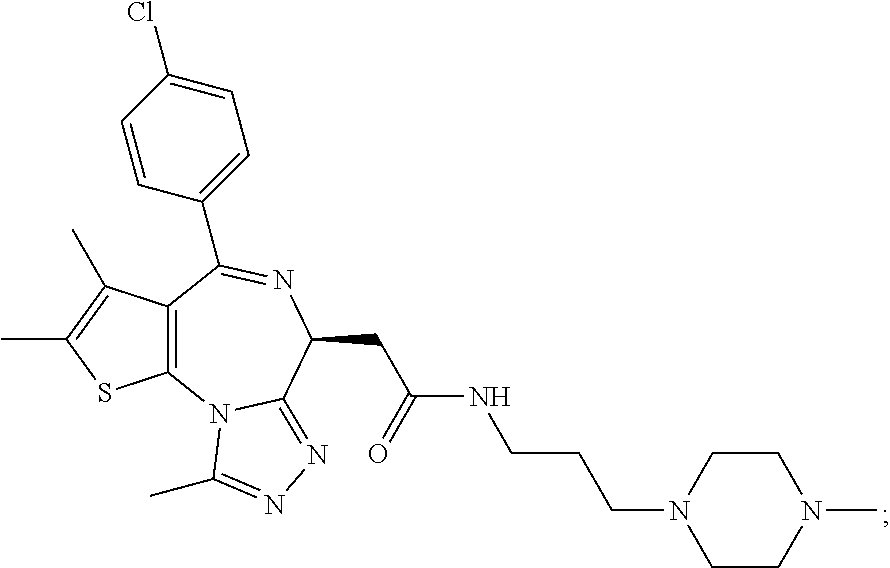
C00017

C00018

C00019

C00020

C00021

C00022

C00023

C00024
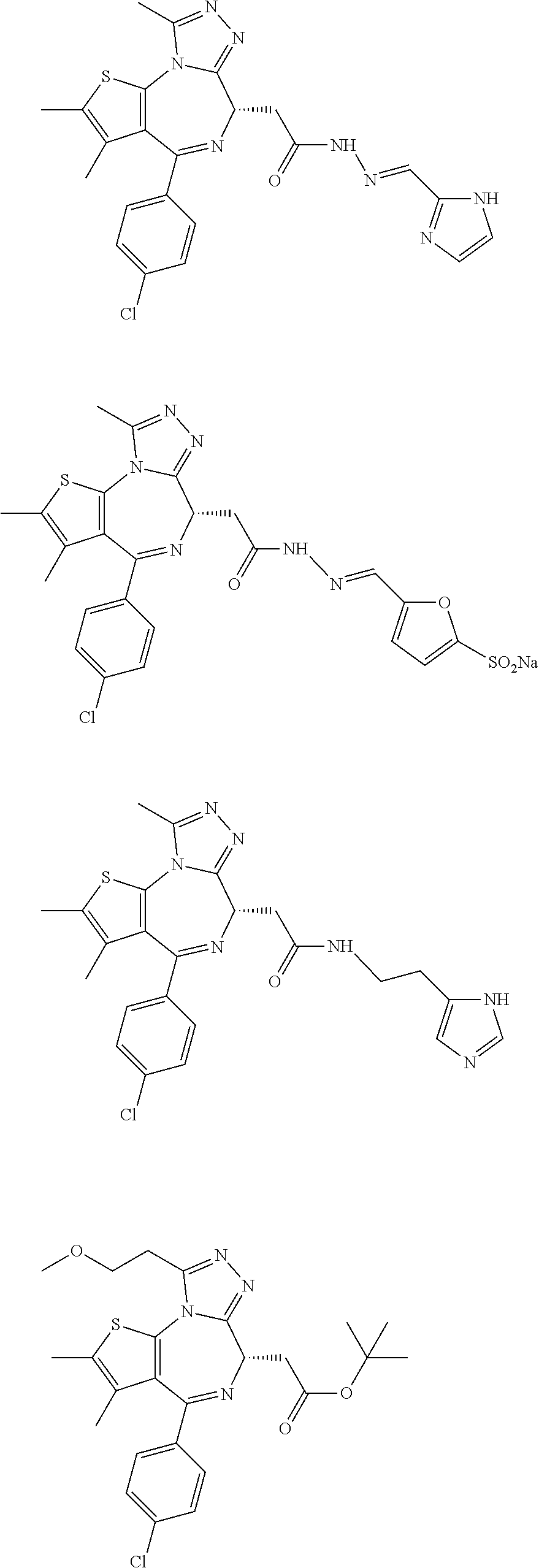
C00025

C00026

C00027

C00028

C00029
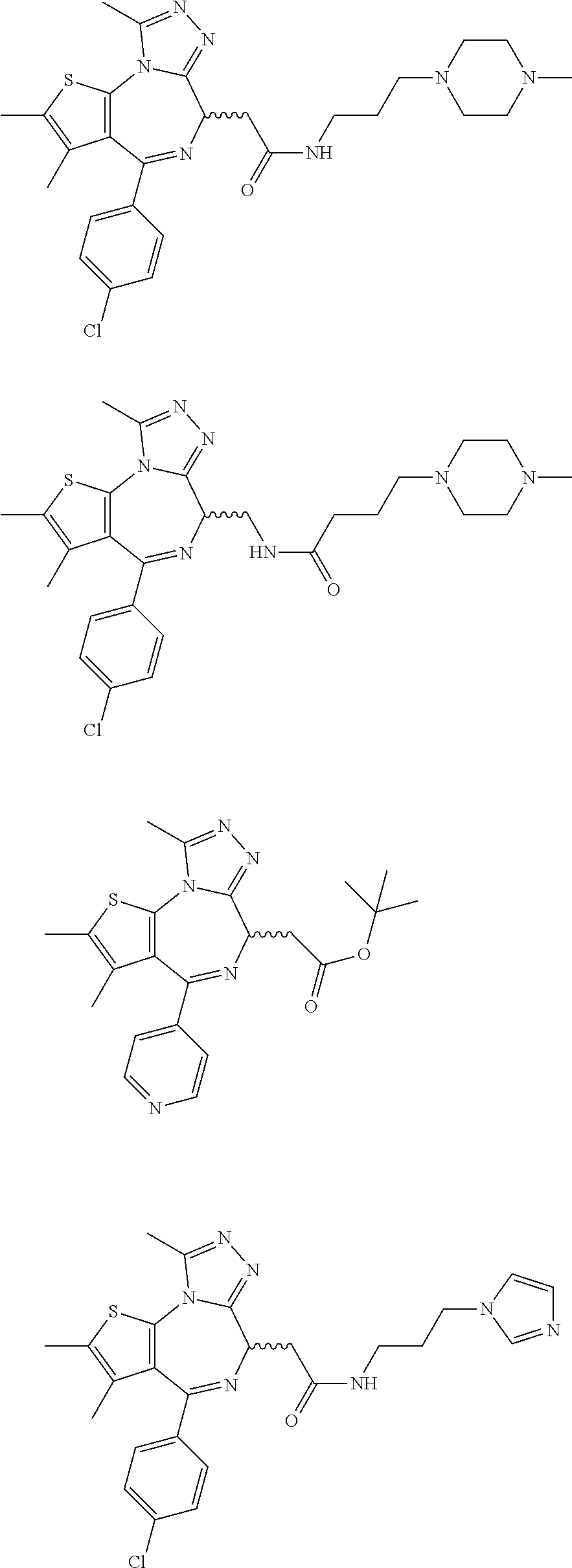
C00030

C00031

C00032
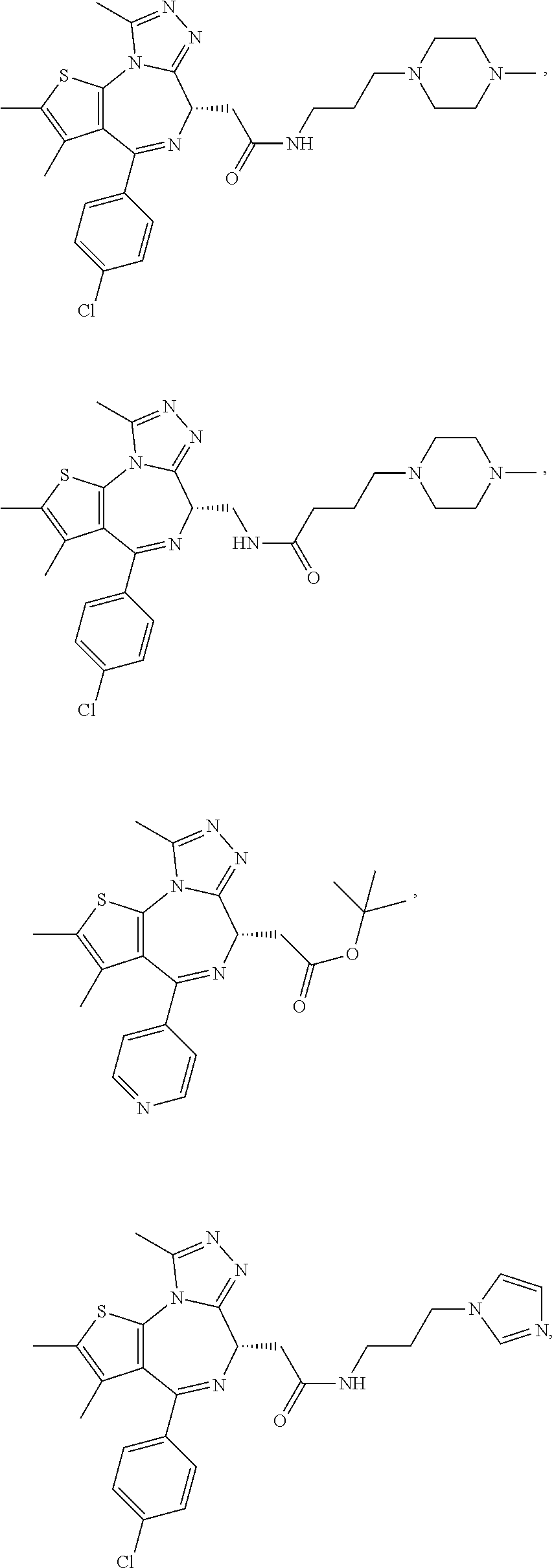
C00033
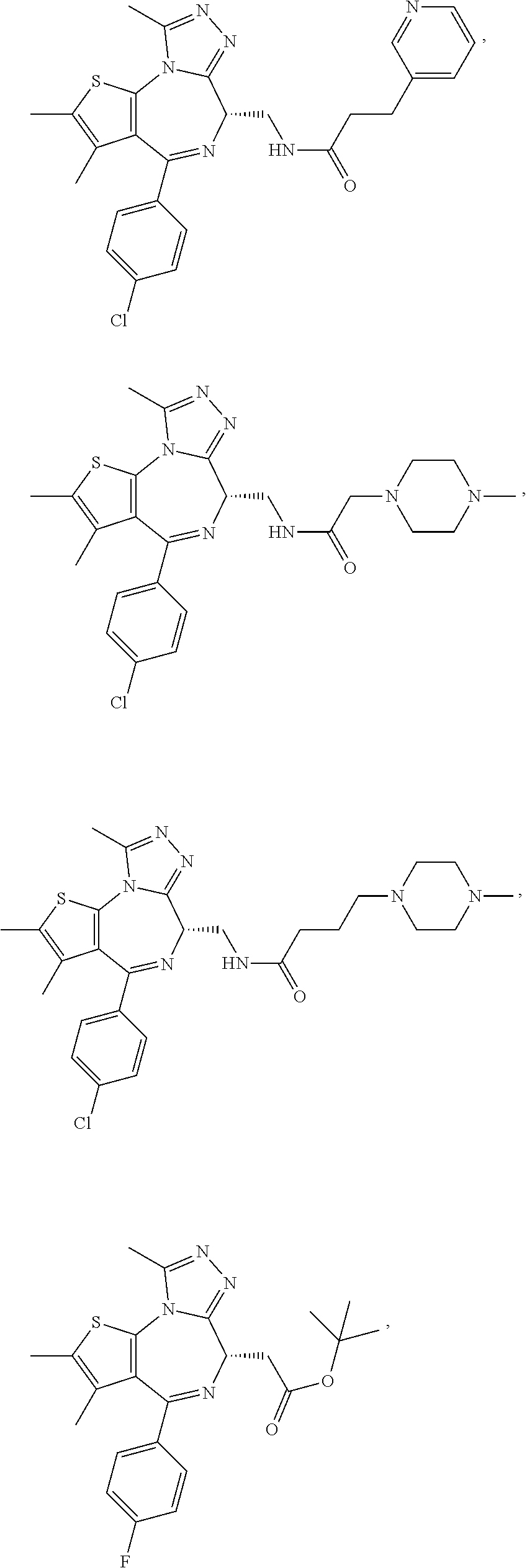
C00034

C00035

C00036

C00037
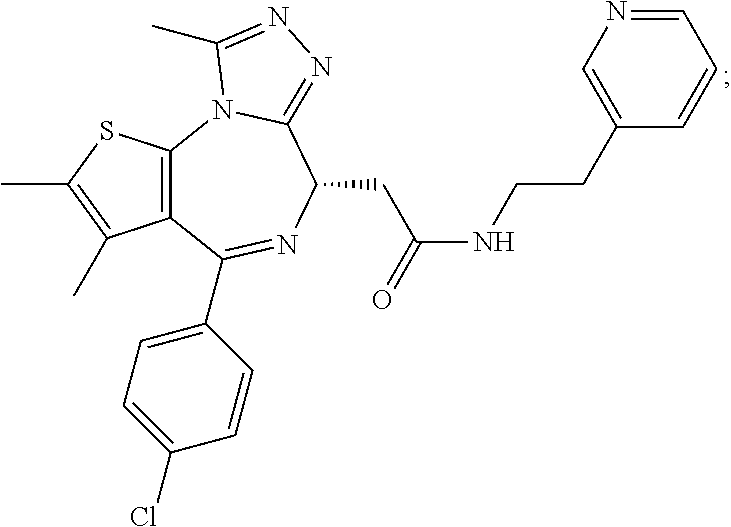
C00038

C00039
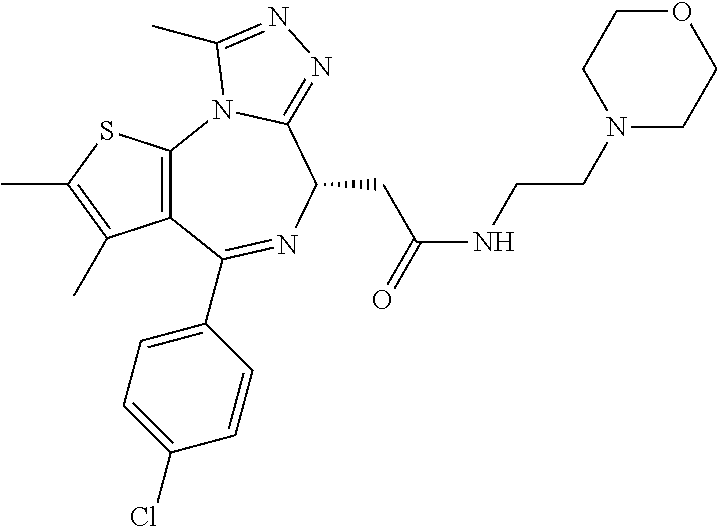
C00040
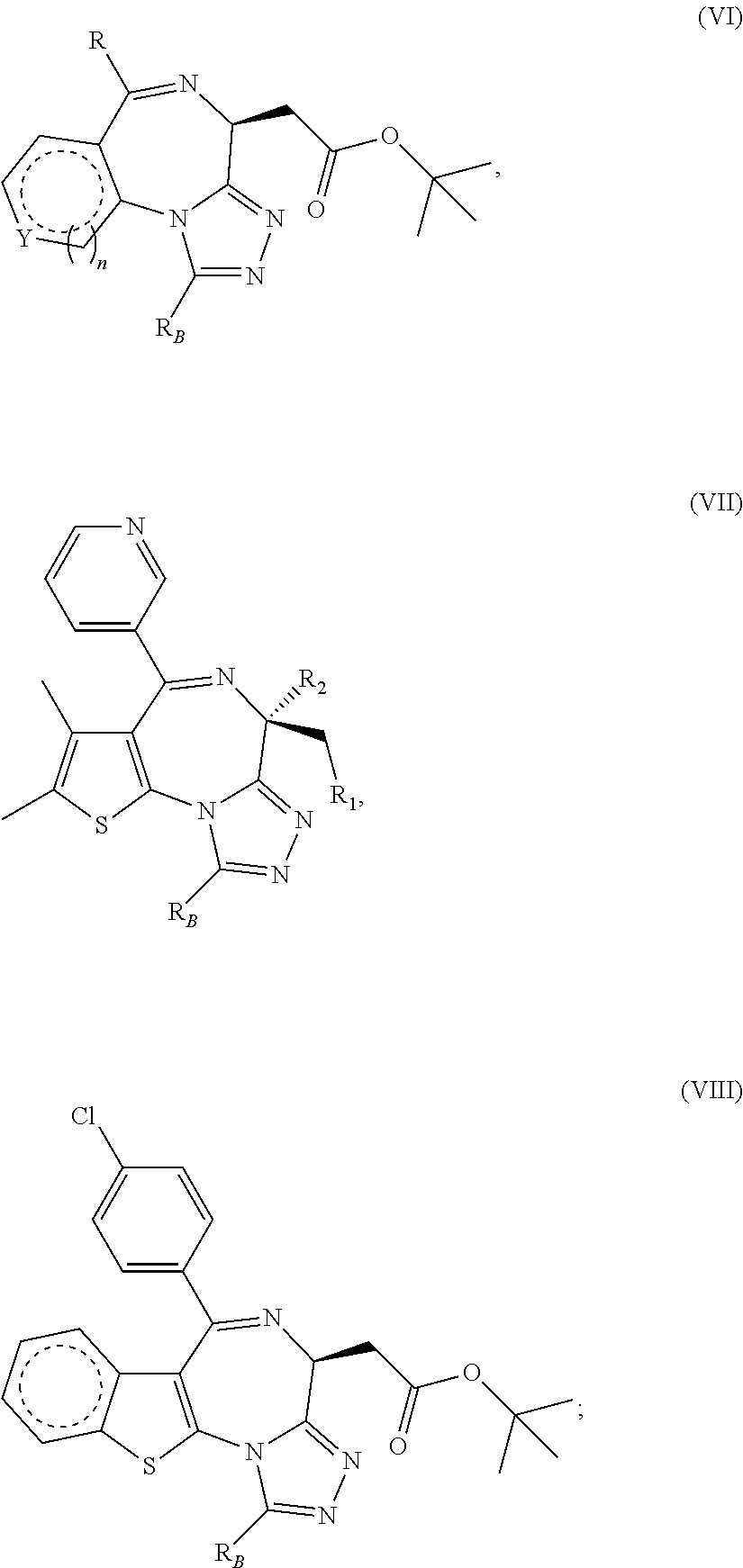
C00041
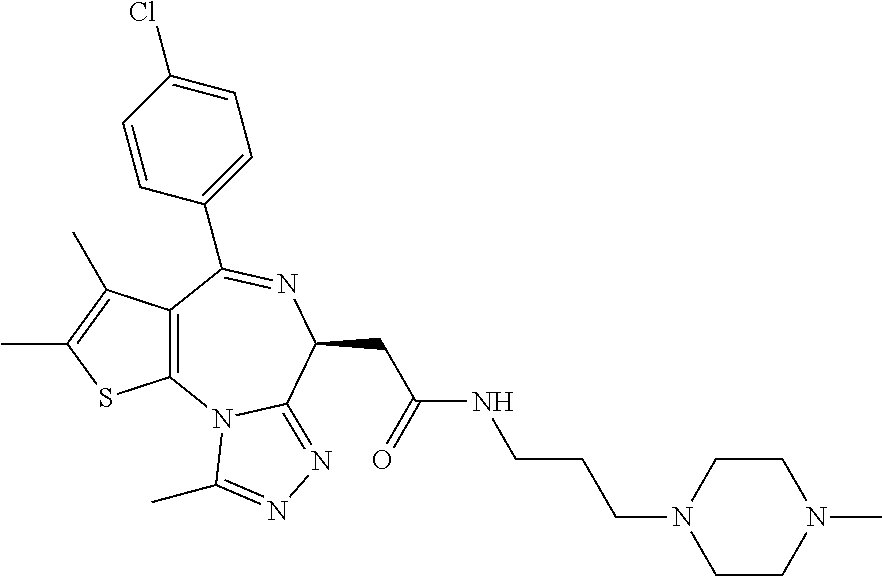
C00042
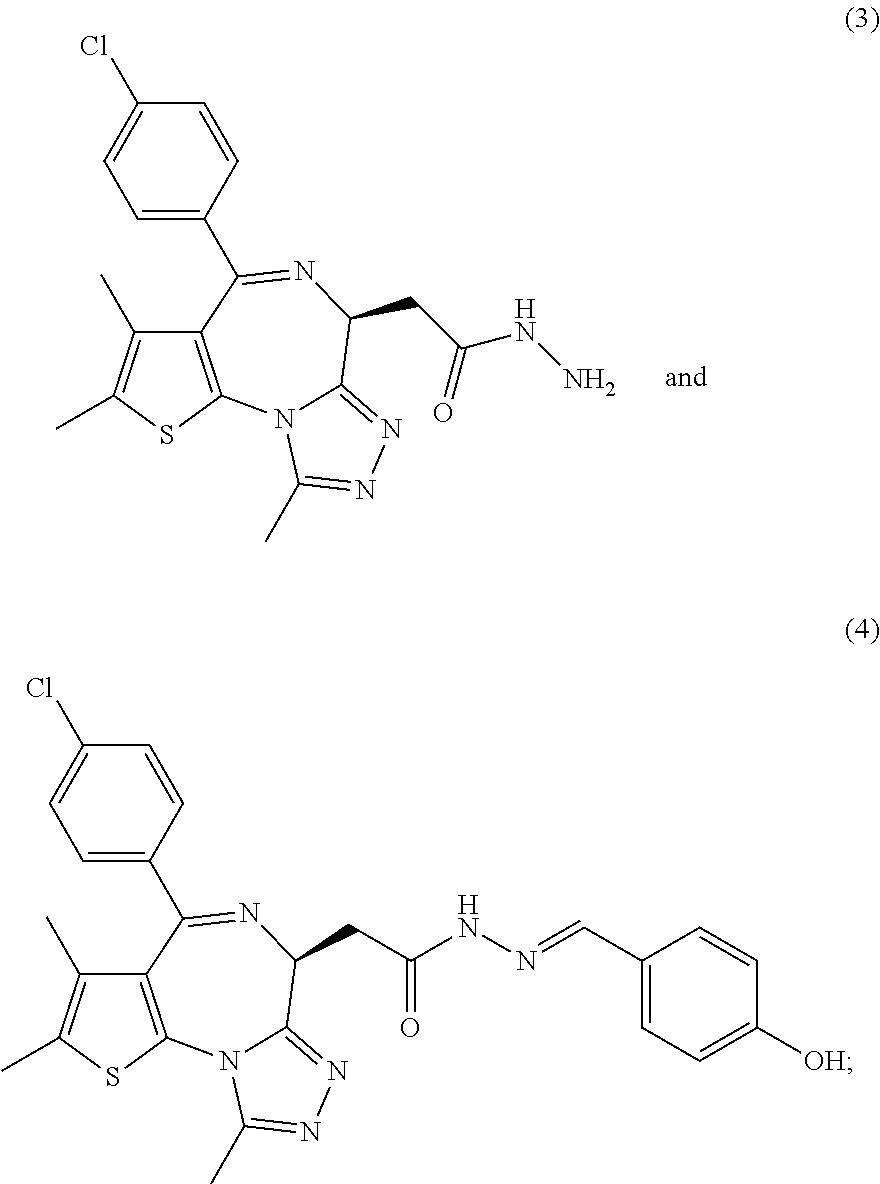
C00043
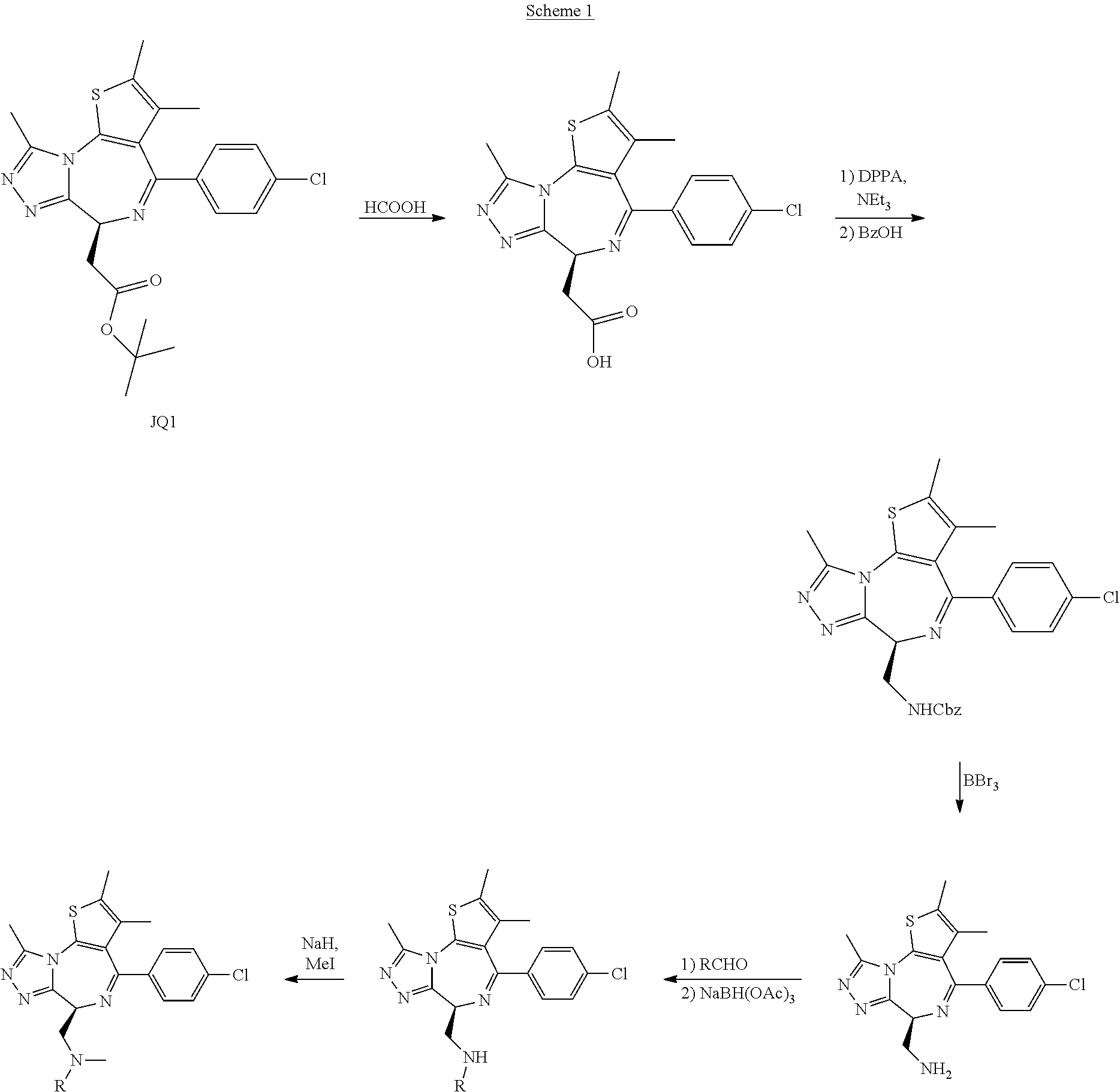
C00044
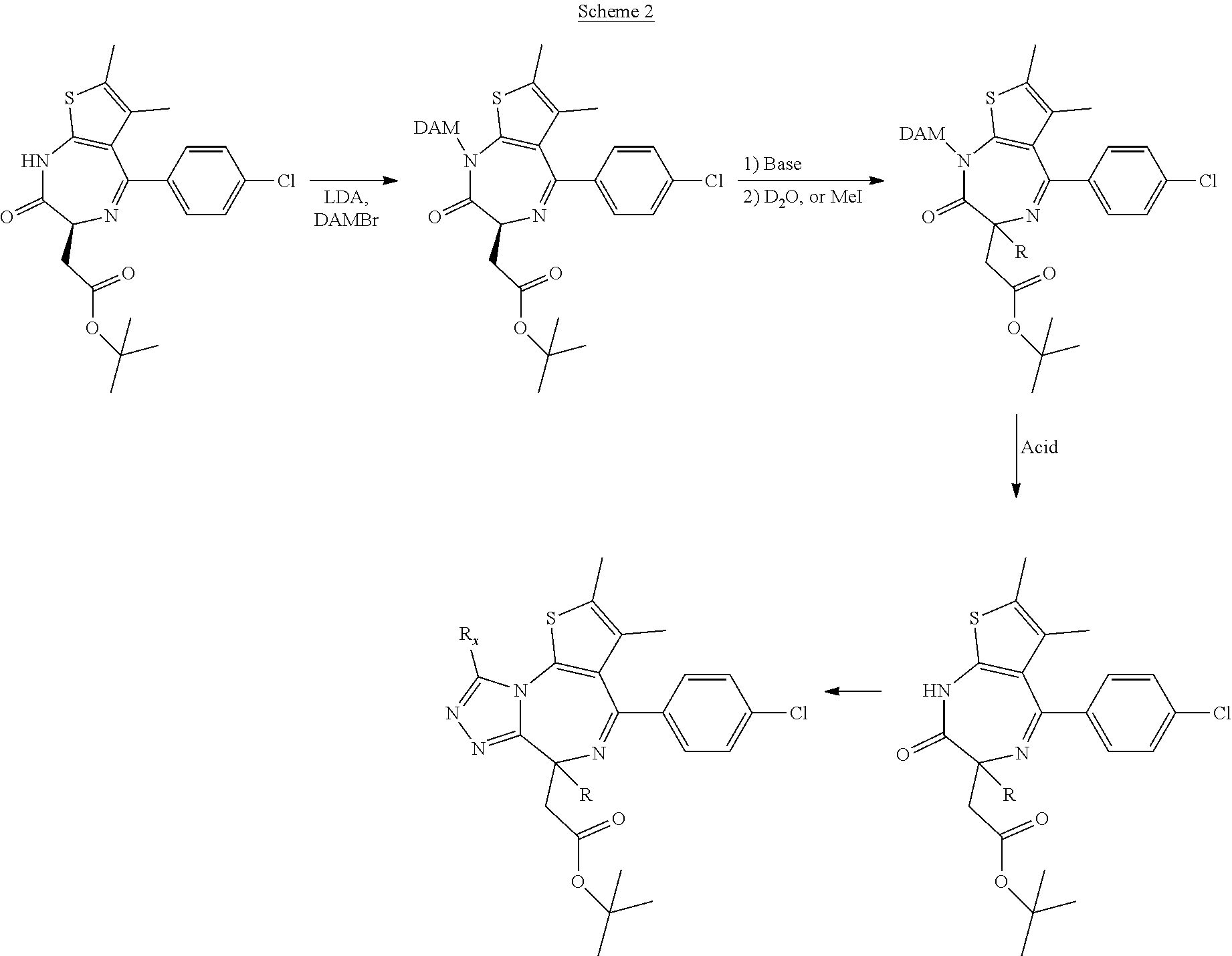
C00045

C00046

C00047

C00048

C00049

C00050
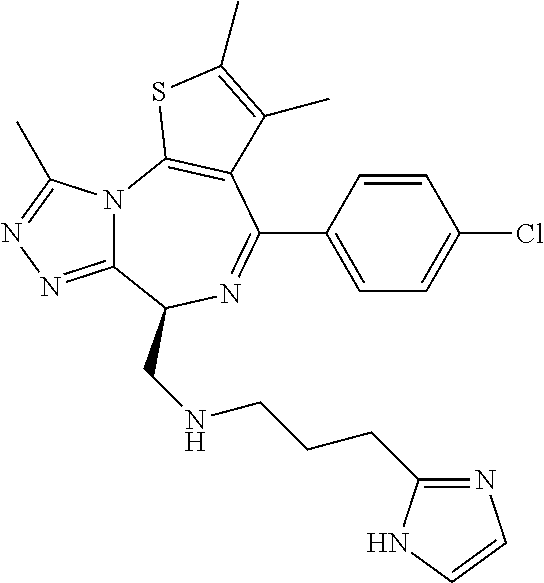
C00051
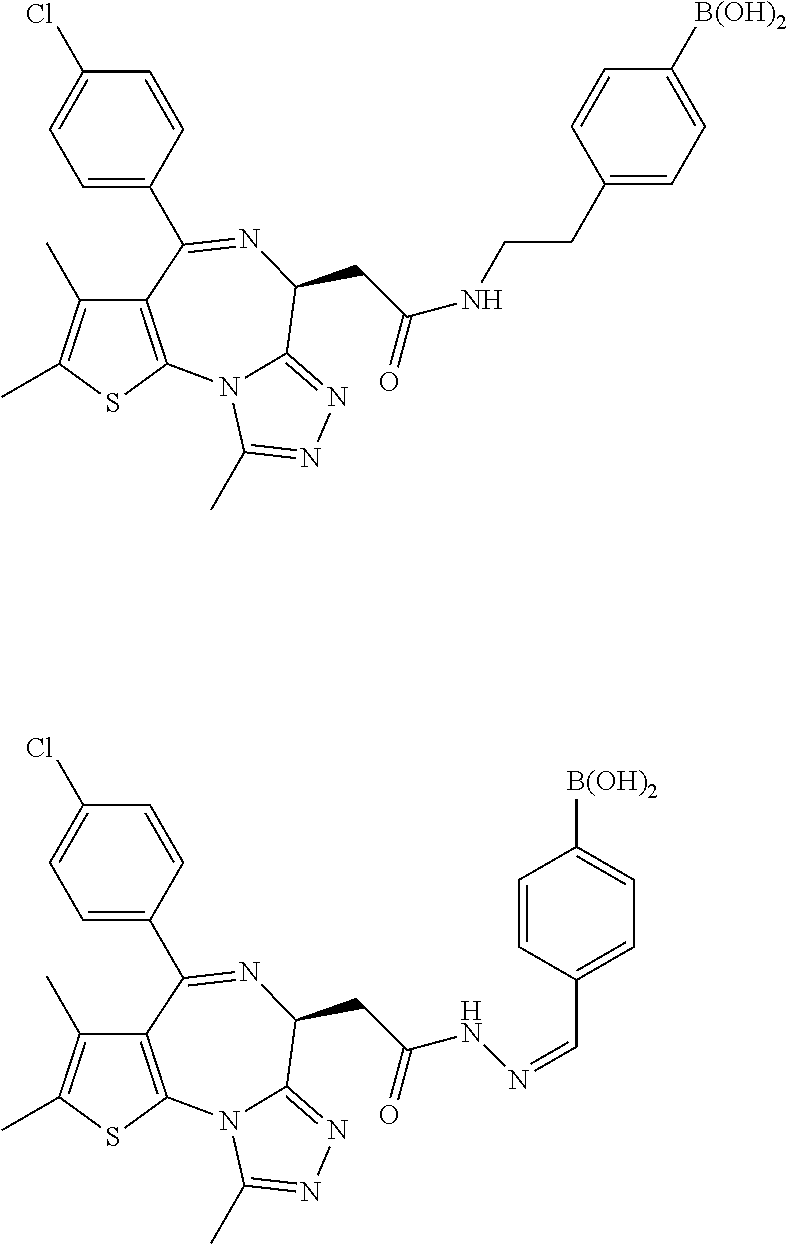
C00052
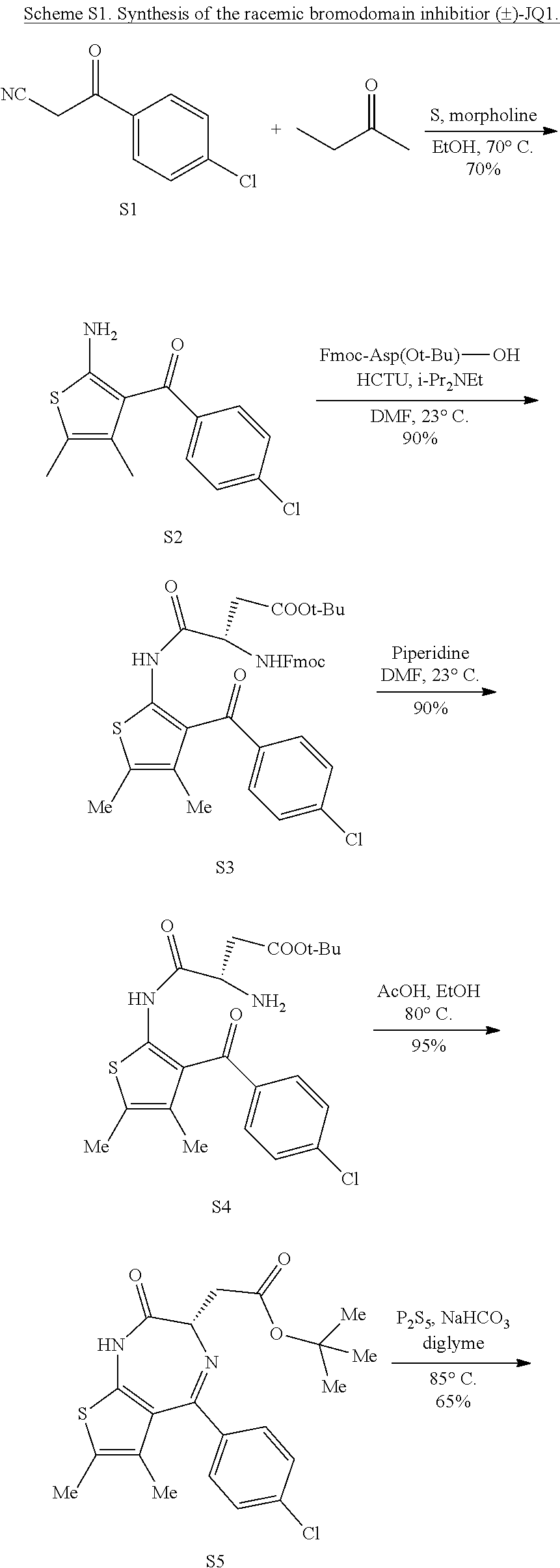
C00053

C00054

C00055

C00056
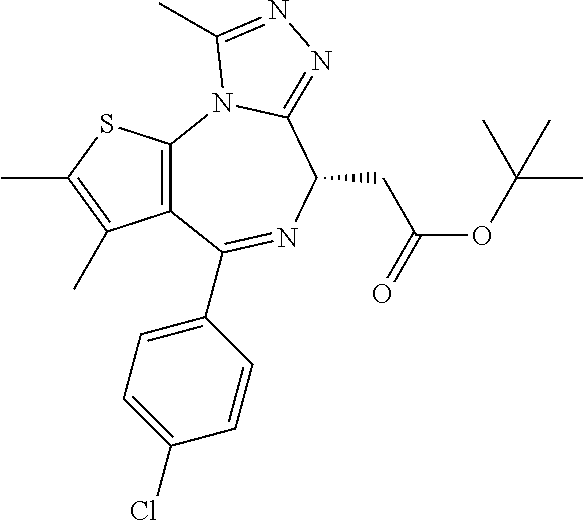
C00057
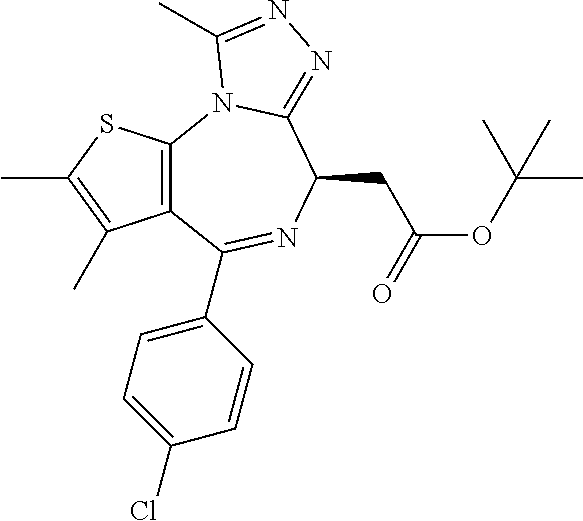
C00058
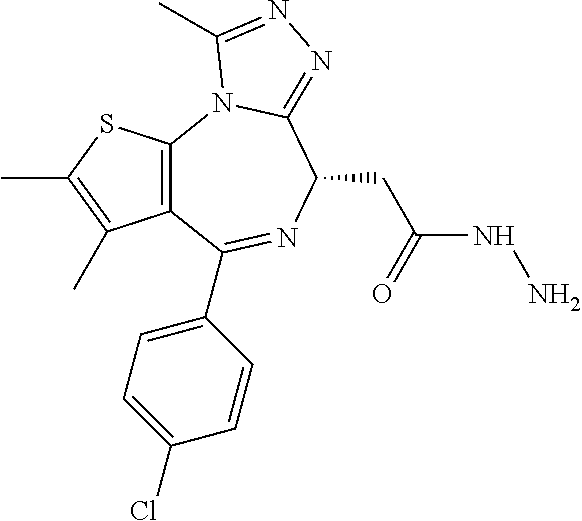
C00059
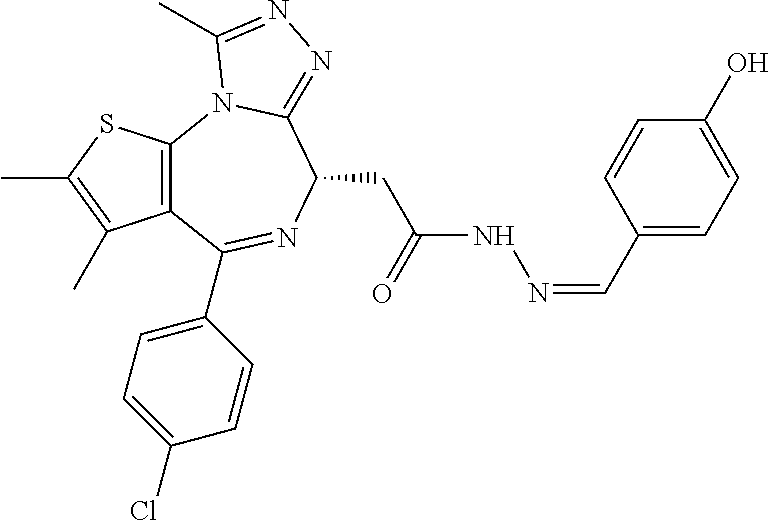
C00060

C00061
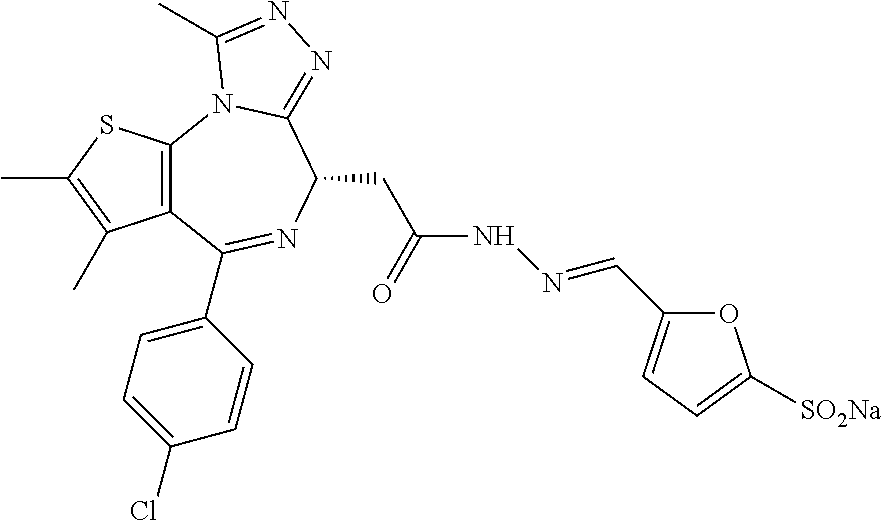
C00062

C00063

C00064
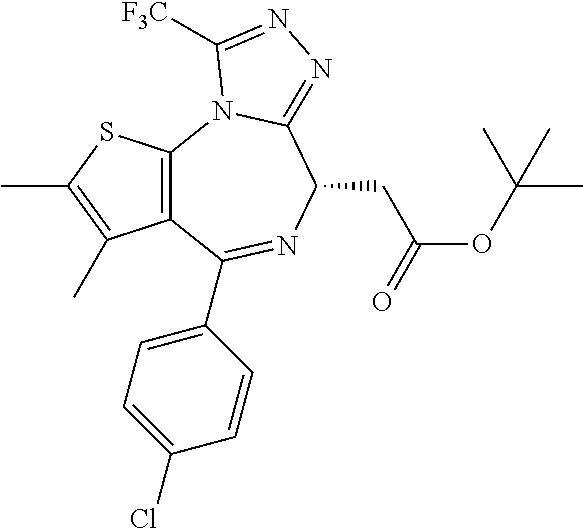
C00065
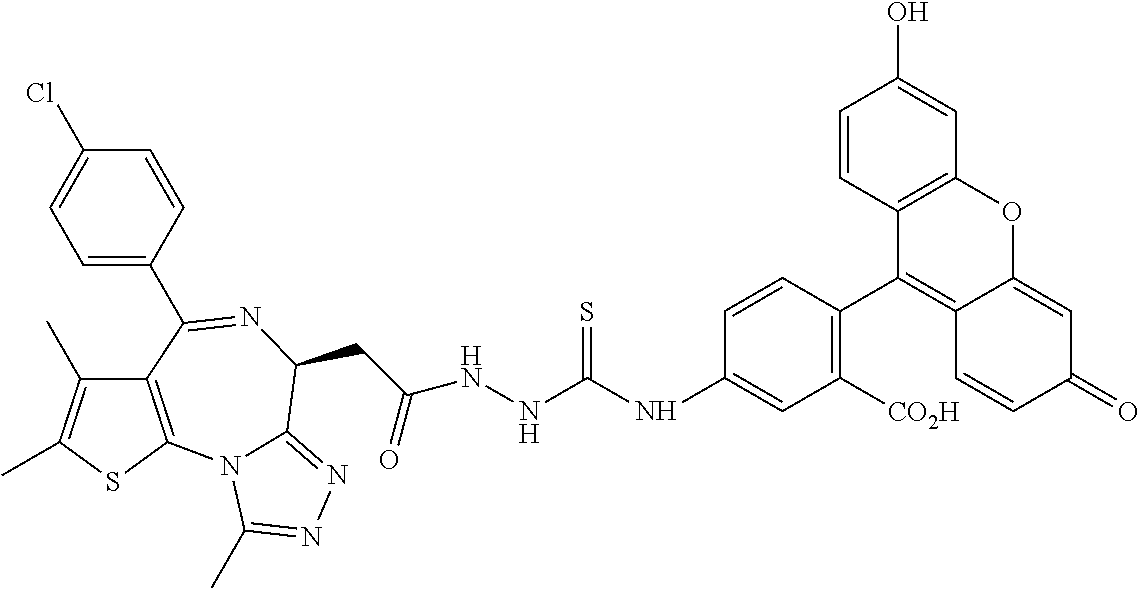
C00066
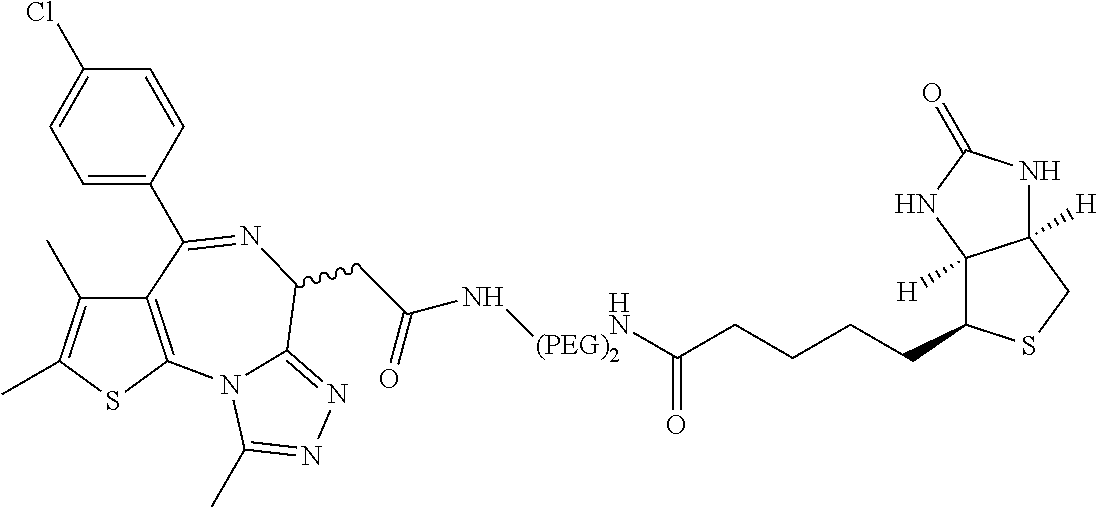
C00067

C00068

C00069

C00070

C00071

C00072
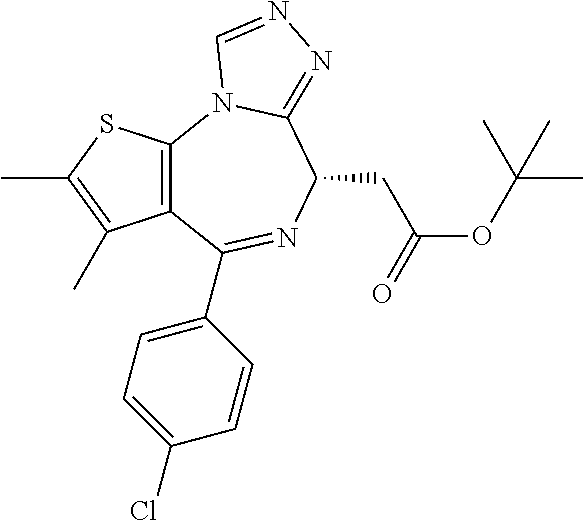
C00073
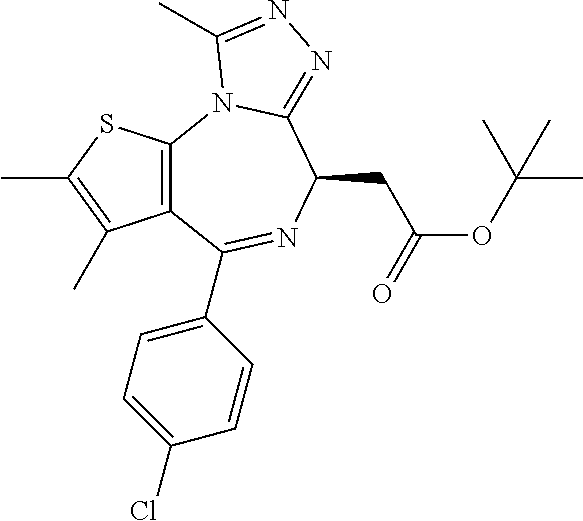
C00074
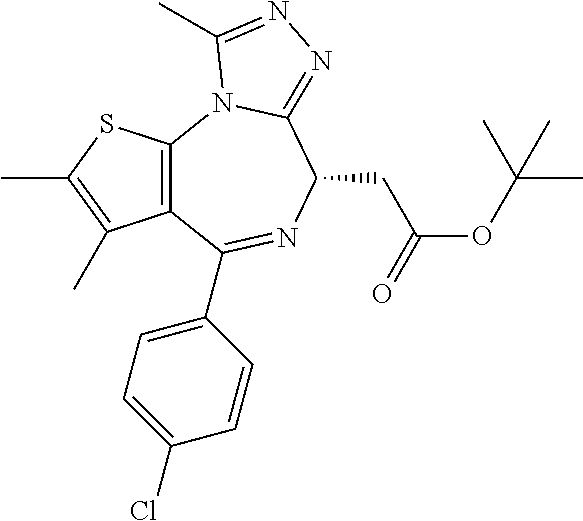
C00075
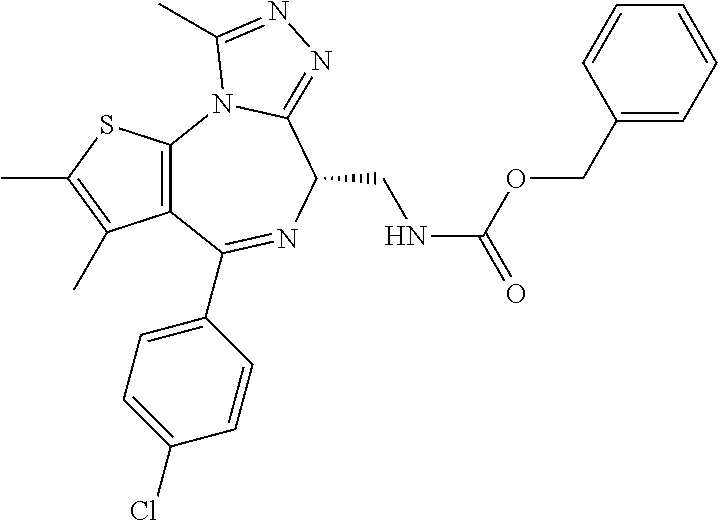
C00076
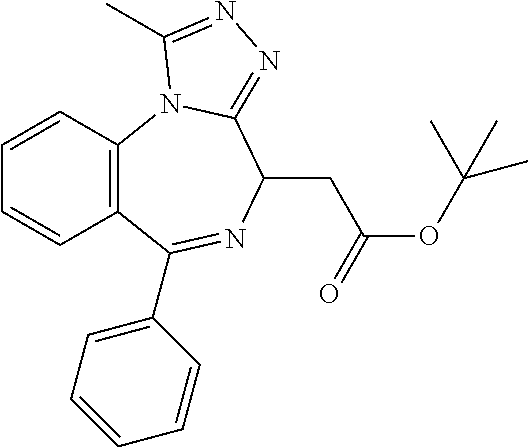
C00077
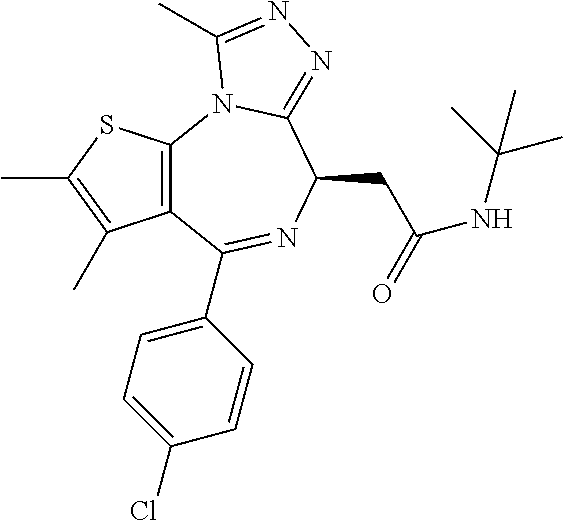
C00078
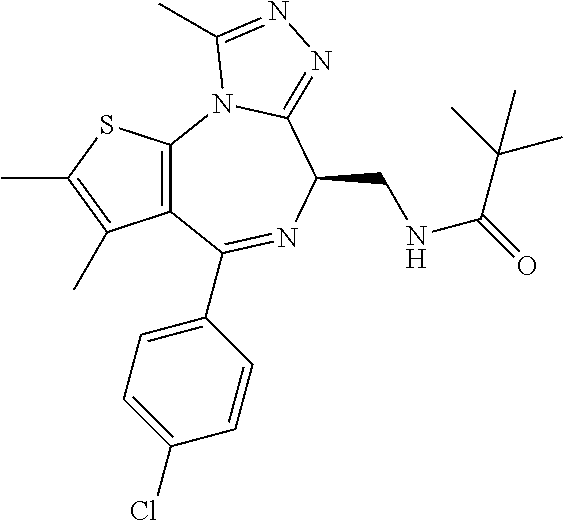
C00079
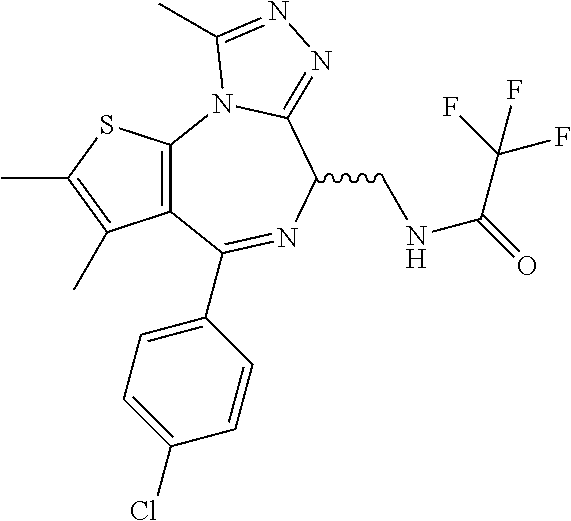
C00080

C00081
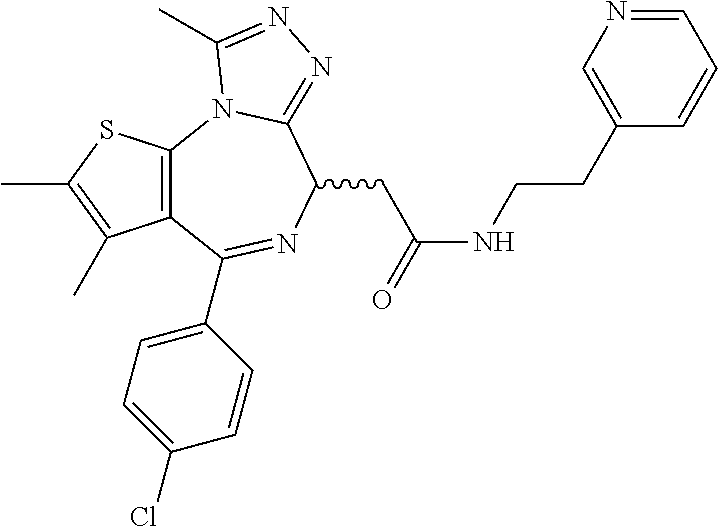
C00082
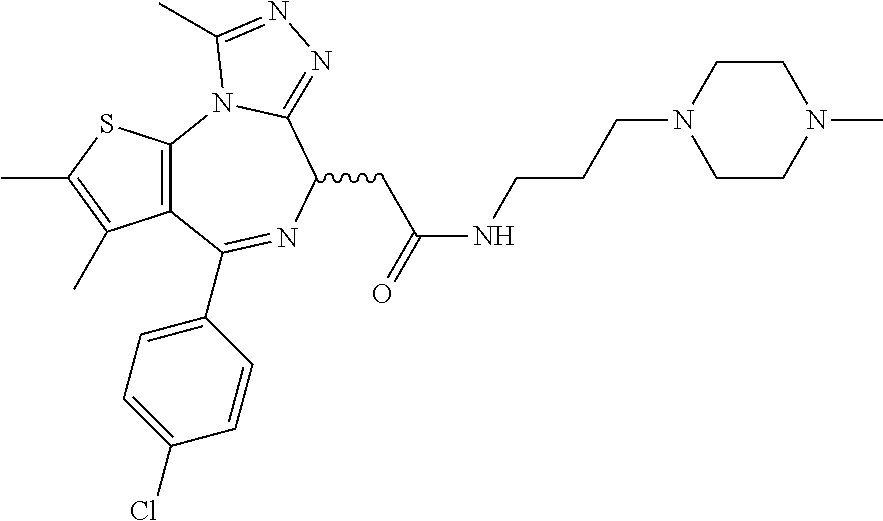
C00083

C00084

C00085
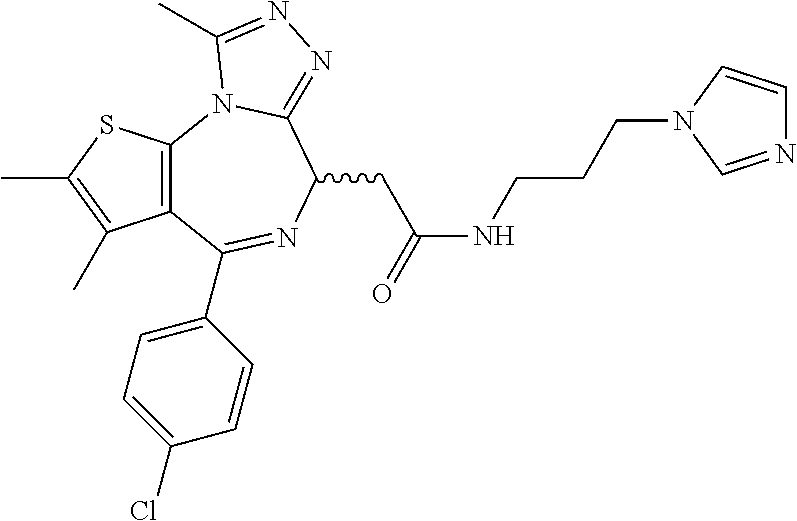
C00086

C00087
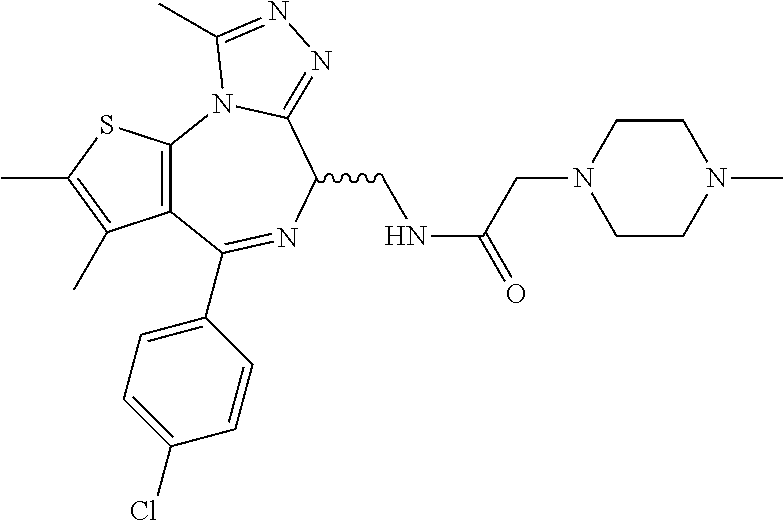
C00088
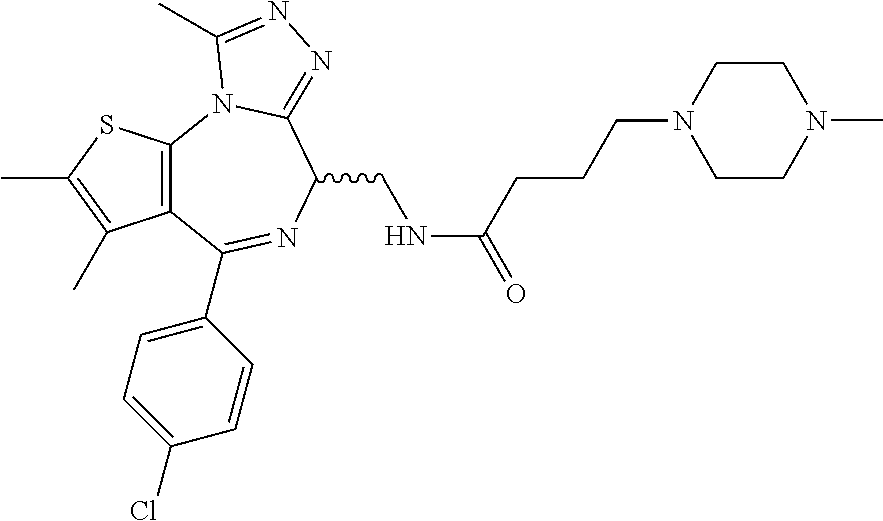
C00089

C00090

C00091

C00092
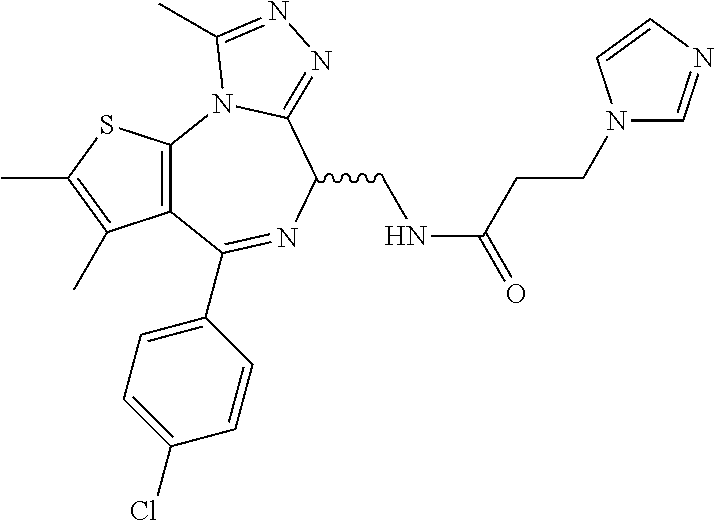
C00093
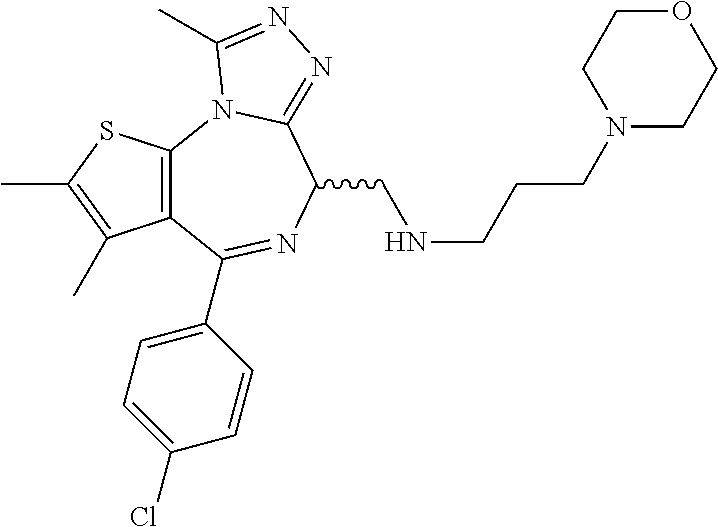
C00094
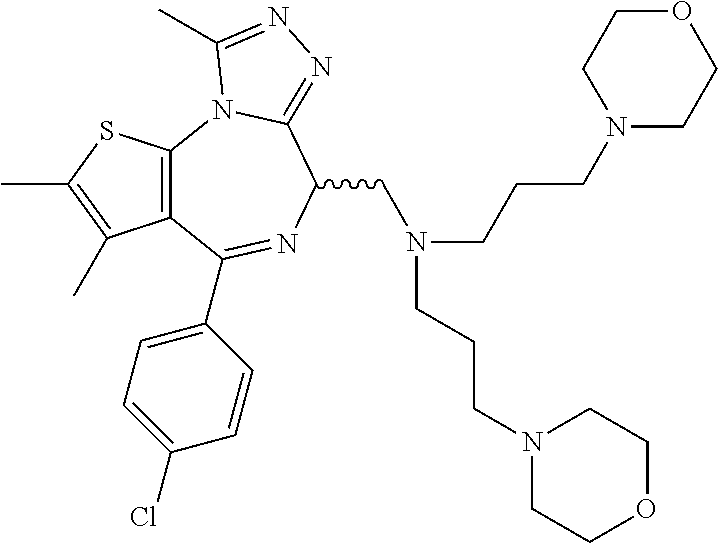
C00095

C00096

C00097
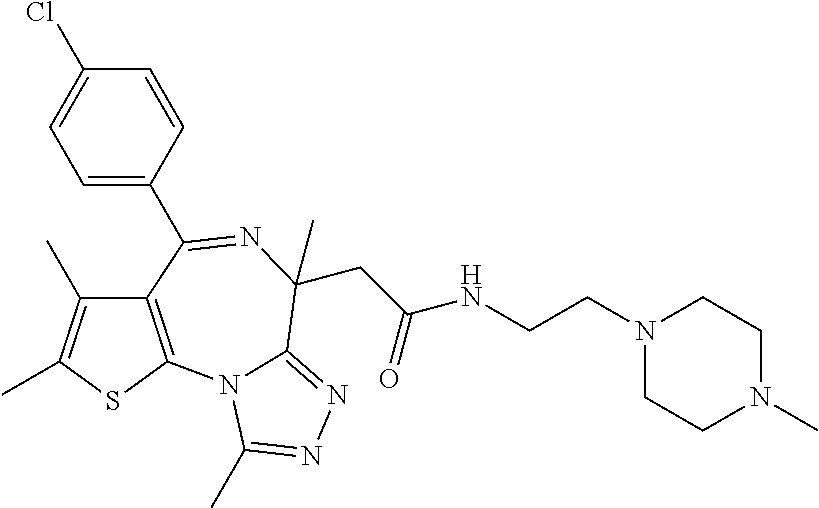
C00098

C00099
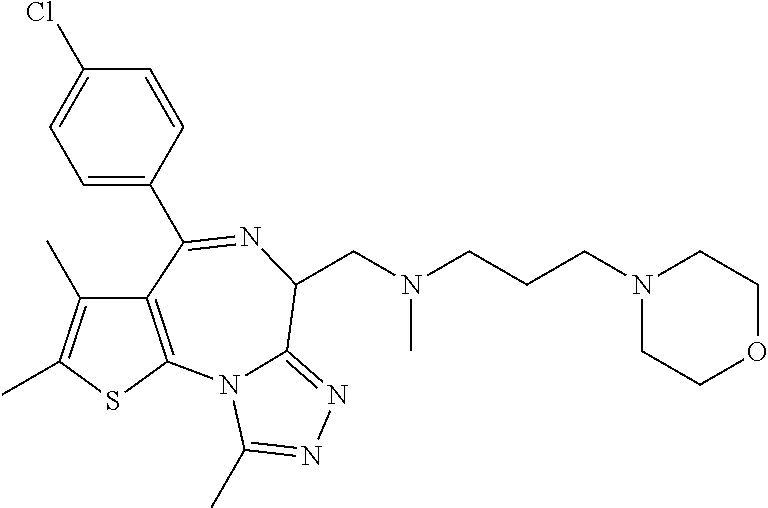
C00100

C00101
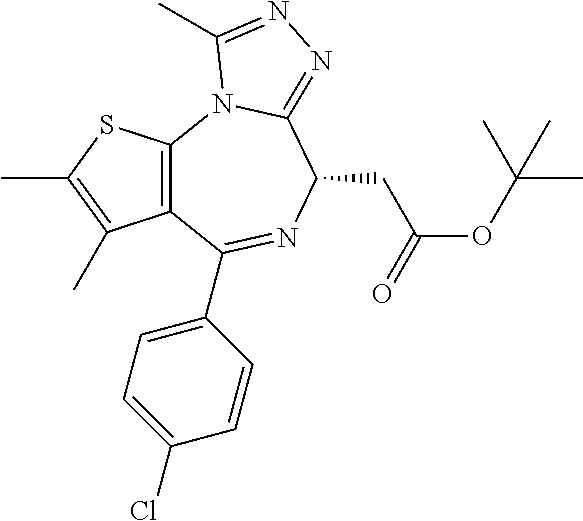
C00102
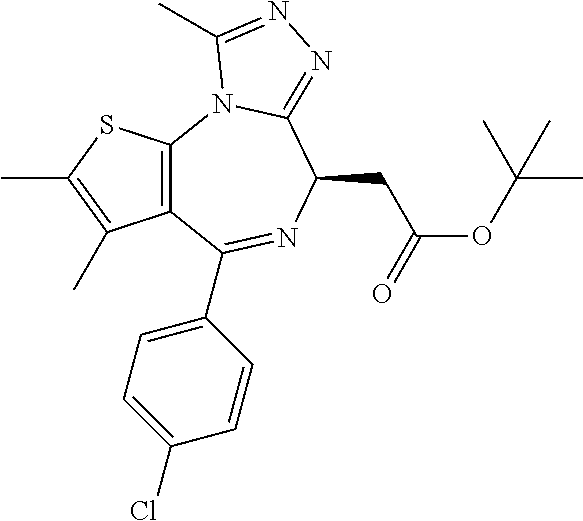
C00103

C00104

C00105
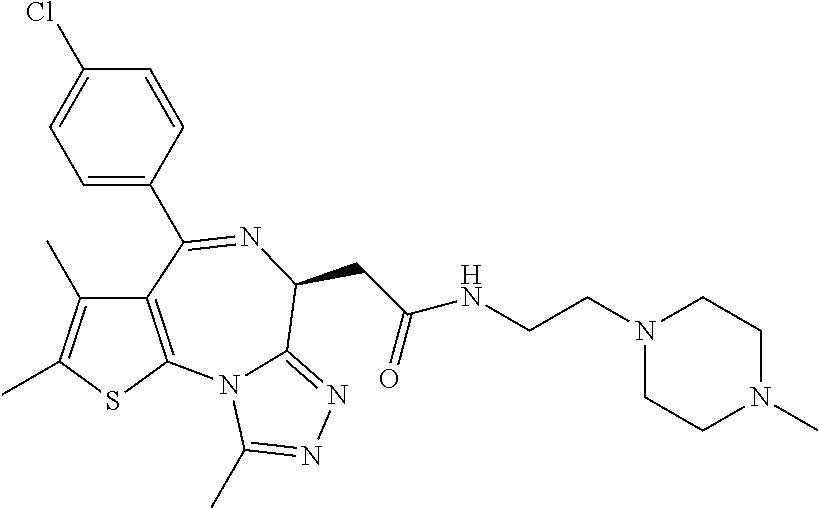
C00106
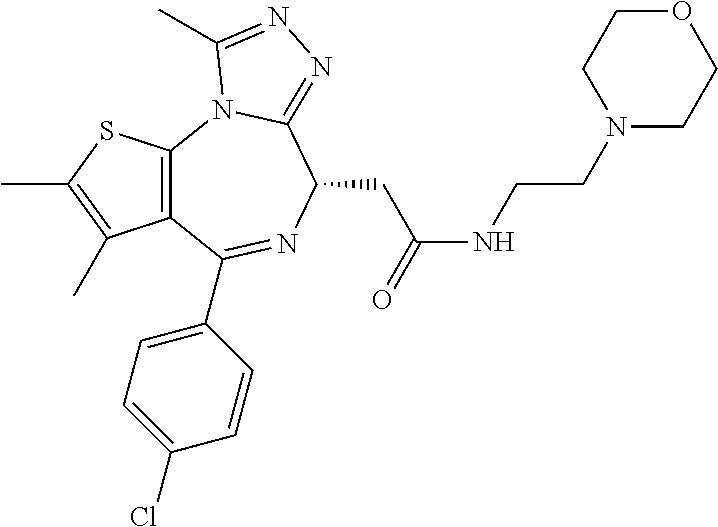
C00107

C00108

C00109
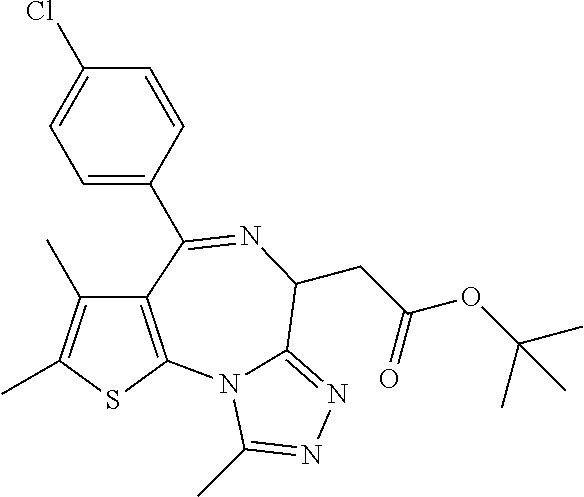
C00110

C00111
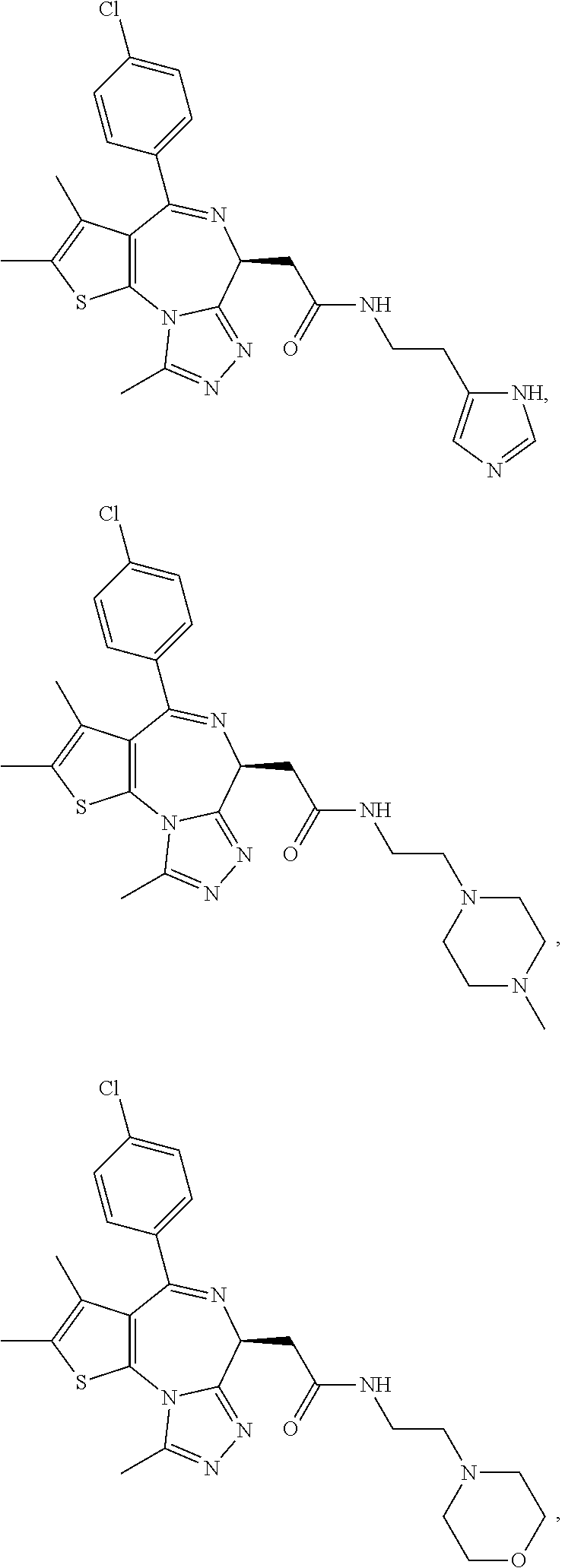
C00112
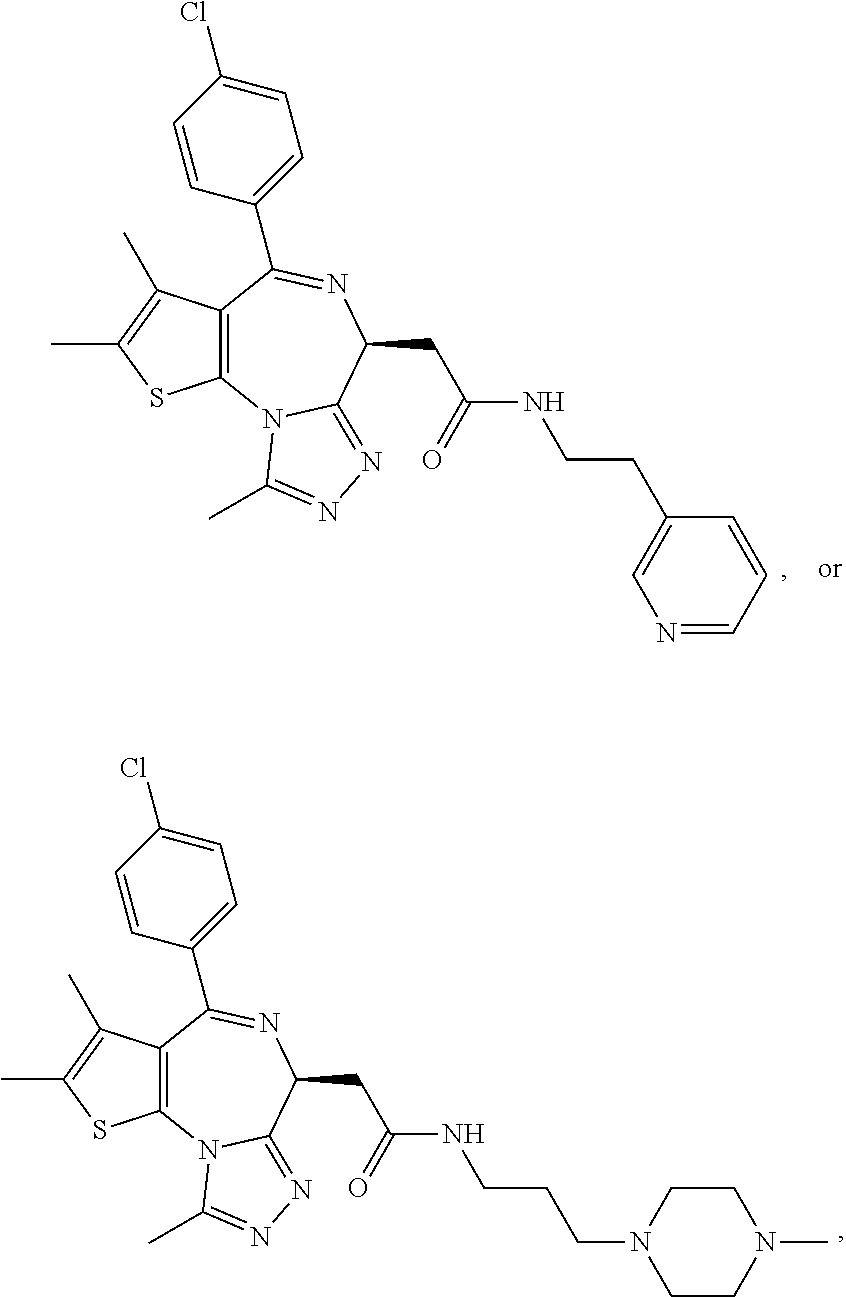
C00113
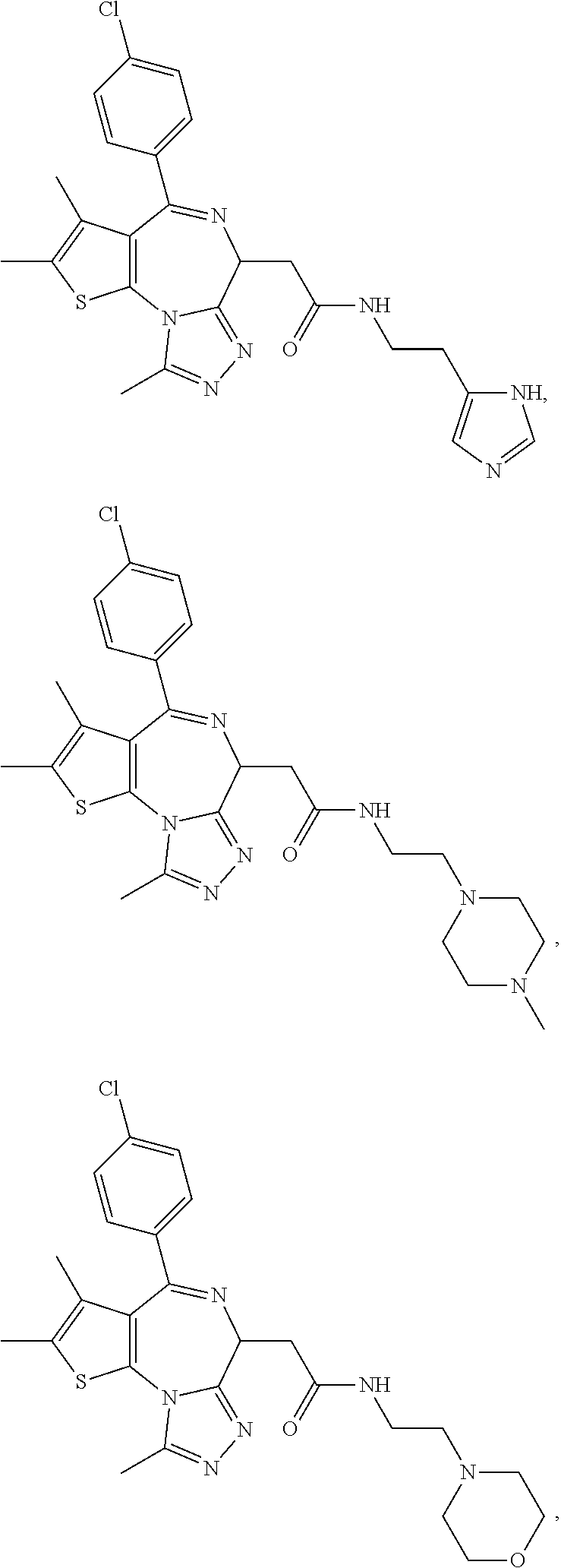
C00114
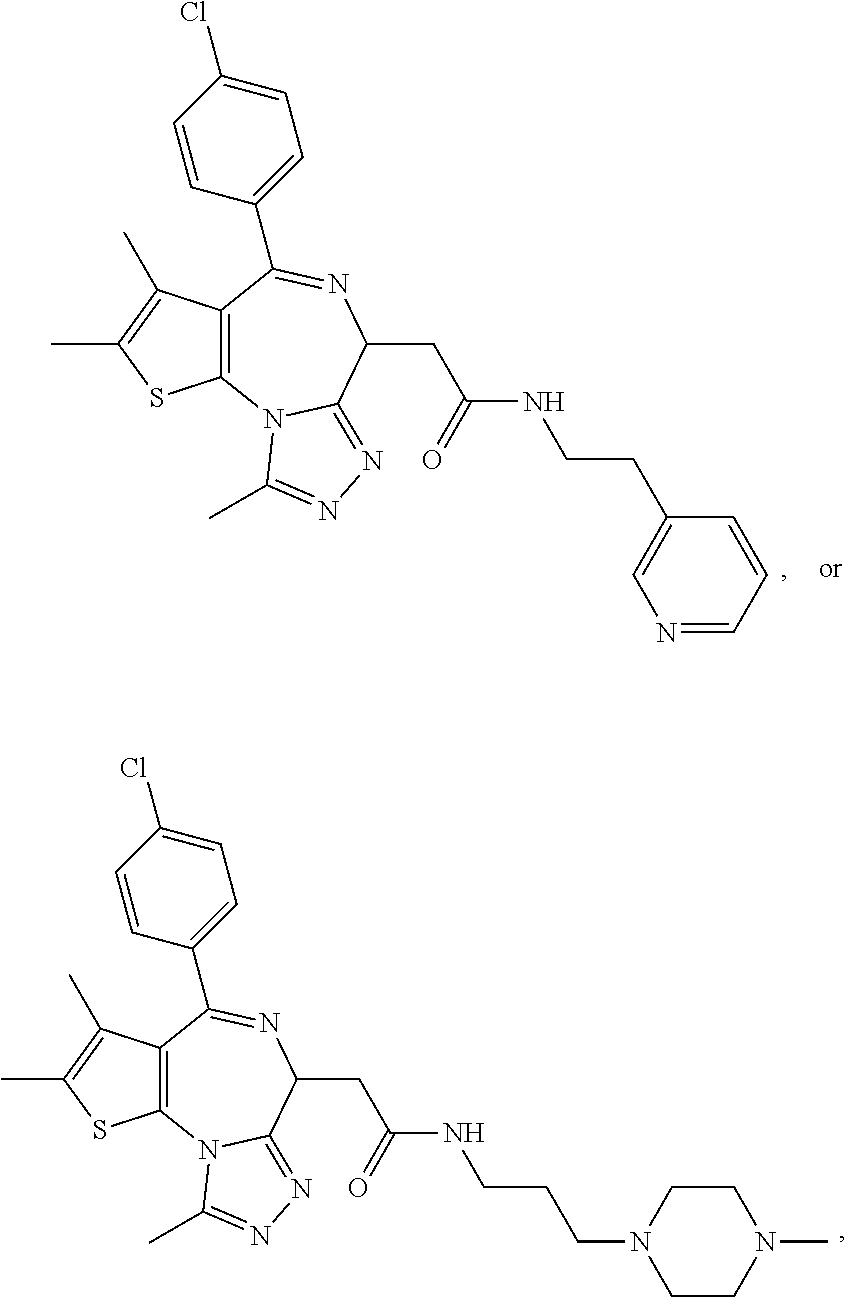
C00115

C00116

C00117

C00118

C00119

C00120
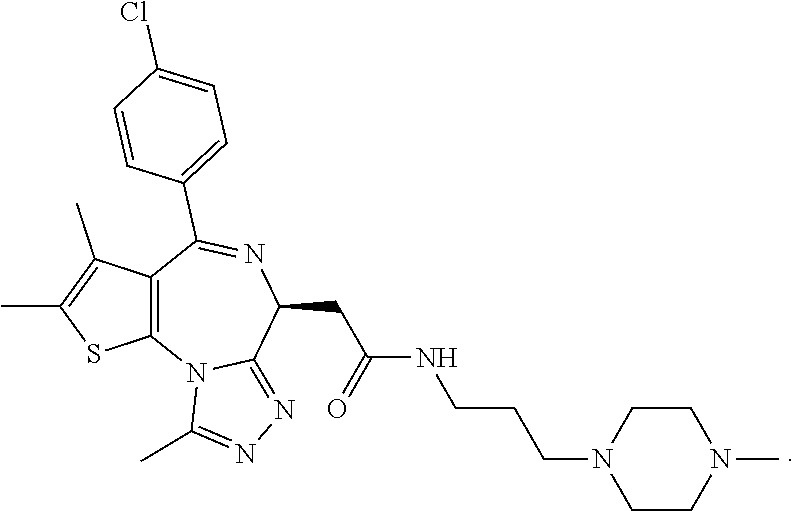
D00001

D00002

D00003

D00004
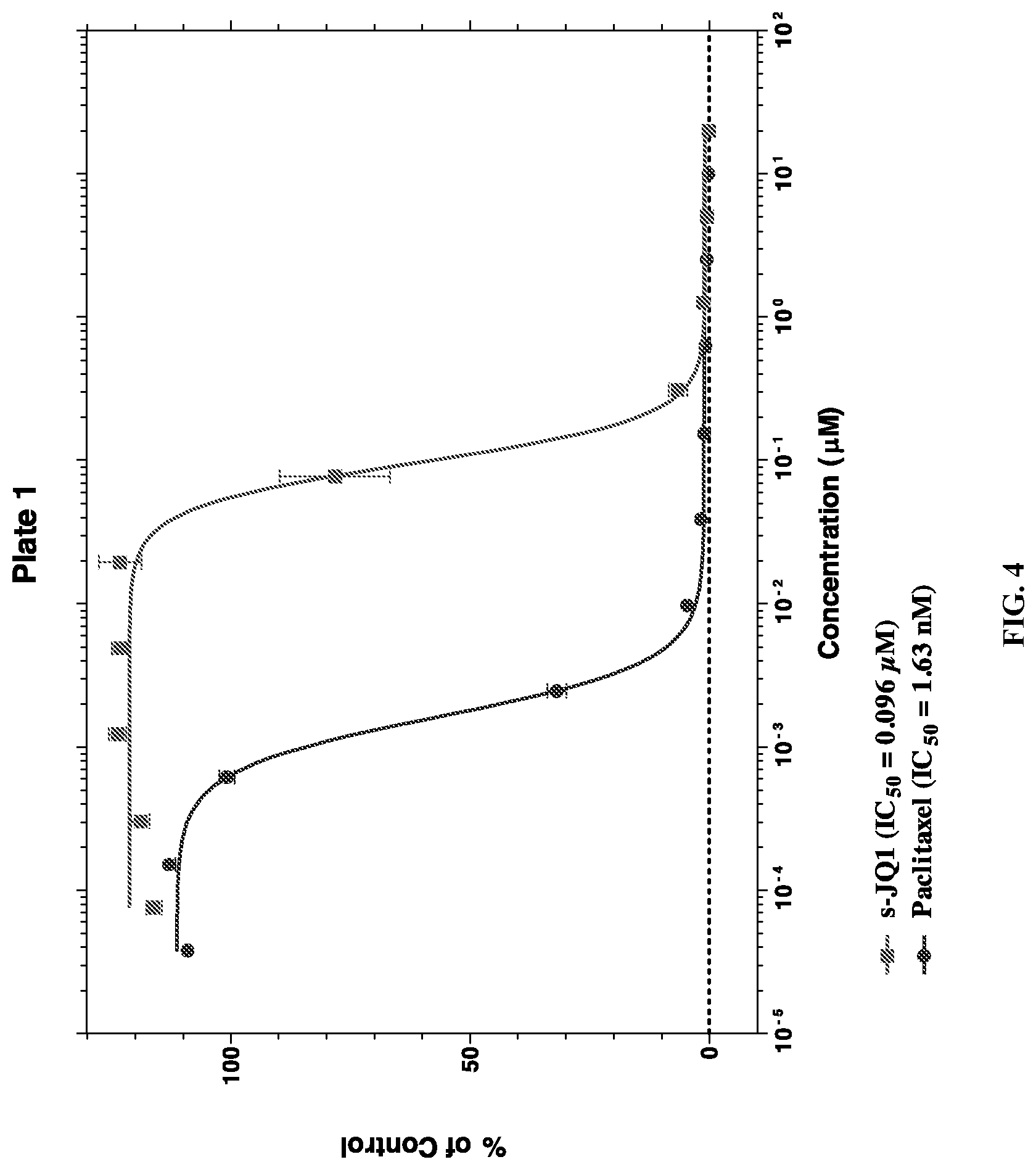
D00005

D00006
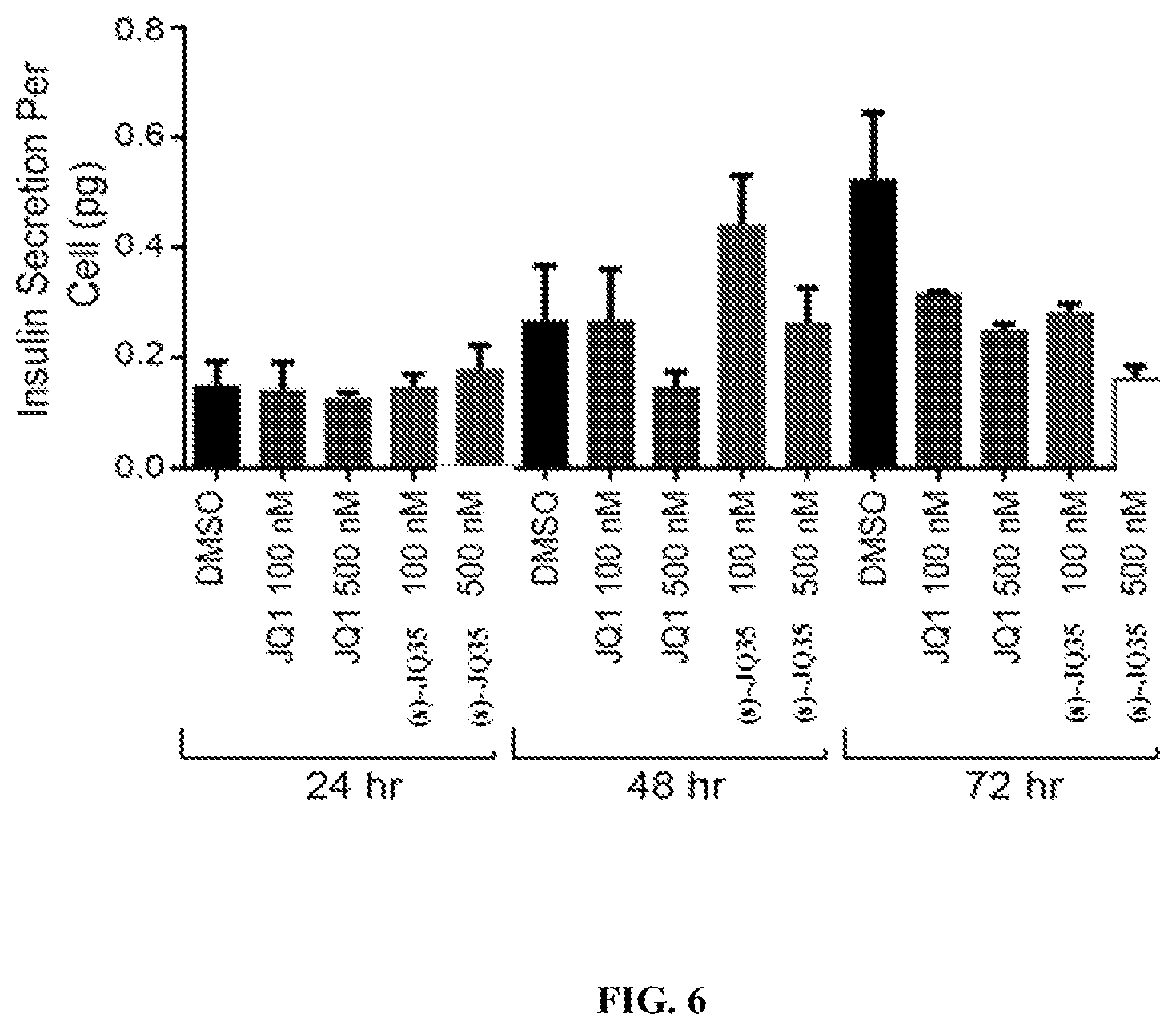
D00007

D00008
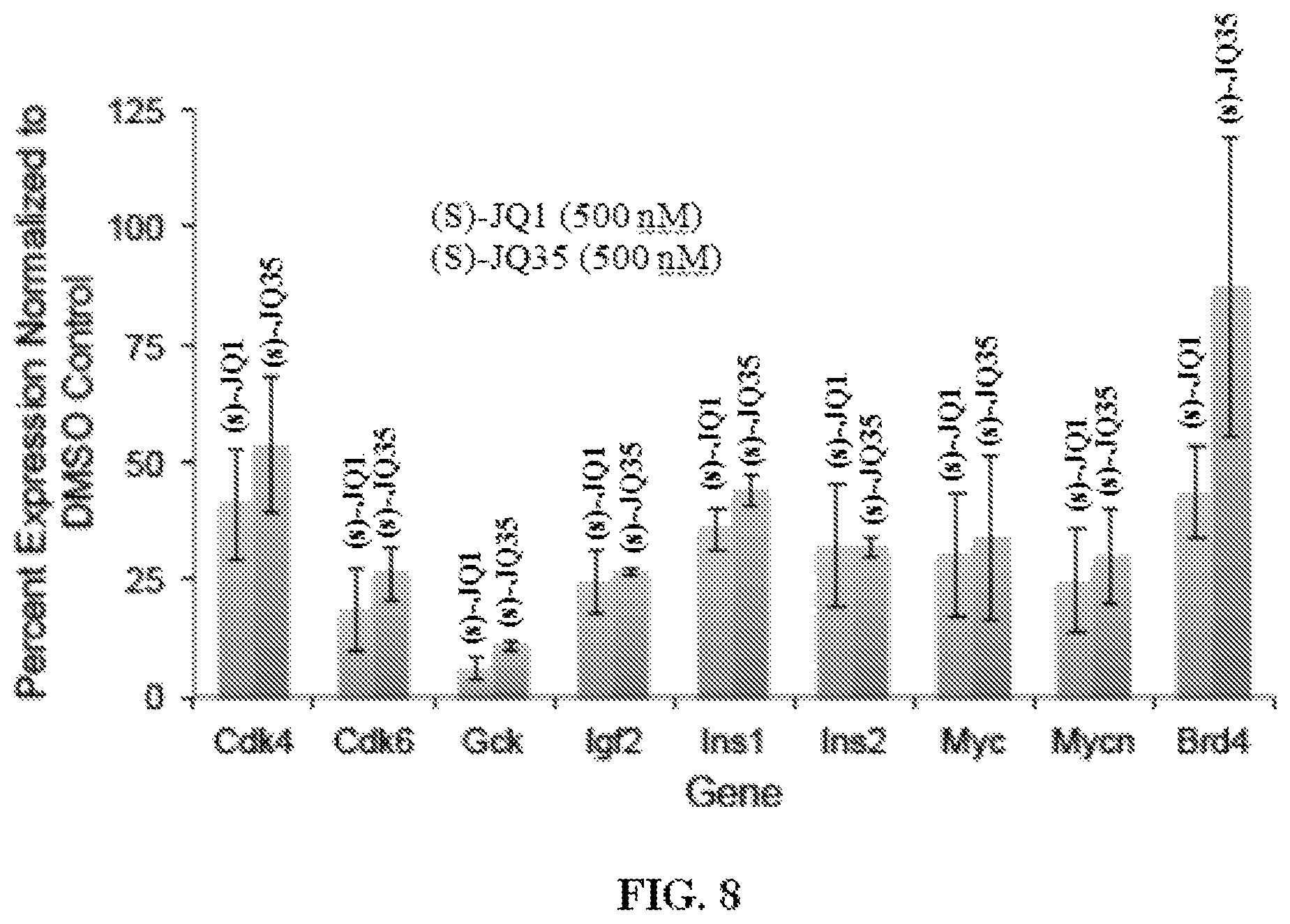
D00009
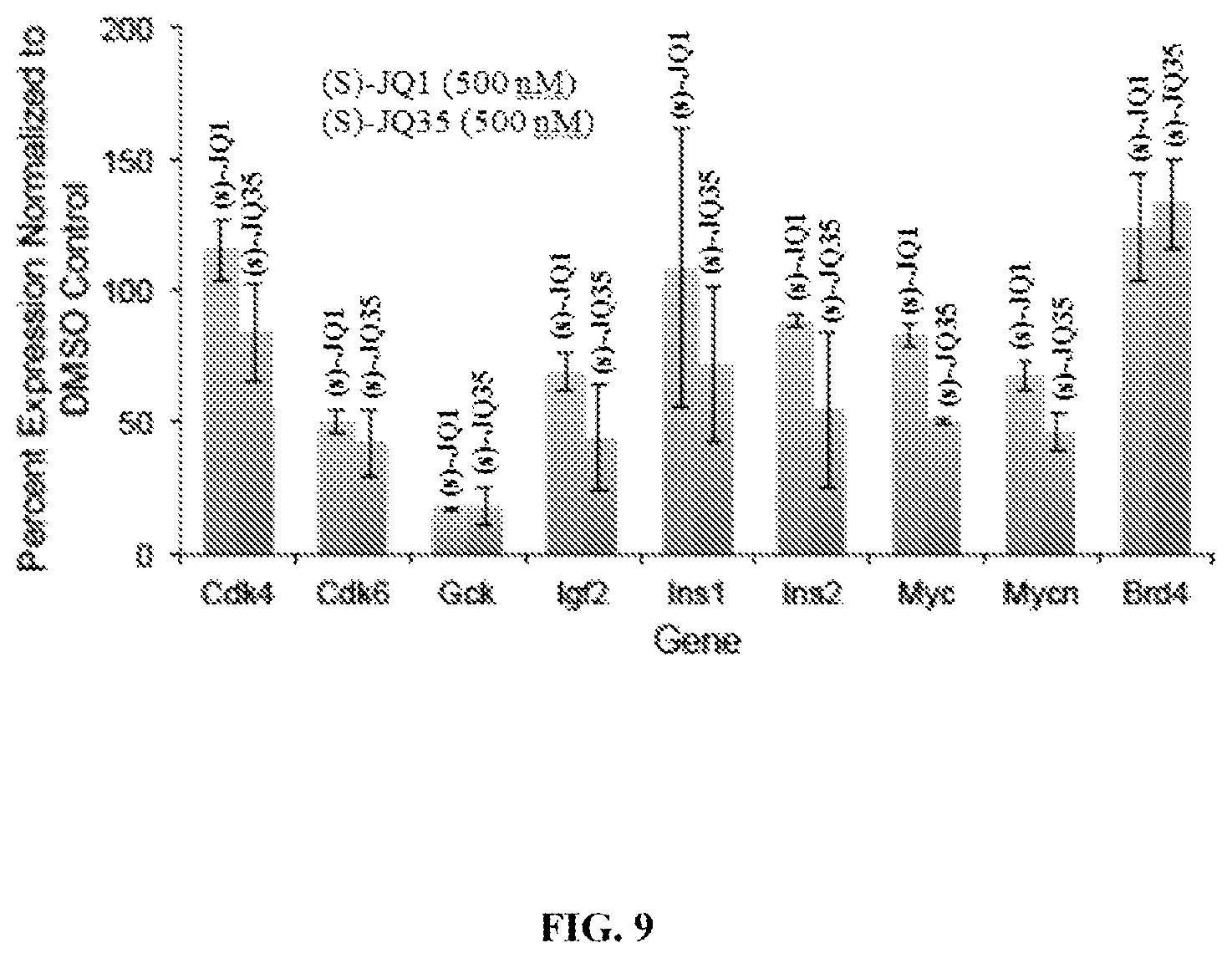
D00010

D00011

D00012

D00013
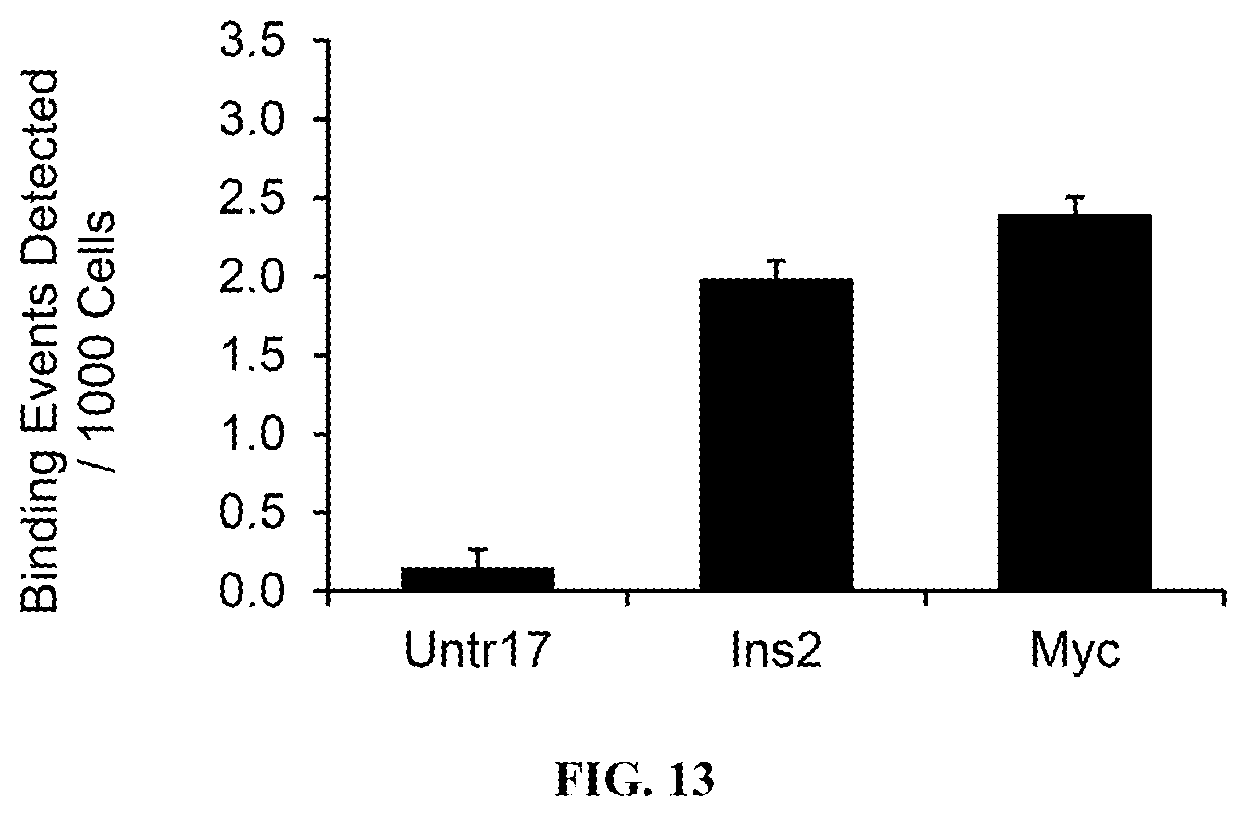
D00014
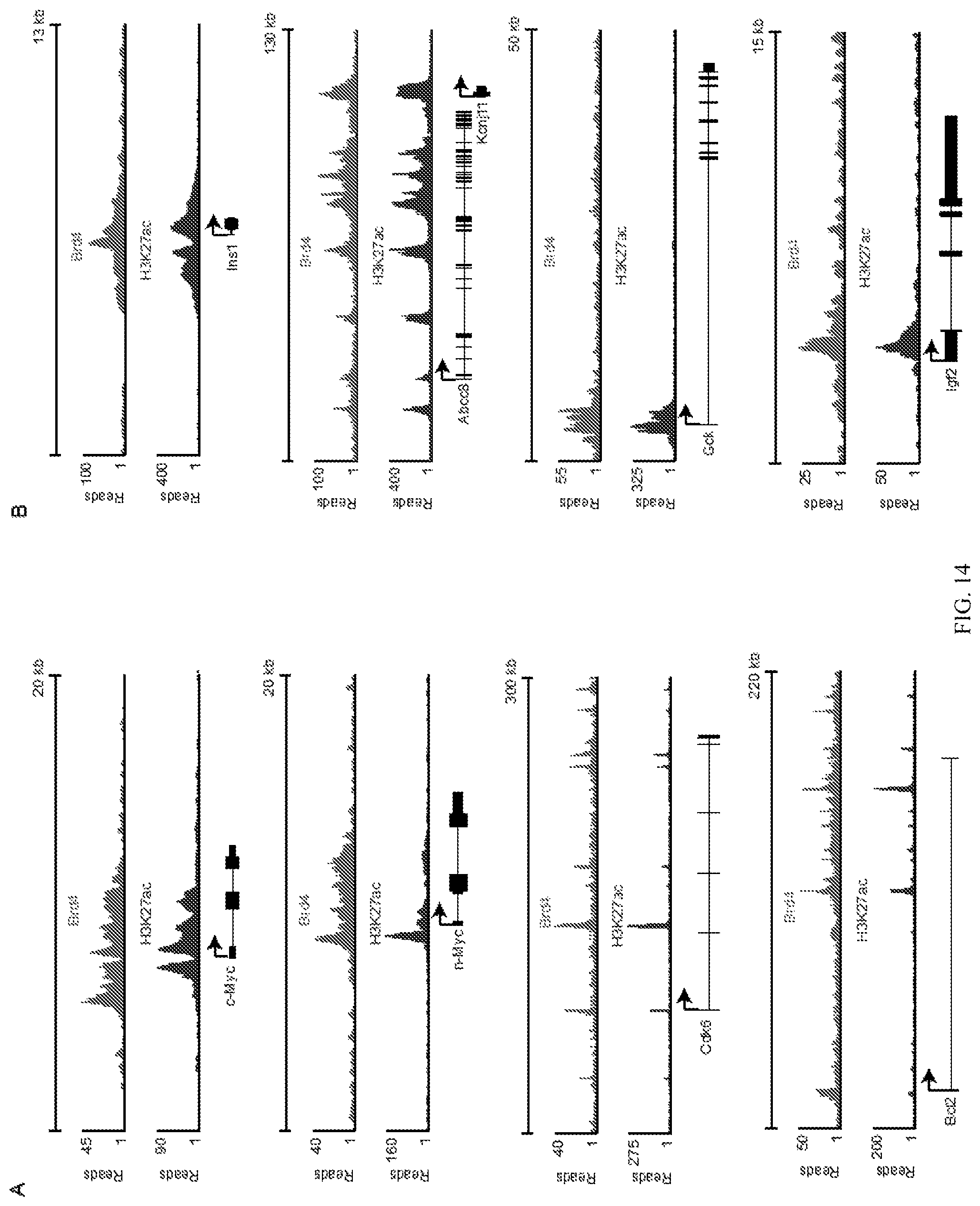
D00015
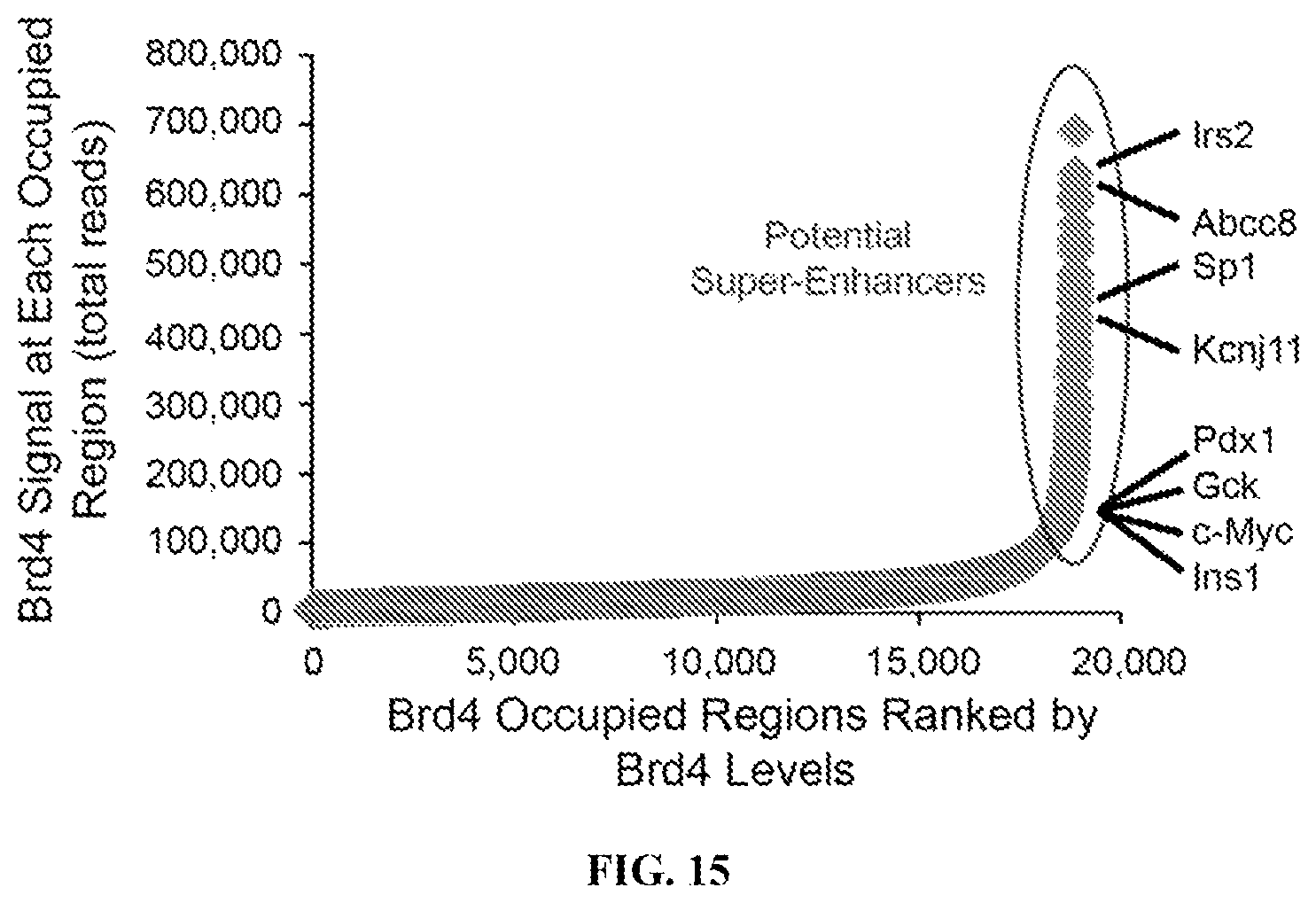
D00016
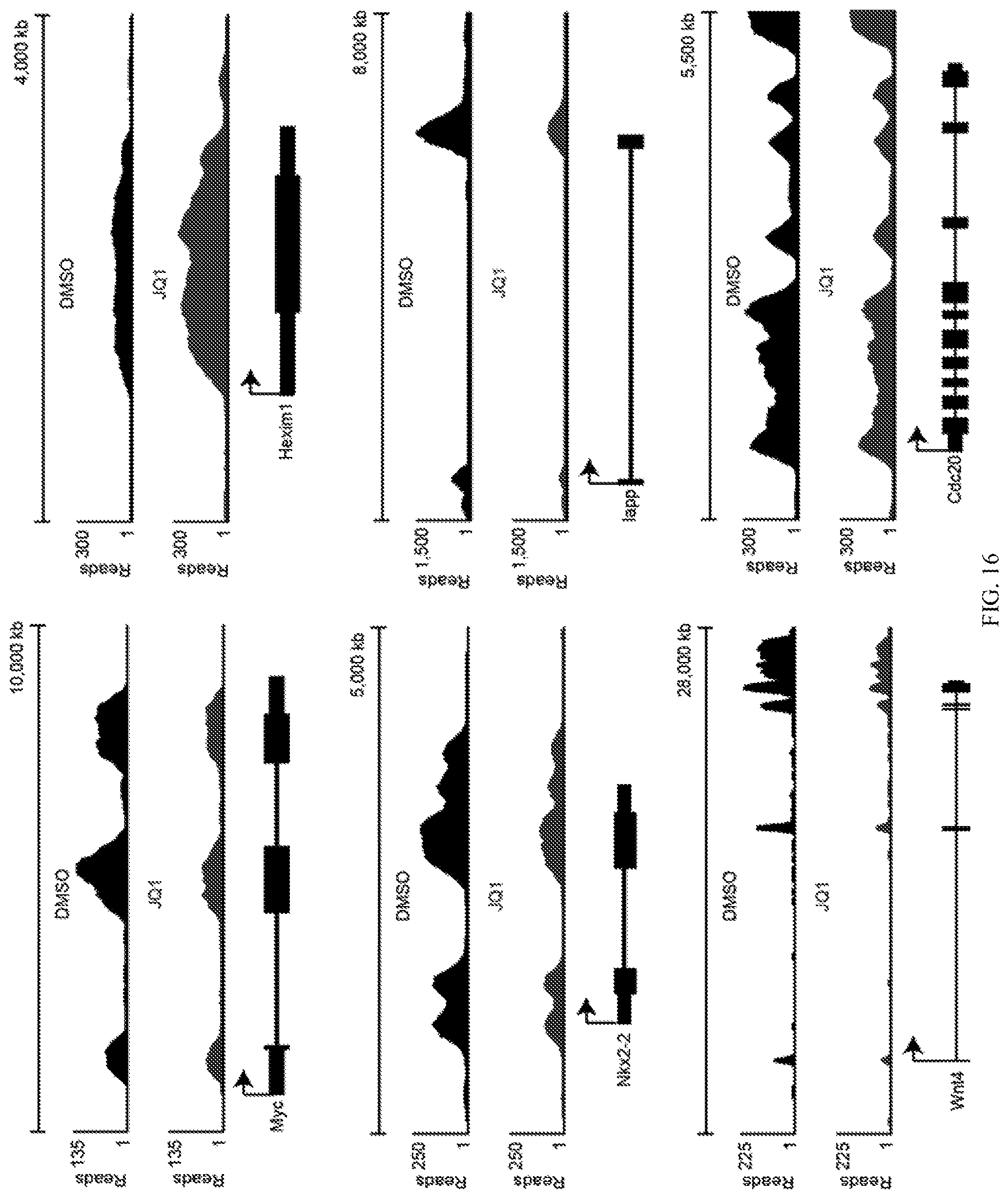
XML
uspto.report is an independent third-party trademark research tool that is not affiliated, endorsed, or sponsored by the United States Patent and Trademark Office (USPTO) or any other governmental organization. The information provided by uspto.report is based on publicly available data at the time of writing and is intended for informational purposes only.
While we strive to provide accurate and up-to-date information, we do not guarantee the accuracy, completeness, reliability, or suitability of the information displayed on this site. The use of this site is at your own risk. Any reliance you place on such information is therefore strictly at your own risk.
All official trademark data, including owner information, should be verified by visiting the official USPTO website at www.uspto.gov. This site is not intended to replace professional legal advice and should not be used as a substitute for consulting with a legal professional who is knowledgeable about trademark law.